Forums
- Forums
- Axis And Allies Forum
- General Discussion
- Aviation News
Aviation News
Post a reply
- Go to Previous topic
- Go to Next topic
- Go to Welcome
- Go to Introduce Yourself
- Go to General Discussion
- Go to Screenshots, Images and Videos
- Go to Off topic
- Go to Works in Progress
- Go to Skinning Tips / Tutorials
- Go to Skin Requests
- Go to IJAAF Library
- Go to Luftwaffe Library
- Go to RAF Library
- Go to USAAF / USN Library
- Go to Misc Library
- Go to The Ops Room
- Go to Made in Germany
- Go to Campaigns and Missions
- Go to Works in Progress
- Go to Juri's Air-Raid Shelter
- Go to Campaigns and Missions
- Go to Works in Progress
- Go to Skinpacks
- Go to External Projects Discussion
- Go to Books & Resources
-
 Main AdminTwo F/A-18 Hornets with Marine Fighter Attack Squadron (VMFA) 314 fly over Southern California during the 2018 Marine Corps Air Station Miramar Air Show on Sept. 28. This year's air show honors "100 years of women in the Marine Corps" by featuring several performances and displays that highlight the accomplishments and milestones women have made since the first female enlistee, Opha May Johnson, who joined the service in 1918. (U.S. Marine Corps photo by Lance Cpl. Jesula Jeanlois)
Main AdminTwo F/A-18 Hornets with Marine Fighter Attack Squadron (VMFA) 314 fly over Southern California during the 2018 Marine Corps Air Station Miramar Air Show on Sept. 28. This year's air show honors "100 years of women in the Marine Corps" by featuring several performances and displays that highlight the accomplishments and milestones women have made since the first female enlistee, Opha May Johnson, who joined the service in 1918. (U.S. Marine Corps photo by Lance Cpl. Jesula Jeanlois)
Two AV-8B Harrier IIs follow a KC-130J Hercules with Marine Aerial Refueler Transport Squadron (VMGR) 352 during 2018 the Marine Corps Air Station Miramar Air Show on MCAS Miramar, Calif., Sept. 28. This year's air show honors "100 years of women in the Marine Corps" by featuring several performances and displays that highlight the accomplishments and milestones women have made since the first female enlistee, Opha May Johnson, who joined the service in 1918. (U.S. Marine Corps photo by Lance Cpl. Jesula Jeanlois)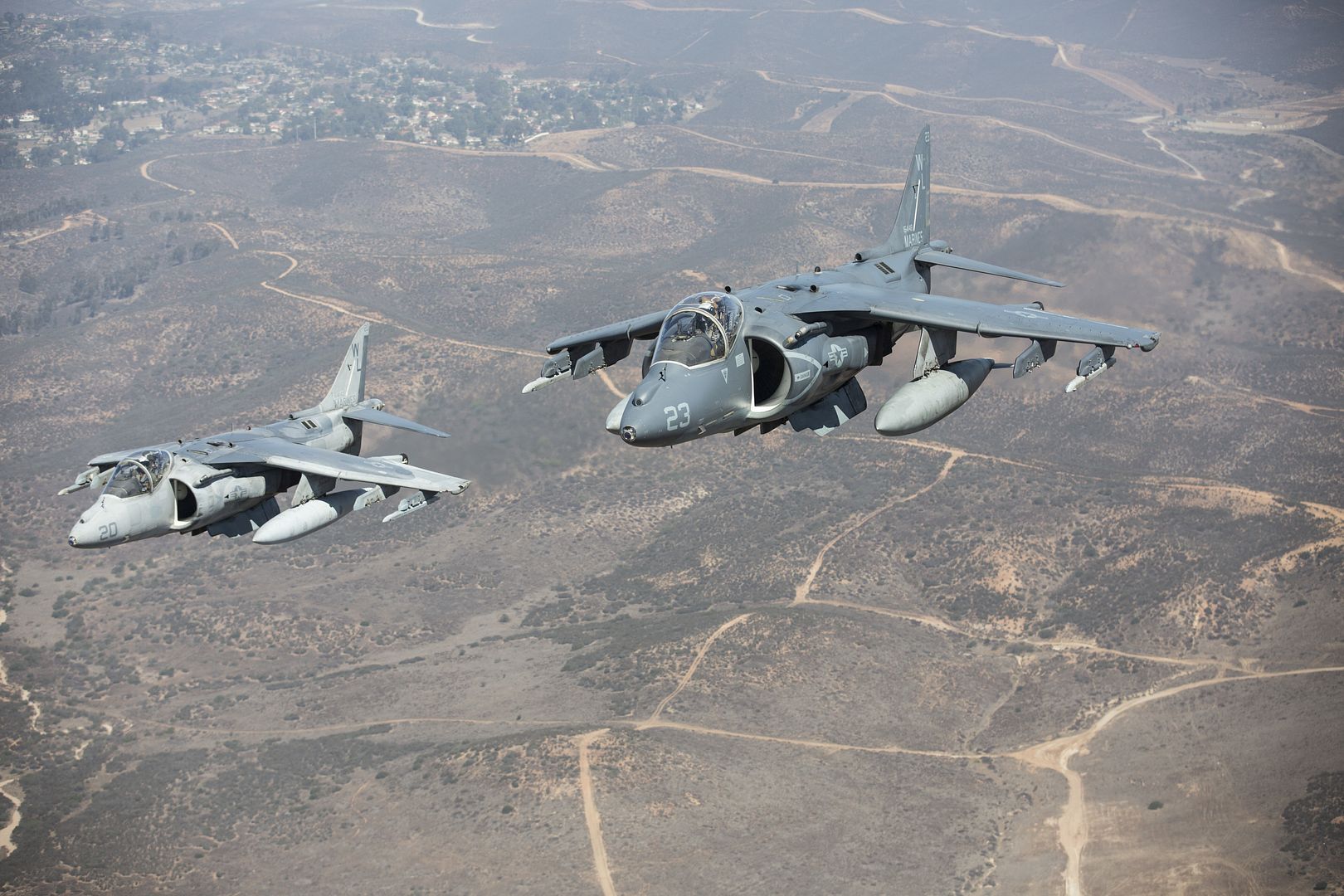
A KC-130J Hercules with Marine Aerial Refueler Transport Squadron (VMGR) 352, Marine Aircraft Group 11, 3rd Marine Aircraft Wing, rests on the flight line prior flying in the 2018 Marine Corps Air Station Miramar Air Show on MCAS Miramar, Calif., Sept. 28. This year's air show honors "100 years of women in the Marine Corps" by featuring several performances and displays that highlights the accomplishments and milestones women have made since the first female enlistee, Opha May Johnson, who joined the service in 1918. (U.S. Marine Corps photo by Lance Cpl. Jesula Jeanlois)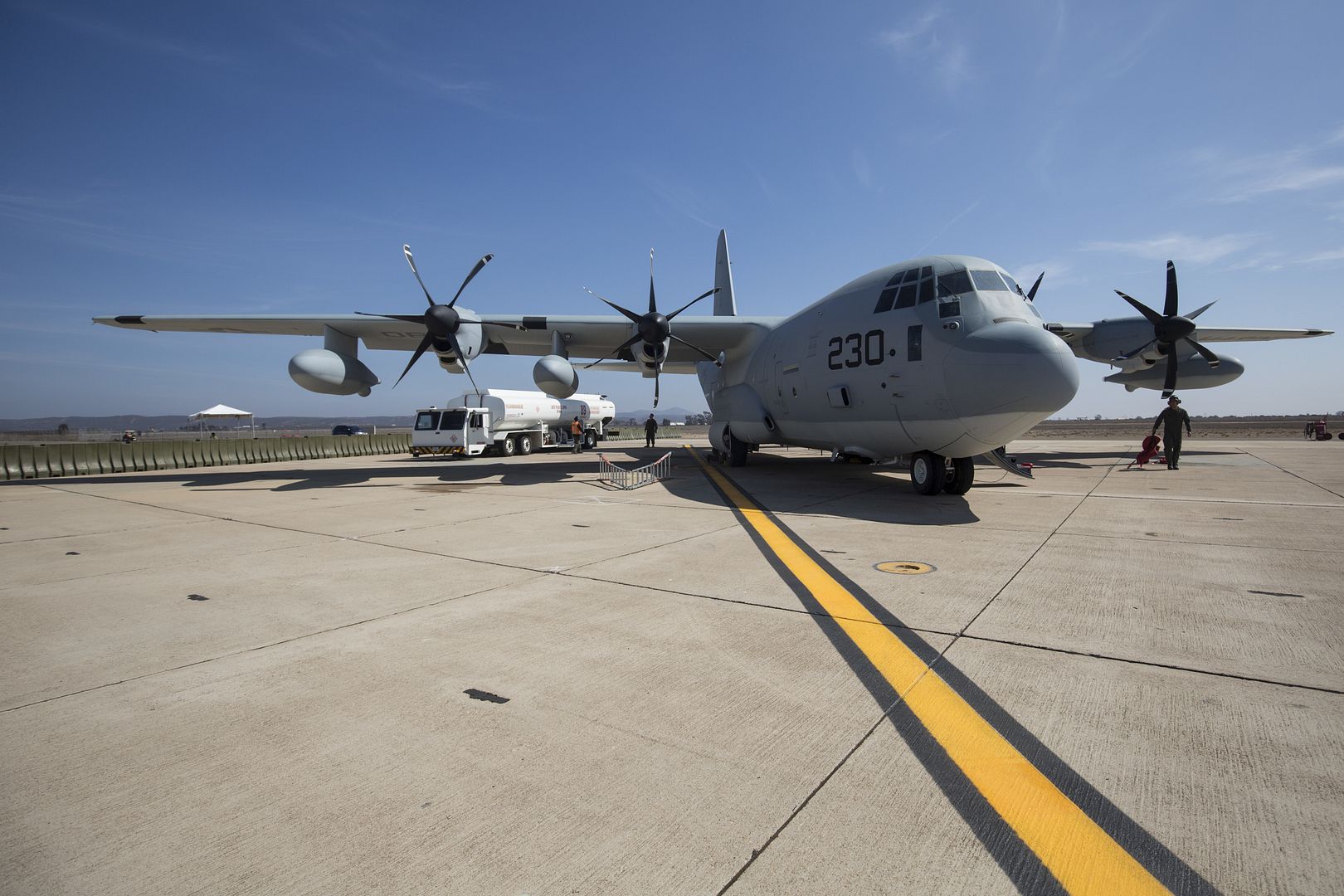
EASTERN PACIFIC OCEAN (Sept. 29, 2018) Aviation Boatswain?s Mate 1st Class Gregory Scott, assigned to amphibious assault ship USS Boxer (LHD 4), signals an AV-8B Harrier, attached to the ?Black Sheep? of Marine Attack Squadron 214 (VMA-214), to take off from the flight deck. Boxer is underway conducting routine operations in the 3rd Fleet area of operations. (U.S. Navy photo by Mass Communication Specialist 3rd Class Brett Anderson/Released)
NORTH SEA (Sept. 30, 2018) An F/A-18E Super Hornet, assigned to the "Knighthawks" of Strike Fighter Squadron (VFA) 136, launches from the Nimitz-class aircraft carrier USS Harry S. Truman (CVN 75). Currently operating in the U.S. 6th Fleet area of operations, Harry S. Truman will continue to foster cooperation with regional allies and partners, strengthen regional stability, and remain vigilant, agile and dynamic. (U.S. Navy photo by Mass Communication Specialist 2nd Class Thomas Gooley/Released)
NORTH SEA (Sept. 30, 2018) Sailors prepare to move an F/A-18E Super Hornet, assigned to the "Knighthawks" of Strike Fighter Squadron (VFA) 136, from the an aircraft elevator to the hangar bay aboard the Nimitz-class aircraft carrier USS Harry S. Truman (CVN 75). Currently operating in the U.S. 6th Fleet area of operations, Harry S. Truman will continue to foster cooperation with regional allies and partners, strengthen regional stability, and remain vigilant, agile and dynamic. (U.S. Navy photo by Mass Communication Specialist 2nd Class Thomas Gooley/Released)
BEALE AIR FORCE BASE, Calif. (AFNS) -- For the first time, the 9th Reconnaissance Wing will open its aperture for recruiting Air Force pilots into the U-2 Dragon Lady through an experimental program beginning in the fall of 2018.
Through the newly established U-2 First Assignment Companion Trainer, or FACT, program, the 9th RW?s 1st Reconnaissance Squadron will broaden its scope of pilots eligible to fly the U-2 by allowing Air Force student pilots in Undergraduate Pilot Training the opportunity to enter a direct pipeline to flying the U-2.
?Our focus is modernizing and sustaining the U-2 well into the future to meet the needs of our nation at the speed of relevance,? said Col. Andy Clark, 9th RW commander. ?This new program is an initiative that delivers a new reconnaissance career path for young, highly qualified aviators eager to shape the next generation of (reconnaissance) warfighting capabilities.?
The FACT pipeline
Every undergraduate pilot training student from Air Education and Training Command?s flying training locations, during the designated assignment window, is eligible for the FACT program.
UPT students will now have the opportunity to select the U-2 airframe on their dream sheets just like any other airframe.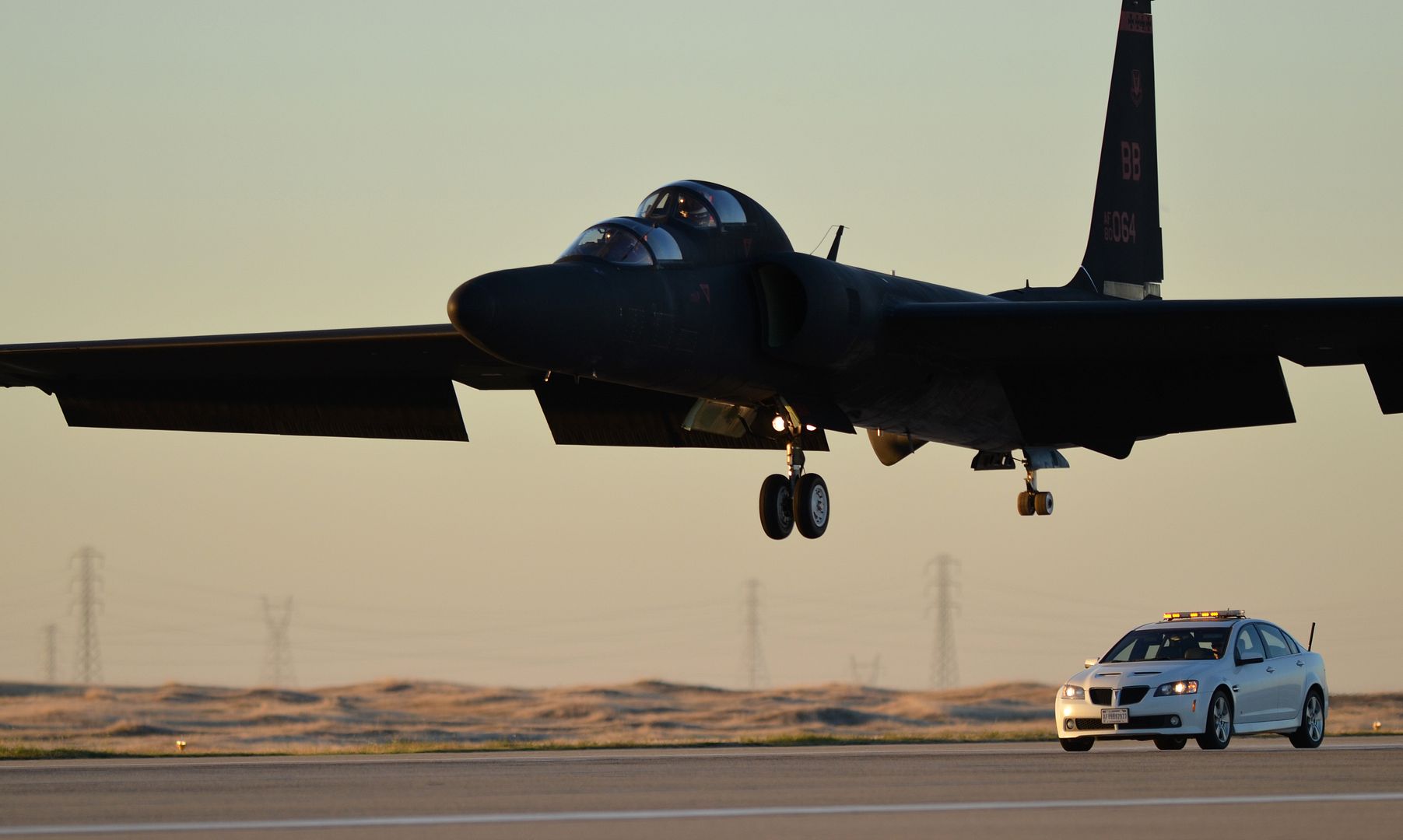
The first FACT selectee is planned for the fall 2018 UPT assignment cycle and the next selection will happen about six months later.
After selection, the FACT pilot attends the T-38 Pilot Instructor Training Course at Joint Base San Antonio-Randolph, Texas, before a permanent change in station to Beale Air Force Base, Calif.
For the next two years, the selectee will serve as a T-38 Talon instructor pilot for the U-2 Companion Trainer Program.
?Taking on the task of developing a small portion of our future leaders from the onset of his or her aviation career is something we?re extremely excited about,? said Lt. Col. Carl Maymi, 1st RS commander. ?U-2 FACT pilots will have an opportunity to learn from highly qualified and experienced pilots while in turn teaching them to fly T-38s in Northern California. I expect rapid maturation as an aviator and officer for all that get this unique opportunity.?
After the selectee gains an appropriate amount of experience as an instructor pilot, they will perform the standard two-week U-2 interview process, and if hired, begin Basic Qualification Training.
After the first two UPT students are selected and enter the program, the overall direction of the FACT assignment process will be assessed to determine the sustainability of this experimental pilot pipeline.
Broadening candidate diversity
Due to the uniquely difficult reconnaissance mission of the U-2, as well as it's challenging flying characteristics, U-2 pilots are competitively selected from a pool of highly qualified and experienced aviators from airframes across the Department of Defense inventory.
The selection process includes a two-week interview where candidates? self-confidence, professionalism and airmanship are evaluated on the ground and in the air while flying three TU-2 sorties.
Traditionally, a U-2 pilot will spend a minimum of six years gaining experience outside of the U-2?s reconnaissance mission before submitting an application.
As modernization efforts continue for the U-2 airframe and its mission sets, pilot acquisition and development efforts are also changing to help advance the next generation of reconnaissance warfighters. The FACT program will advance the next generation through accelerating pilots directly from the UPT programs into the reconnaissance community, mitigating the six years of minimum experience that current U-2 pilots have obtained.
?The well-established path to the U-2 has proven effective for over 60 years,? Maymi, said. ?However, we need access to young, talented officers earlier in their careers. I believe we can do this while still maintaining the integrity of our selection process through the U-2 FACT program.?
Developing the legacy for the future
FACT aims to place future U-2 warfighters in line with the rest of the combat Air Force?s career development timelines to include potential avenues of professional military education and leadership roles. One example would include an opportunity to attend the new reconnaissance weapons instructors course, also known as reconnaissance WIC, which was recently approved to begin the process to be established as first-ever reconnaissance-focused WIC at the U.S. Air Force Weapons School at Nellis Air Force Base, Nevada.
?This program offers FACT-selected pilots enhanced developmental experience and prepares them for diverse leadership opportunities, including squadron and senior leadership roles within the reconnaissance community,? Clark said.
The FACT program highlights only one of the many ways the Airmen at Beale AFB work to innovate for the future.
?Beale (AFB) Airmen are the beating heart of reconnaissance; they are always looking for innovative ways to keep Recce Town flexible, adaptable, and absolutely ready to defend our nation and its allies,? Clark said. ?(Senior leaders) tasked Airmen to bring the future faster and maximize our lethality?to maintain our tactical and strategic edge over our adversaries. This program is one practical example of (reconnaissance) professionals understanding and supporting the priorities of our senior leaders?and it won?t stop here.?
By 1st Lt. Brittany Curry, 9th Reconnaissance Wing Public Affairs / Published October 01, 2018.
SEATTLE, Oct. 1, 2018 /PRNewswire/ -- Boeing [NYSE:BA] and United Airlines today announced the carrier is expanding its 787 Dreamliner fleet again with a new order for nine 787-9 airplanes, the longest-range member of the super-efficient Dreamliner family. The deal is valued at $2.53 billion according to list prices.
United Airlines says the order reflects its fleet strategy of replacing older widebody jets with new, advanced airplanes such as the 787-9, which can fly farther and use 20 percent less fuel with 20 percent fewer emissions. The U.S. carrier, which announced a purchase of four 787-9s in July, has now ordered a total of 64 Dreamliners.
The latest deal continues the strong momentum for the 787 Dreamliner family, with net orders now above 100 for the year and just one shy of 1,400 since the start of the program. Nearly half of all 787 customers have returned to place additional orders for the airplane, helping to make it the fastest-selling widebody jet in history.
"The 787 Dreamliner has been so successful in the marketplace because of great partners like United Airlines that have taken the airplane's unrivaled performance to open new routes and offer passengers a wonderful travel experience," said Ihssane Mounir, senior vice president of Commercial Sales & Marketing for The Boeing Company. "It makes all of us very proud to have United place a repeat order since its team has spent a lot of time with the Dreamliner and knows what it can do."
United began flying the Dreamliner in 2012, using the long range and fuel efficiency of the 787-8 and 787-9 to serve intercontinental routes such as Houston to Sydney and San Francisco to Singapore. The 787-9 can fly up to 7,635 nautical miles (14,140 kilometers) and serve 290 passengers in a standard configuration.
Later this year, the carrier is set to take delivery of the largest member of the Dreamliner family, the 787-10, which can seat up to 330 passengers in a standard configuration. While the airplane is capable of flying long distances with a range of 6,430 nautical miles, United today announced plans to debut its first 787-10 on premium transcontinental routes in the U.S., boosting its coast-to-coast schedules to offer passengers travelling between New York/Newark and Los Angeles and San Francisco more flights and more premium seats.
Since entering service in 2011, the 787 family has flown nearly 280 million passengers while saving an estimated 28.7 billion pounds of fuel.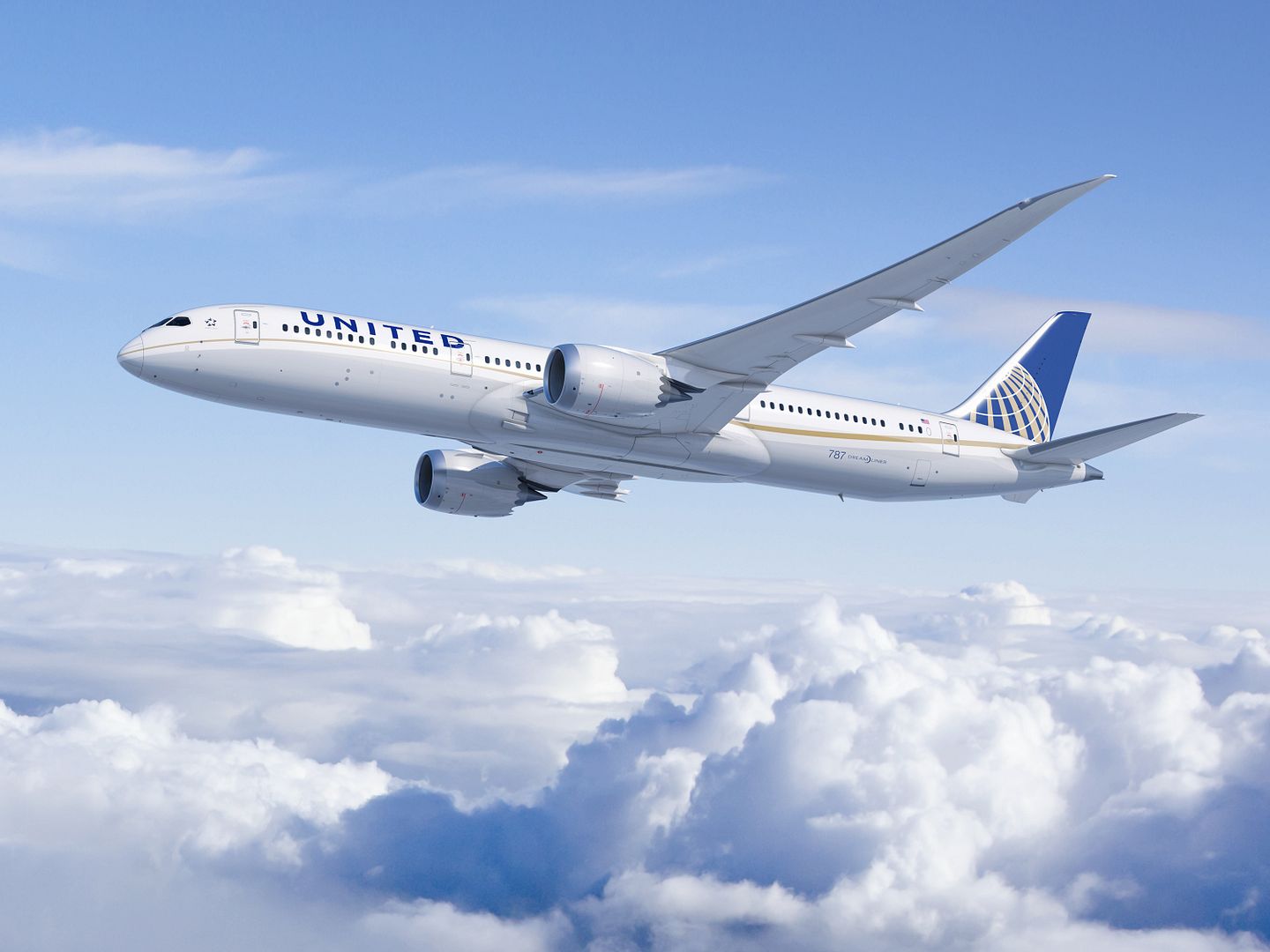
01 October 2018
Qatar Airways has upsized five A350-900s currently on order to the bigger A350-1000 version. This latest endorsement for the largest member of Airbus? successful A350 XWB family reflects the five-star-airline?s need for growth and capacity at the best comfort and efficiency levels available.
The amended order reinforces Qatar Airways? position as the largest A350-1000 customer with a fleet of 42 aircraft. The A350-1000?s fuselage is seven metres longer than its smaller brethren, providing greater capacity (44 more seats in Qatar Airways cabin configuration) that perfectly matches airlines? needs on their growing long-haul routes.
Qatar Airways Group Chief Executive, His Excellency Mr. Akbar Al Baker said: ?Qatar Airways is delighted to have upgraded five of its previously ordered A350-900 to the more recently launched A350-1000. Since taking delivery of the world?s first A350-1000 in February 2018, we have been extremely pleased with the aircraft?s performance, which has prompted us to update our original order. The A350-1000 has been a welcome addition to our fleet and very well received by our passengers who enjoy the new generation aircraft?s unprecedented levels of comfort and technology.?
?Since its entry into service, the A350 Family has proven outstanding reliability and efficiency. We are delighted to see launch customer Qatar Airways extend its confidence in the A350-1000?, said Guillaume Faury, President Airbus Commercial Aircraft. ?Qatar Airways is renowned for its standards of excellence, and we are pleased the A350-1000 delivers to their expectations, being the aircraft of choice to seamlessly increase capacity in unprecedented comfort on its growing long-haul routes.?
Qatar Airways? A350-1000s features the unique Qsuite ? the airline?s signature business class seating that offers a new level of innovation for in-flight comfort.
With 76 aircraft on order, Qatar Airways is the largest A350 XWB customer and currently operates 30 A350 XWBs comprising of 27 A350-900s and 3 A350-1000s.
Since its entry into service, the A350-1000 has demonstrated unsurpassed efficiency, economics and remarkable operational reliability.
The A350 XWB is an all new family of mid-size wide-body long-haul airliners shaping the future of air travel. The A350 XWB features the latest aerodynamic design, carbon fiber fuselage and wings, plus new fuel-efficient Rolls-Royce engines. Together, these latest technologies translate into unrivalled levels of operational efficiency, with a 25 per cent reduction in fuel burn and emissions, and significantly lower maintenance costs. The A350 XWB features an Airspace cabin which, on top of the aircraft spaciousness and quietness, provides better ambience, design and services, contributing to superior levels of comfort and well-being, and setting new standards in terms of flight experience for all passengers.
To date, Airbus has recorded a total of 890 firm orders for the A350 XWB from 46 customers worldwide, already making it one of the most successful widebody aircraft ever.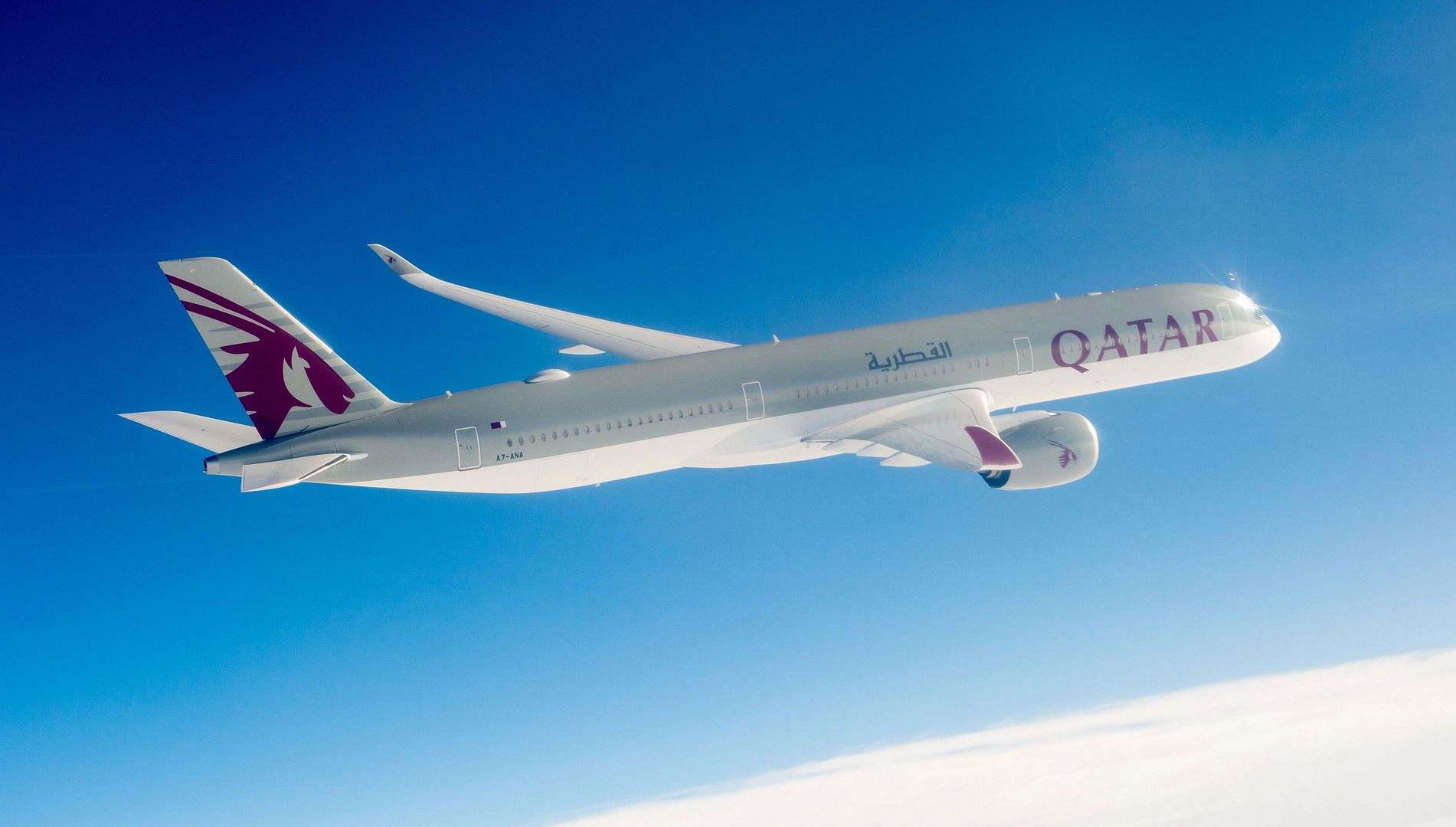
Lufthansa Group has converted 27 A320neo Family options into firm orders. Following a decision by the company?s supervisory board, the Group signed for an additional 24 Airbus A320neo and three A321neo aircraft. Ten of the aircraft will be deployed with Lufthansa Group?s Swiss International Air Lines. Part of the order will be powered by PW engines and the other by CFM LEAP-1A, so both engine types are represented nearly equally within the Lufthansa Group.
The latest agreement brings Lufthansa Group?s total order for the A320neo Family to 149 (101 A320neo and 48 A321neo) with 13 already in operation. Lufthansa was the launch operator of the A320neo.
"Lufthansa Group is one of the largest and most experienced A320 Family operators worldwide. We are gratified to see this additional order by such a stellar customer,? says Christian Scherer, Airbus Chief Commercial Officer. ?By operating the A320neo Family, Lufthansa consolidates its commitment to the highest standards of efficiency and noise reduction.?
The A320neo Family incorporates the very latest technologies including new generation engines and Sharklets, which together deliver at least 15 percent fuel savings at delivery and 20 percent by 2020. With more than 6,100 orders received from more than 100 customers, the A320neo Family has captured some 60 percent share of the market.
-
 Main AdminA P-38 Lightning and F-35A Lightning II fly in formation as part of a Heritage Flight display during the California Capital Airshow, Sept. 21, 2018, in Sacramento, Calif. The Heritage Flight display showcases the progression of our nation?s aviation history and represents the past, present, and future of Air Force airpower. (U.S. Air Force photo by Senior Airman Alexander Cook)
Main AdminA P-38 Lightning and F-35A Lightning II fly in formation as part of a Heritage Flight display during the California Capital Airshow, Sept. 21, 2018, in Sacramento, Calif. The Heritage Flight display showcases the progression of our nation?s aviation history and represents the past, present, and future of Air Force airpower. (U.S. Air Force photo by Senior Airman Alexander Cook)
Steve Hinton flies a P-38 Lightning in front of the moon during the Airshow After Dark performance at the California Capital Airshow, Sept. 21, 2018, in Sacramento, Calif. The AAD performance featured aerobatic performers who lit up the sky with streaming flares and showers of colorful bursts from their wings and thundering pyrotechnics. (U.S. Air Force photo by Senior Airman Alexander Cook)
NORTH ATLANTIC (Sept. 25, 2018) An F-35B Lightning II fighter jet aboard the Royal navy aircraft carrier HMS Queen Elizabeth (R08). (U.S. Navy photo courtesy of the Royal navy by LPhot Kyle Heller/Released)
NORTH ATLANTIC (Sept. 25, 2018) Royal navy Cmdr. Nathan Gray, test pilot with the F-35 Integrated Test Force at Naval Air Station Patuxent River, Md., gives a celebratory thumbs up after making the first ever F-35B Lightning II fighter jet vertical landing aboard the Royal navy aircraft carrier HMS Queen Elizabeth (R08). The F-35B Lightning IIs aboard Elizabeth lay the foundation for the next 50 years of fixed wing aviation in support of the United Kingdom's carrier strike capability. (U.S. Navy photo courtesy of the Royal navy by PO Arron Hoare/Released)
NORTH ATLANTIC (Sept. 25, 2018) An F-35B Lightning II fighter jet aboard the Royal navy aircraft carrier HMS Queen Elizabeth (R08). (U.S. Navy photo courtesy of the Royal navy by PO Arron Hoare/Released)
A U.S. Air Force KC-135 Stratotanker (Tail #63-7999) assigned to the 100th Air Refueling Wing sits on the flightline at RAF Mildenhall, England, Sept. 11, 2018. Tail number 63-7999 is nicknamed ?Boss Lady.? The 100th Air Refueling Wing is RAF Mildenhall's current host wing and the only permanent U.S. air refueling wing in the European theater, activated here on February 1, 1992. The wing provides the critical air refueling "bridge" that allows the Expeditionary Air Force to deploy around the globe on a moment's notice. (U.S. Air Force photo's by Senior Airman Luke Milano)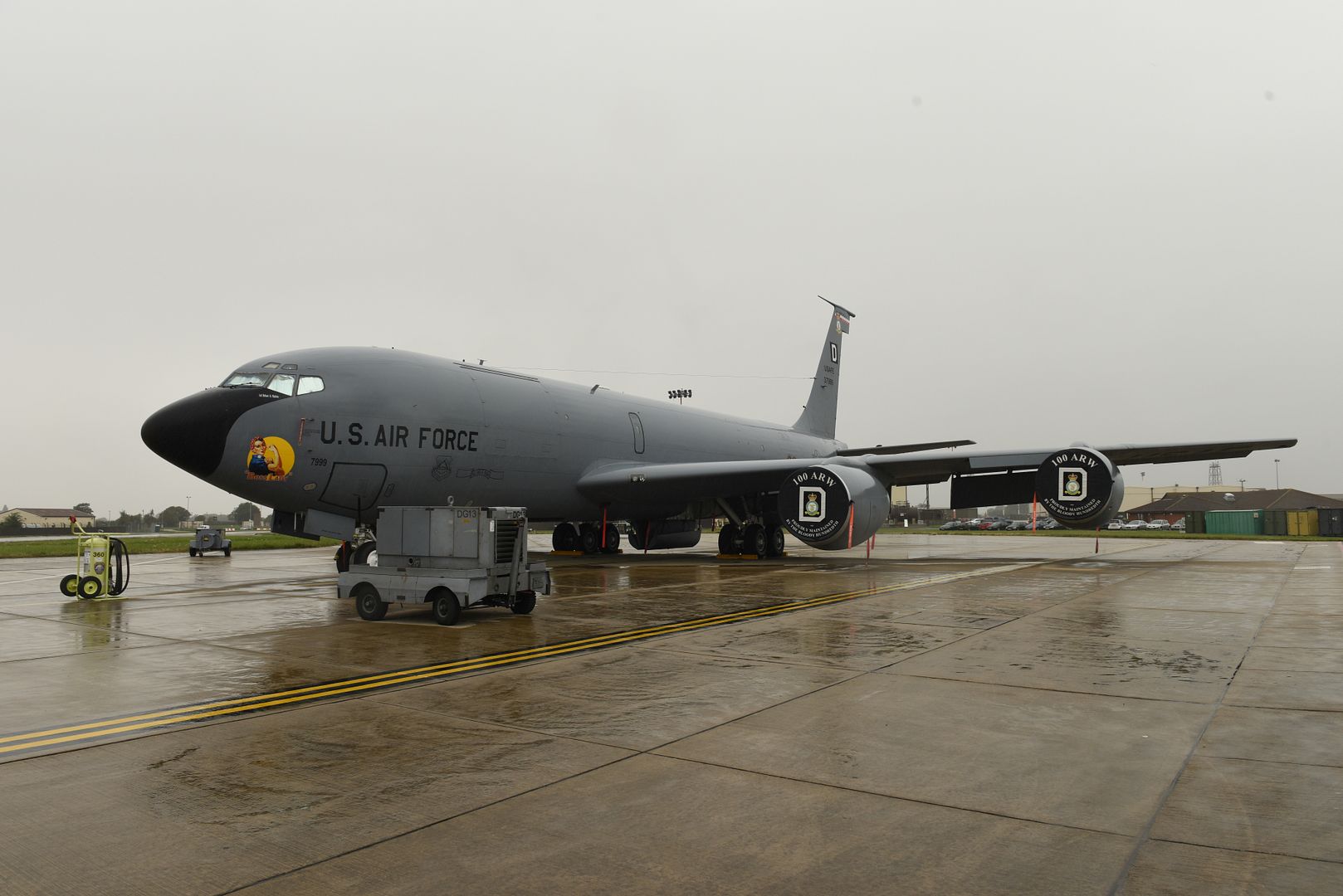
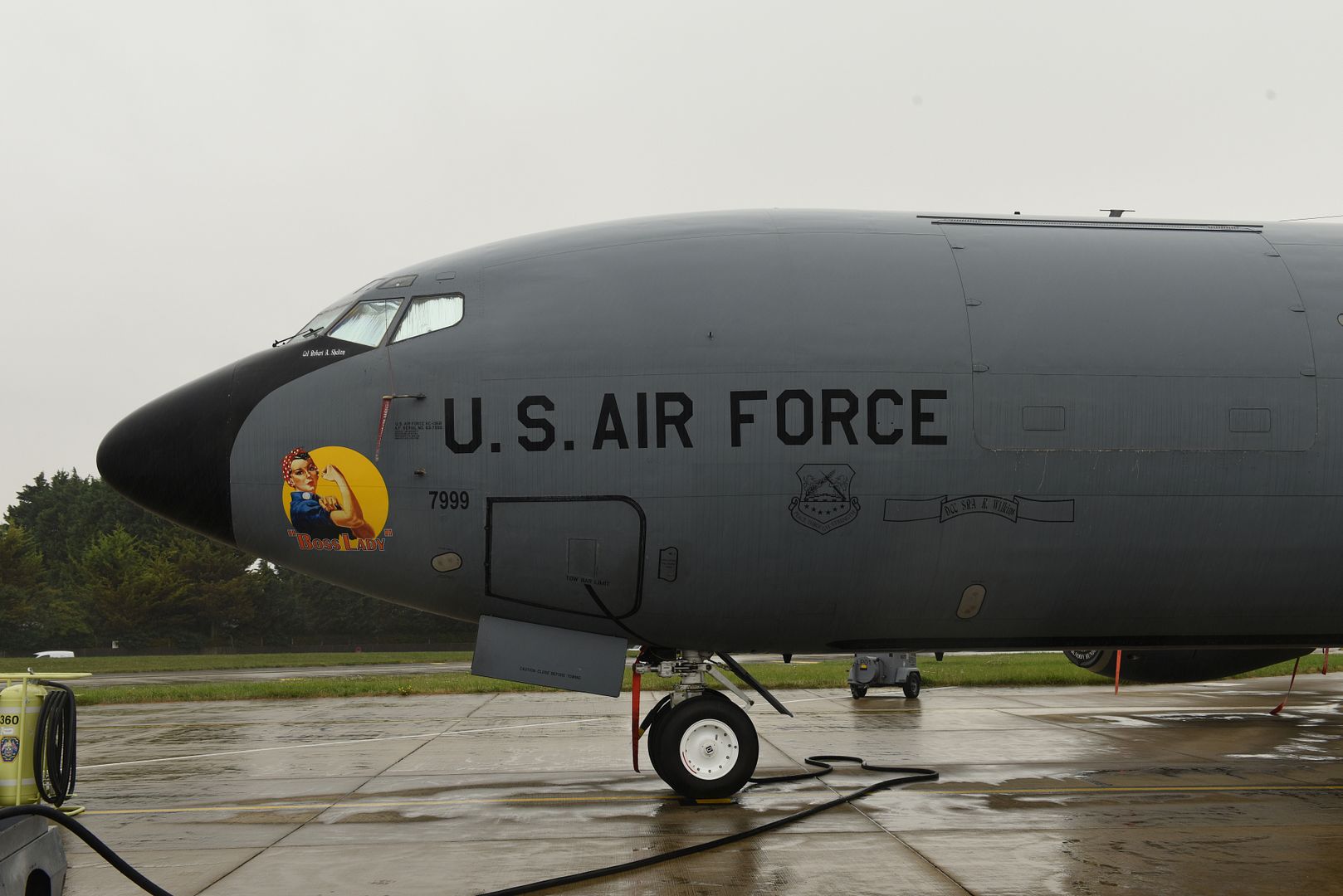

NORTH CHARLESTON, S.C., Oct. 2, 2018 /PRNewswire/ -- Boeing [NYSE:BA], Air Lease Corp. [NYSE:AL; "ALC"], and EVA Air today celebrated the delivery of the airline's first 787-9 Dreamliner, via lease from ALC, at Boeing's South Carolina Delivery Center. EVA Air plans to debut the long-range and super-efficient airplane in November on international routes.
"This milestone delivery marks the beginning of a new era for EVA Air as we continue to revolutionize Taiwan's dynamic commercial aviation industry," said Steve Lin, Chairman of EVA Air. "The 787 Dreamliner's extraordinary efficiency and passenger pleasing cabin features will further elevate EVA Air's position as a five-star global airline. We are excited to introduce the 787 into our fleet and they will play an integral role in our success going forward."
Built with lightweight composite materials and powered by advanced GEnx engines from General Electric (GE) Aviation, the 787 Dreamliner family lowers operating costs by more than 20 percent compared to previous airplanes, and nearly 10 percent compared to today's competing jets.
Today's delivery marks the first of 24 Dreamliners for the Taipei-based airline. In 2015, EVA Air announced a landmark order for 18 787-10 airplanes along with plans to operate four 787-9s and two 787-10s on lease from ALC. This remains the largest commercial airplane purchase in Taiwan's history.
"ALC is pleased to deliver this historic first Boeing 787-9 to EVA Air and further our strong relationship with a world-class airline," said Steven Udvar-H?zy, Executive Chairman of Air Lease Corporation. "As the first airline in Taiwan to operate a Boeing 787-9 Dreamliner, EVA Air will continue to excel as a leading international airline with the most technologically advanced and fuel-efficient fleet."
"We are extremely honored that EVA will be introducing the new 787 Dreamliner to their world-class fleet," said Kevin McAllister, President and CEO of Boeing Commercial Airplanes. "This milestone delivery signals yet another chapter in our enduring partnership with EVA. I am confident that the market-leading capabilities of the 787 will contribute immensely to the airline's long-term success."
A member of Star Alliance, EVA Air serves international routes with approximately 565 weekly flights. Onboard the airline's new 787 Dreamliner, passengers can experience EVA Air's new Royal Laurel business class seats designed by Designworks, a BMW Group company. At 23 inches wide, the new seats feature privacy panels, full lie-flat capabilities as well as enhanced in-flight entertainment systems. EVA Air also partnered with Teague, to redesign its economy class seats, which are produced by Recaro.
To improve the operational efficiency of its 787s, EVA Air plans to use a variety of Boeing Global Services tools, including Maintenance Performance Toolbox, Airplane Health Management and the electronic flight bag product.
The airline will also use Component Services, where Boeing and its partners own, manage and maintain a global pool of high-value rotable parts, components and line-replaceable units (LRU) for convenient access.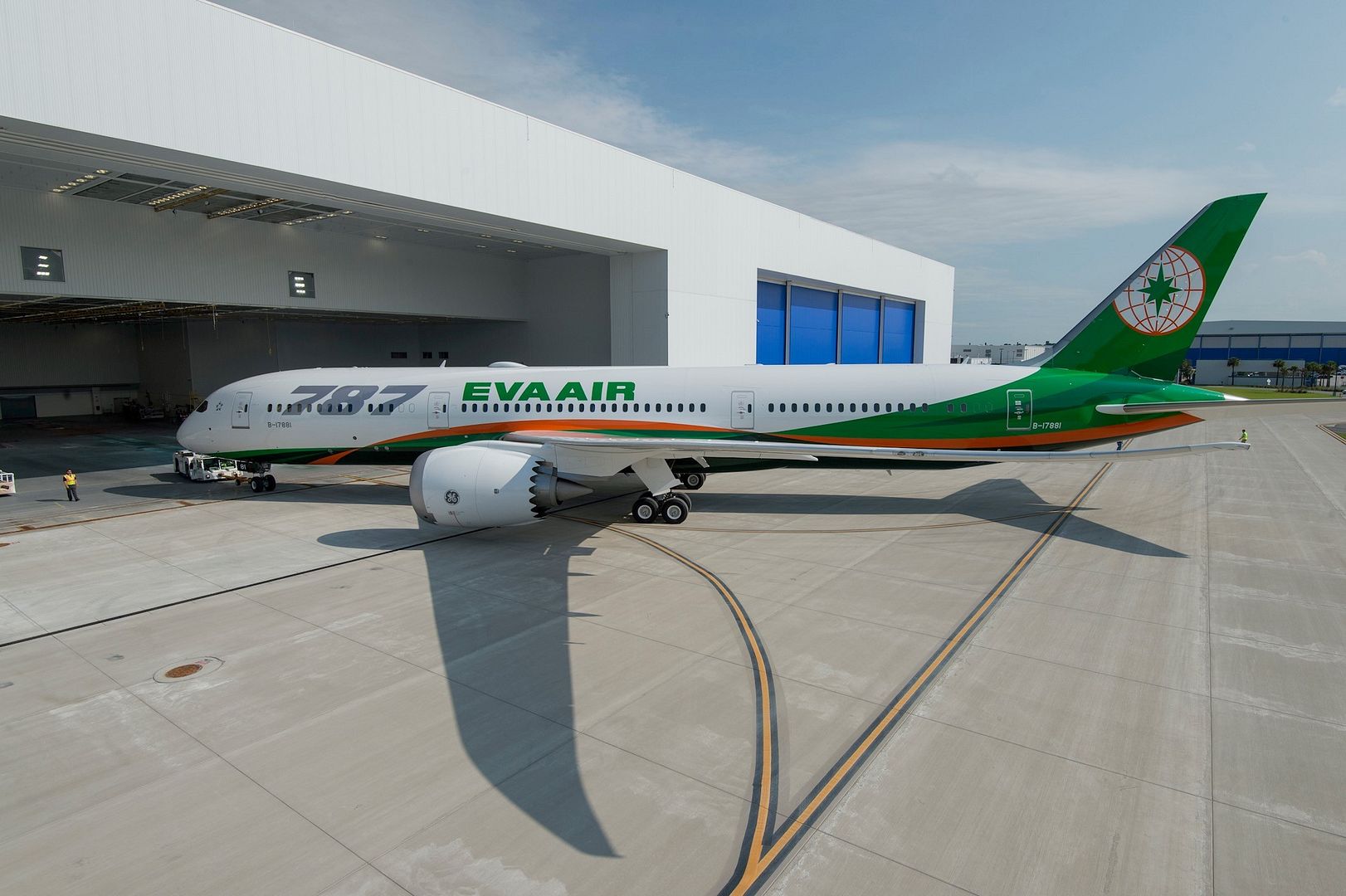
Oxford, Airbus Helicopters completion of delivery of 29 Helionix equipped H135s and three Helionix, hoist-equipped H145s earlier this year, marked the end of the delivery phase of the MFTS contract. Today, the company has completed its service provision build up and is fully embedded at RAF Shawbury and RAF Valley, supporting Ascent?s Training delivery from newly modernised facilities. On 1st April 18, the precise date of the RAF Centenary, Airbus Helicopters was confirmed by Ascent and the Ministry of Defence as being ready for training use for the UK MFTS rotary wing element. Since contract signature on 16 May 2016 to ready for training on 1st April 2018, Airbus Helicopters has delivered on time and to cost against an extremely demanding timescale.
The Entry into Service of the H135 Juno and H145 Jupiter in 2018 marks 45 years and three generations of Airbus Helicopters aircraft providing continuous military flying training in the UK; following the selection of the SA341 Gazelle in 1973 for the Navy, Army and the RAF Central Flying School (Helicopters) and the choice of AS350 Squirrels in 1997 for the Defence Helicopter Flying School.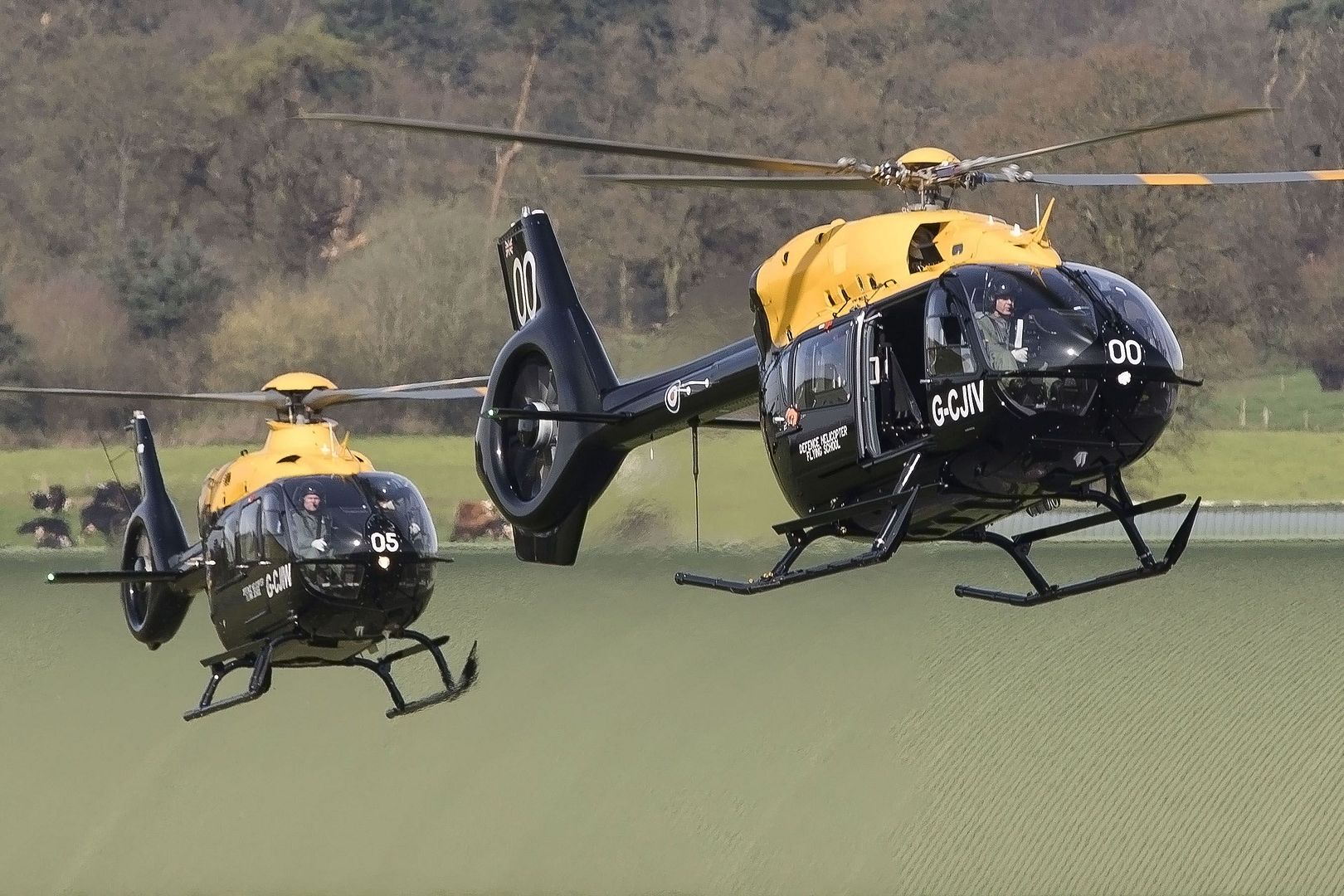
Readiness to start ?Long Range? (LR) operations with launch customers of the most capable and flexible A321neo version to date ? the A321LR ? has moved a significant step closer with recent joint EASA and FAA approval of the aircraft to operate with up to three underfloor Additional Centre Tanks (ACTs), including for ETOPS operation.
This latest milestone is one of various A321neo capability options which when combined, allow the A321LR version to fly up to 4,000nm with 206 passengers with extra fuel stored in three ACTs, including on ETOPS routes. Moreover, the ETOPS authorisation enables up to 180 minutes single-engine diversion time, which is sufficient for performing any transatlantic route.
The A321LR?s certification includes: (a) approval of the ?major change? to install up to three optional ACTs in the A321neo ? with their associated new fuel management systems and lower-fuselage structural reinforcements; and (b) the approval of the A321neo?s ?Airbus Cabin Flex? (ACF) option which incorporates a modified fuselage structure with new door arrangements together with a higher Maximum Take-Off Weight (MTOW) capability of up to 97 metric tonnes. It should be noted that only A321neos which have the new ACF structure can offer the 97t MTOW and the ability to install three ACTs. Previously, the A321 Family could accommodate up to two ACTs.
While the ACF configuration will become standard for all new delivered A321neos from around 2020, the 97t MTOW capability and the ability to carry up to three ACTs will be options. For the ACTs, customers would specify prior to aircraft manufacture whether the aircraft is to be equipped with an expanded fuel management system as well as the necessary structural reinforcements to secure the underfloor ACTs.
The ability to add or remove ACTs, combined with the Airbus Cabin Flex, the 97t MTOW capability and the EASA/FAA approval to use the ACTs with ETOPS, together confer unprecedented airline flexibility for cabin layouts, seating density, cargo payload, fuel-capacity and mission routing.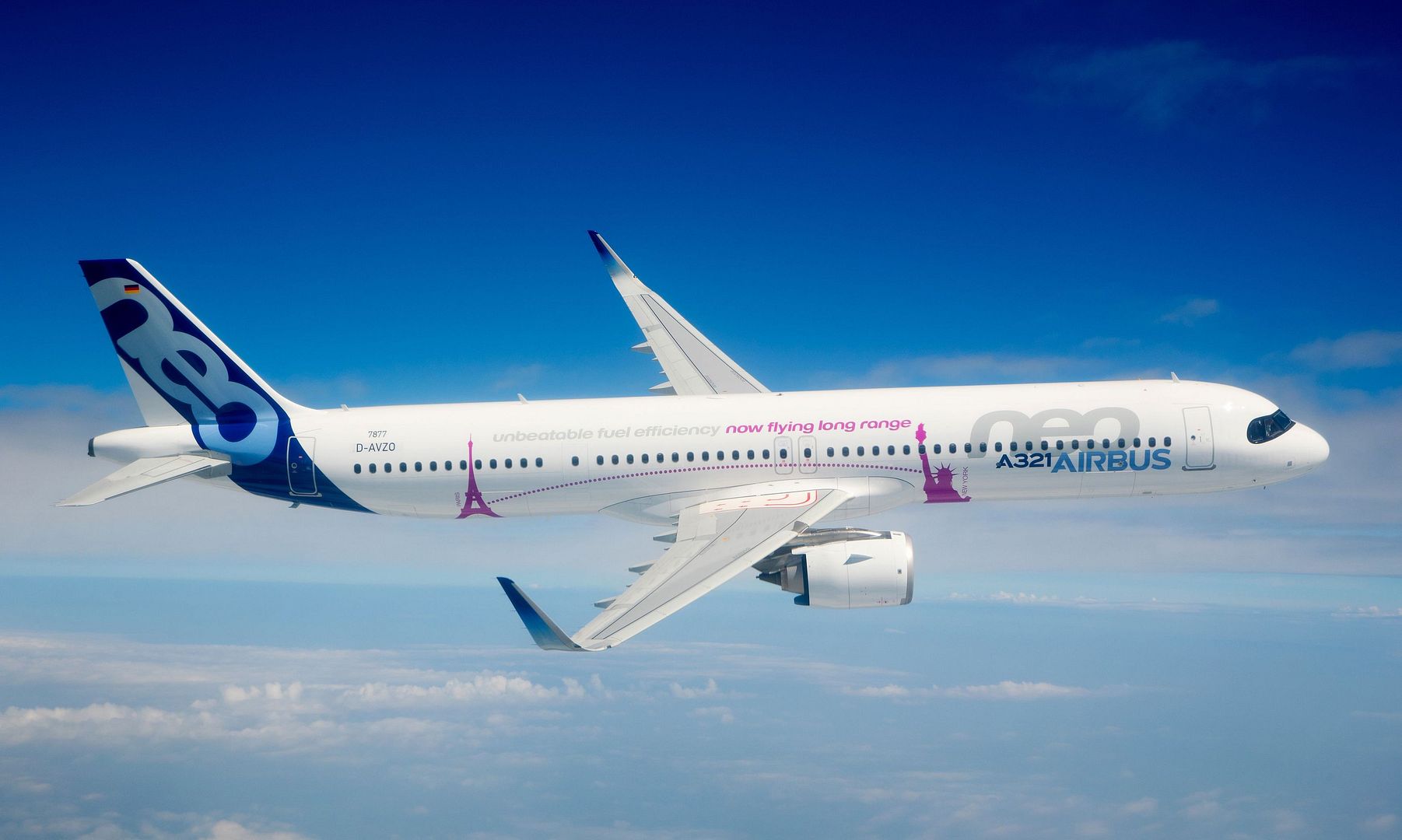
Fort Worth, TX (October 1, 2018) Bell Helicopter, a Textron Inc. (NYSE: TXT) company, announced today the delivery of three Bell 429s to Mercy Flight Inc.
Mercy Flight remains one of the few nonprofit providers of air and ground medical transport services. Established in 1981, Mercy Flight has safely completed more than 27,000 patient missions during the last 36 years. Providing around-the-clock care servicing all of Western New York, Northwestern Pennsylvania and beyond.
?The Bell 429 is an incredible platform, and we are proud to add three additional aircraft to our current fleet as we strive to continue our mission of saving lives and improving outcomes for many more years to come,? said Doug Baker, president, Mercy Flight. ?The core of our business is crew and patient safety, and the Bell 429 has proven performance and reliability in demanding situations.?
There are currently more than 190 Bell helicopters performing HEMS operations around the world.
The Bell 429 is the only light twin-engine helicopter on the market with true two-litter capability, featuring enough cabin space for two medical attendants and two crew members. The Bell 429 also offers exceptional flight performance with a fully integrated glass cockpit, advanced drive system and best-in-class SBAS navigation and Instrument Flight Rules (IFR) capability. It is the first helicopter certified through the MSG-3 process, resulting in reduced maintenance costs for operators. The Bell 429 also features a spacious cabin and extra-large 60-inch side doors, as well as IFR capability certified for single or dual pilot operations.
Typhoons from RAF Lossiemouth?s II (AC) Squadron have arrived at Thumrait Airbase in the South of Oman, to take part in Exercise
#SaifSareea 3.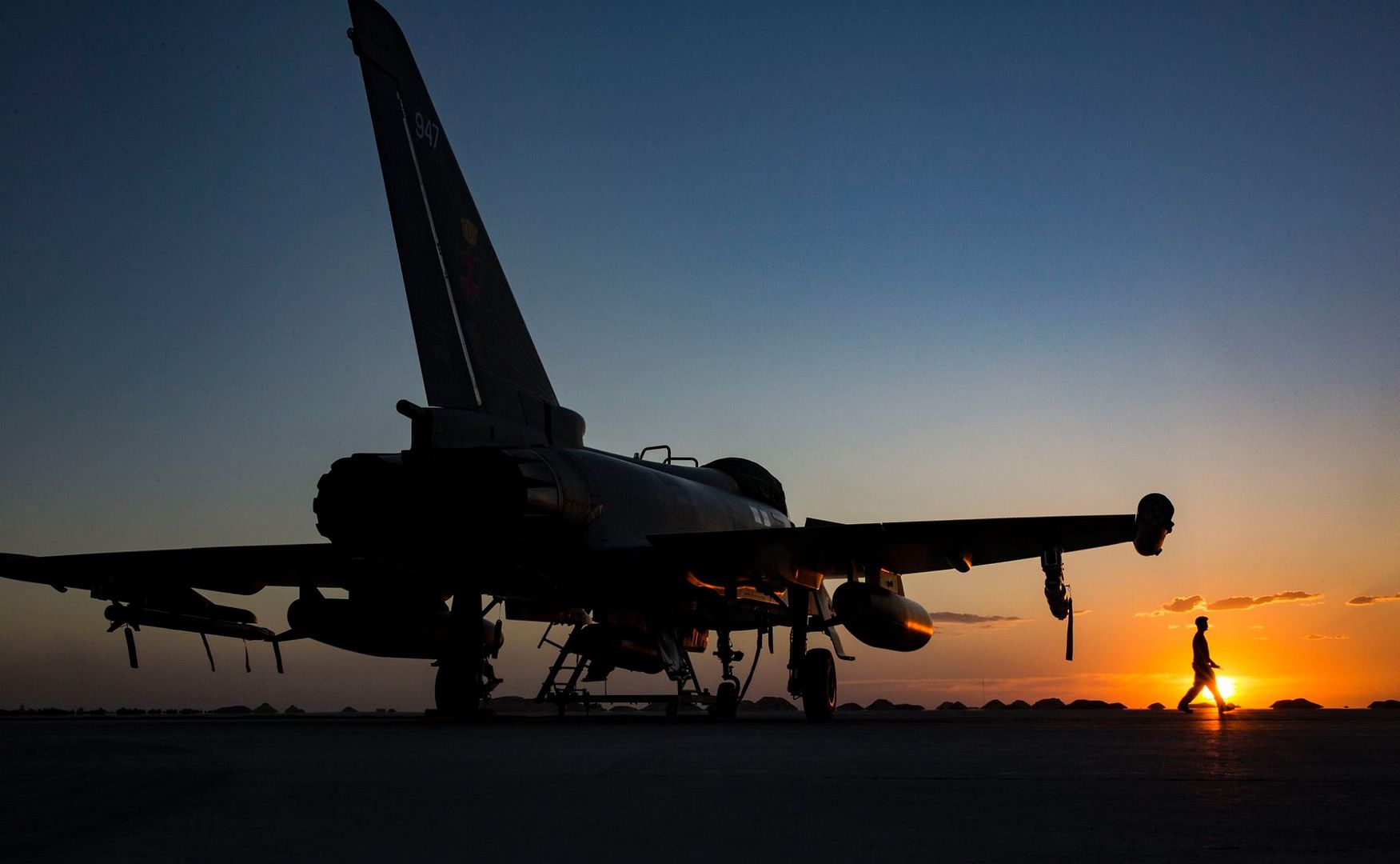
-
 Main AdminOctober 03, 2018
Main AdminOctober 03, 2018
ARLINGTON, Va. (AFNS) -- Thanks to an optimization initiative led by Air Force Operational Energy (SAF/IEN), F-35 Lightning II and F-22 Raptor fighter sorties are now requested to fly closer to the fighters' maximum range airspeed, while still within tanker boom limits, during Coronet missions. The faster speed decreases overall fuel consumption, while saving precious flight hours.
In August 2017, Air Force Operational Energy conducted a proof-of-concept demonstration to show that increased speeds during this type of aircraft redeployment decrease fuel consumption. One cell of F-22s and an accompanying tanker for refueling, flew at a higher airspeed, while the other cell flew the standard profile and acted as a control group. Throughout the five-hour flight, researchers collected multiple data points in order to compare results from both cells. The faster cell was able to cut about 10 percent off the total flight time and 6 percent of the fuel required for this type of aircraft redeployment.
The faster speed parameters are within the Aerial Refueling Flight Envelope for the F-35 and F-22, as well as the KC-135 Stratotanker and the KC-10 Extender.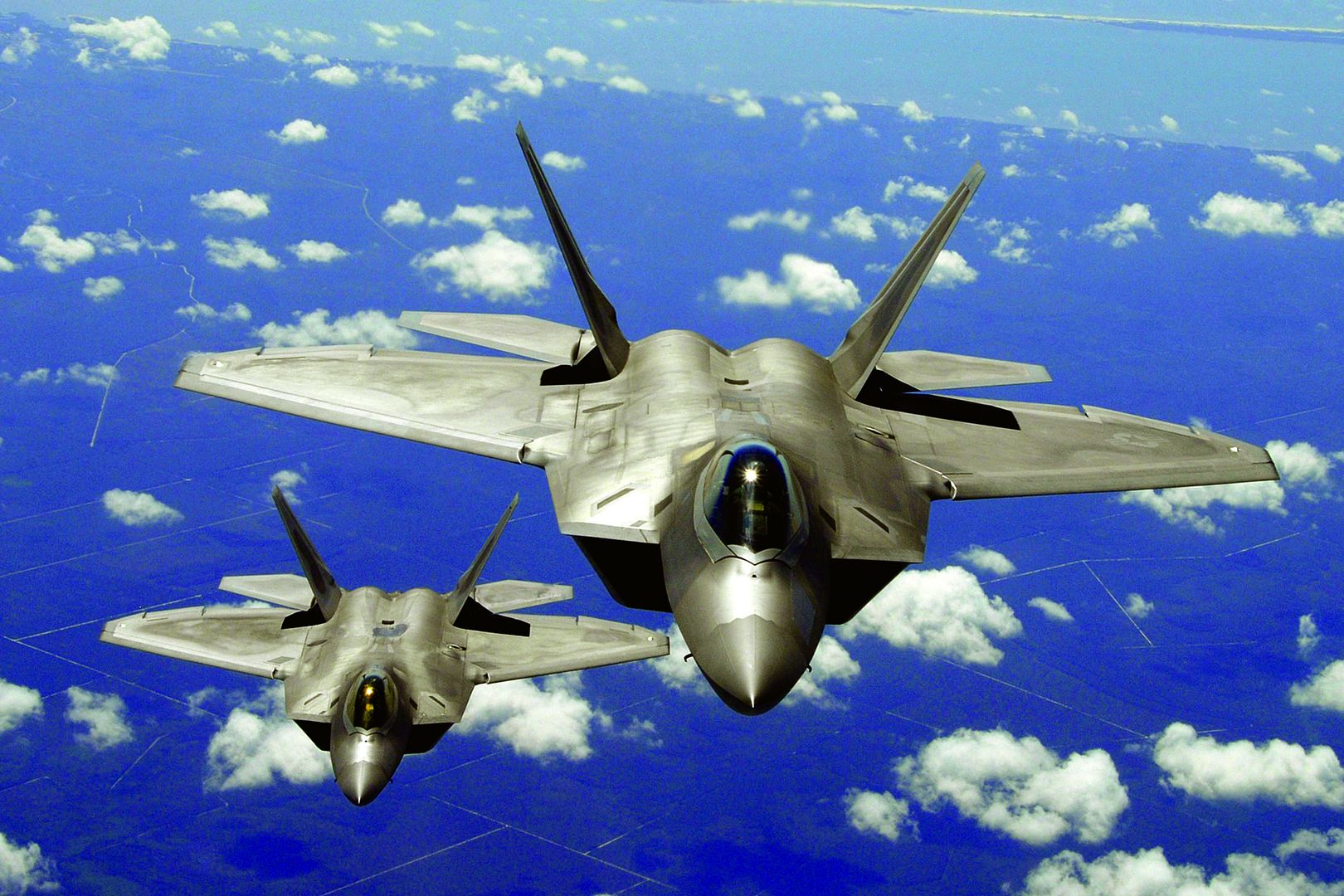
10.01.2018
The U.S. Air Force Air Demonstration Squadron "Thunderbirds" fly over Yosemite National Park returning to Nellis Air Force Base. Since 1953, the Thunderbirds team has served as America?s premier air demonstration squadron. (U.S. Air Force Photo Staff Sgt. Ashley Corkins)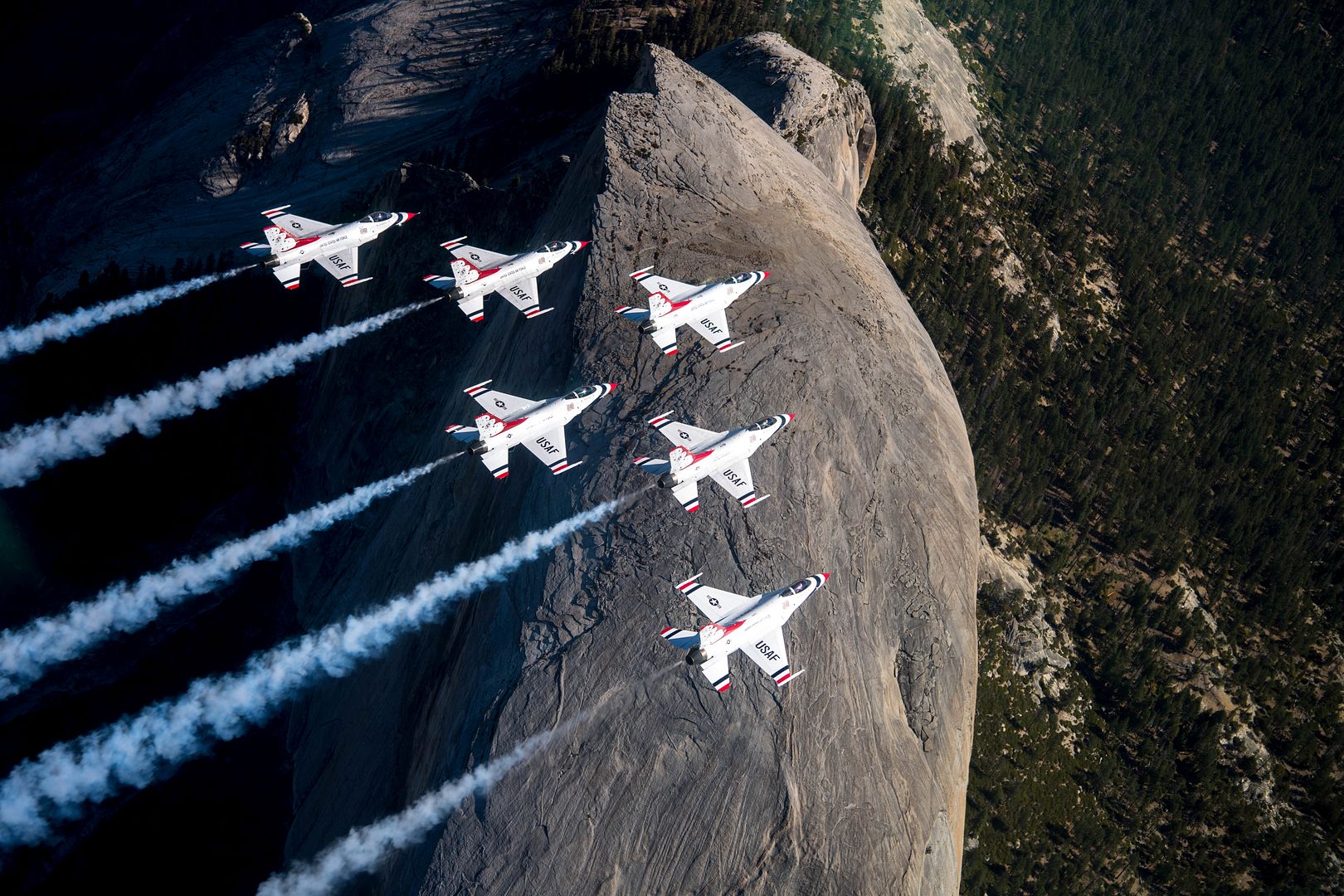
10.01.2018
F-35 Lightning fighter jets have conducted their first night flying trials off the United Kingdom?s largest warship, HMS Queen Elizabeth.
The aircraft carrier, which first landed F-35 Lightning jets on board last week, is currently conducting flight testing off the east coast of the United States.
Pictures show how the night time trials, which up until now have only been tested in simulators or on the ground, were carried out using state-of-the-art night-vision technology, with the pilots and aircraft handlers successfully guiding the supersonic fighter jets onto the flight deck.
Some trials were also carried out without night vision technology to ensure the jets? capability in any eventuality.
(Courtesy photo's by Royal Navy & Lockheed Martin)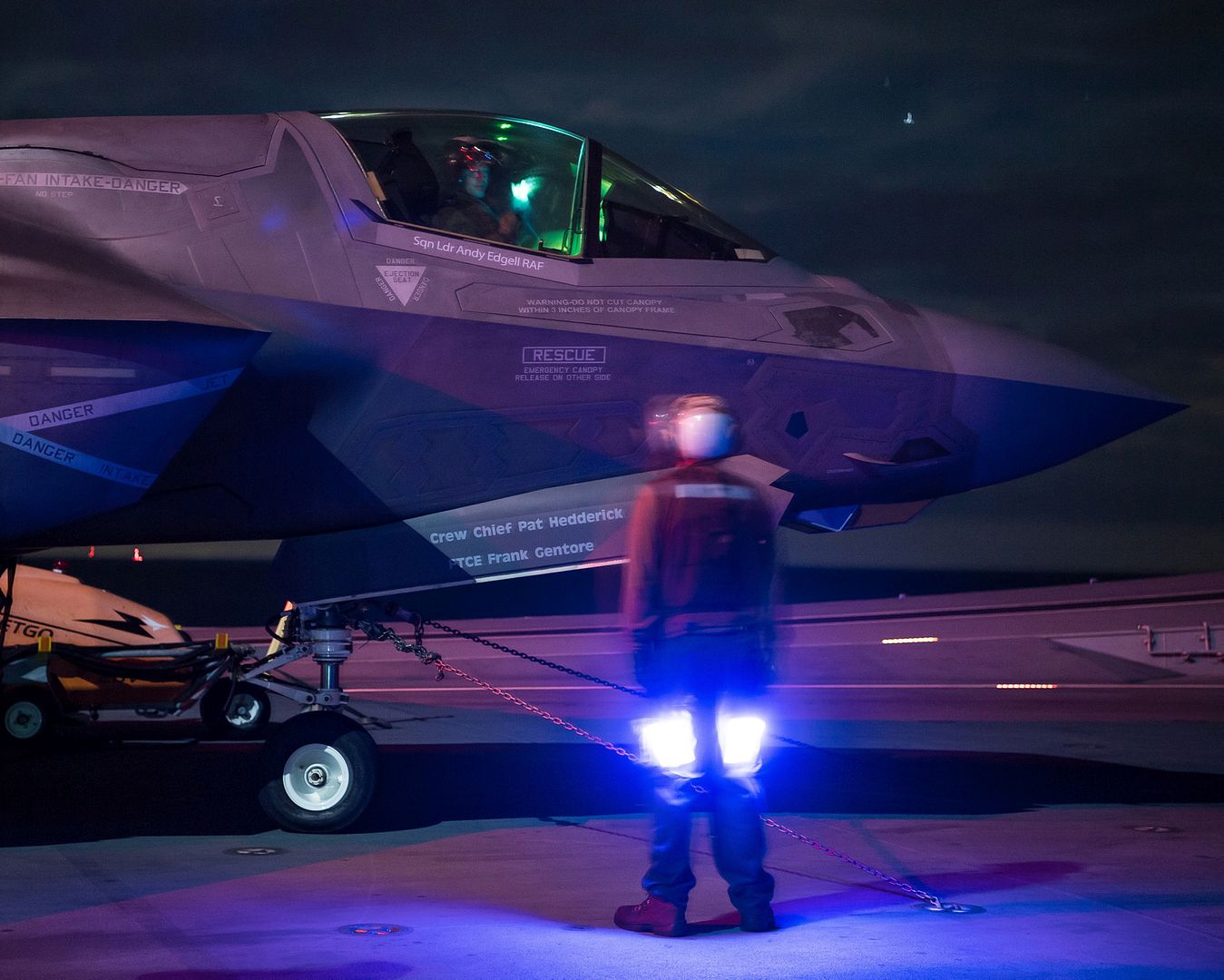


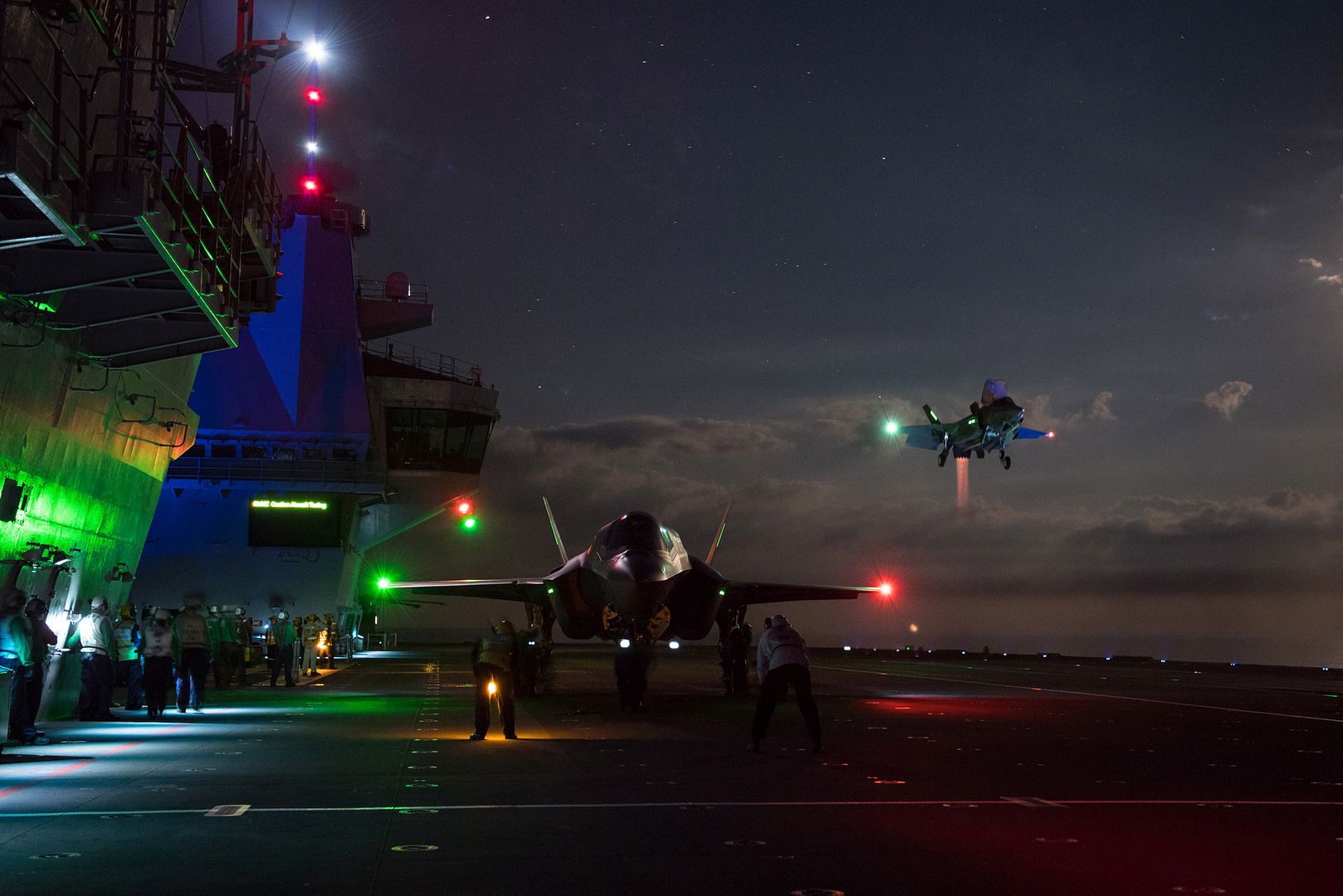

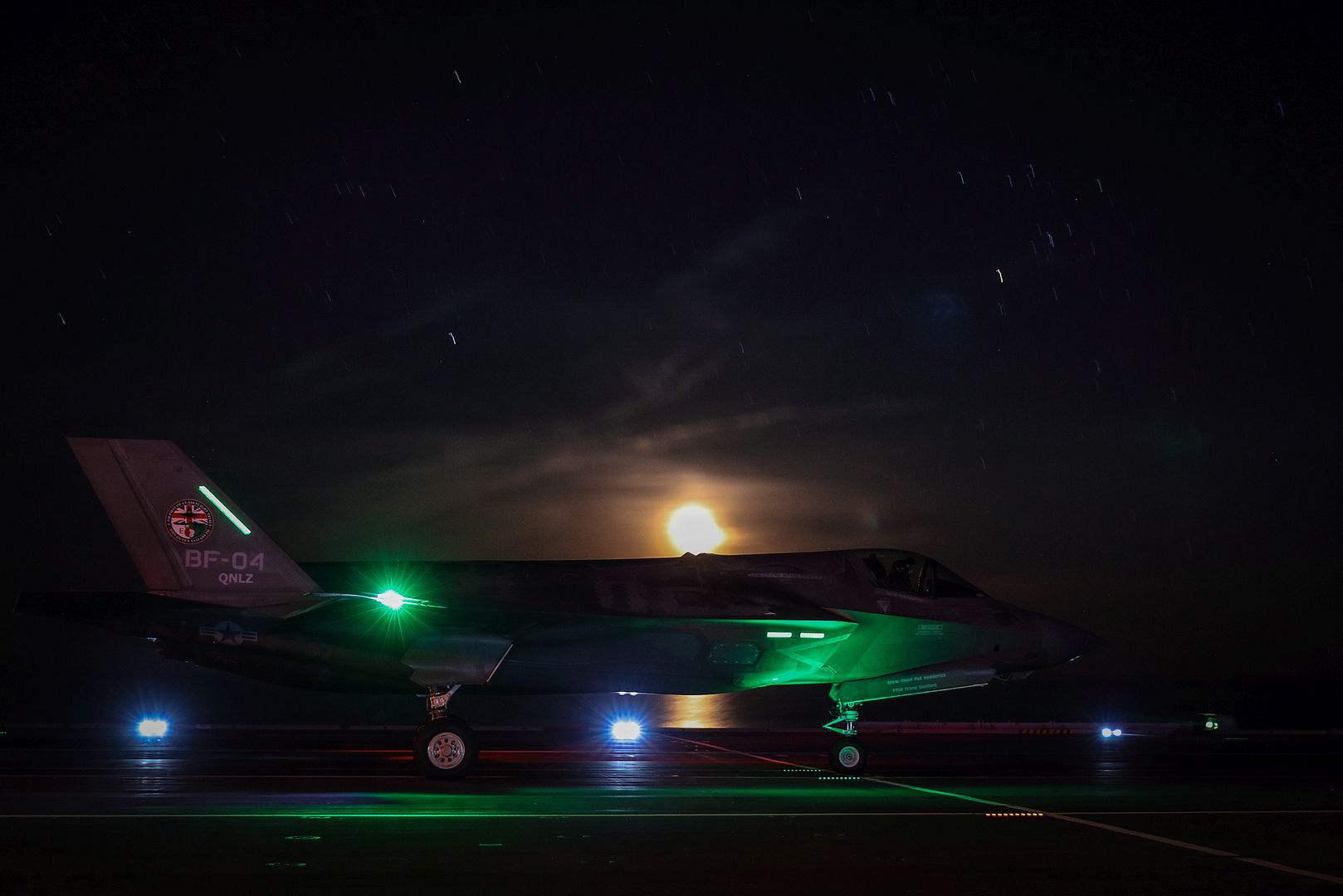
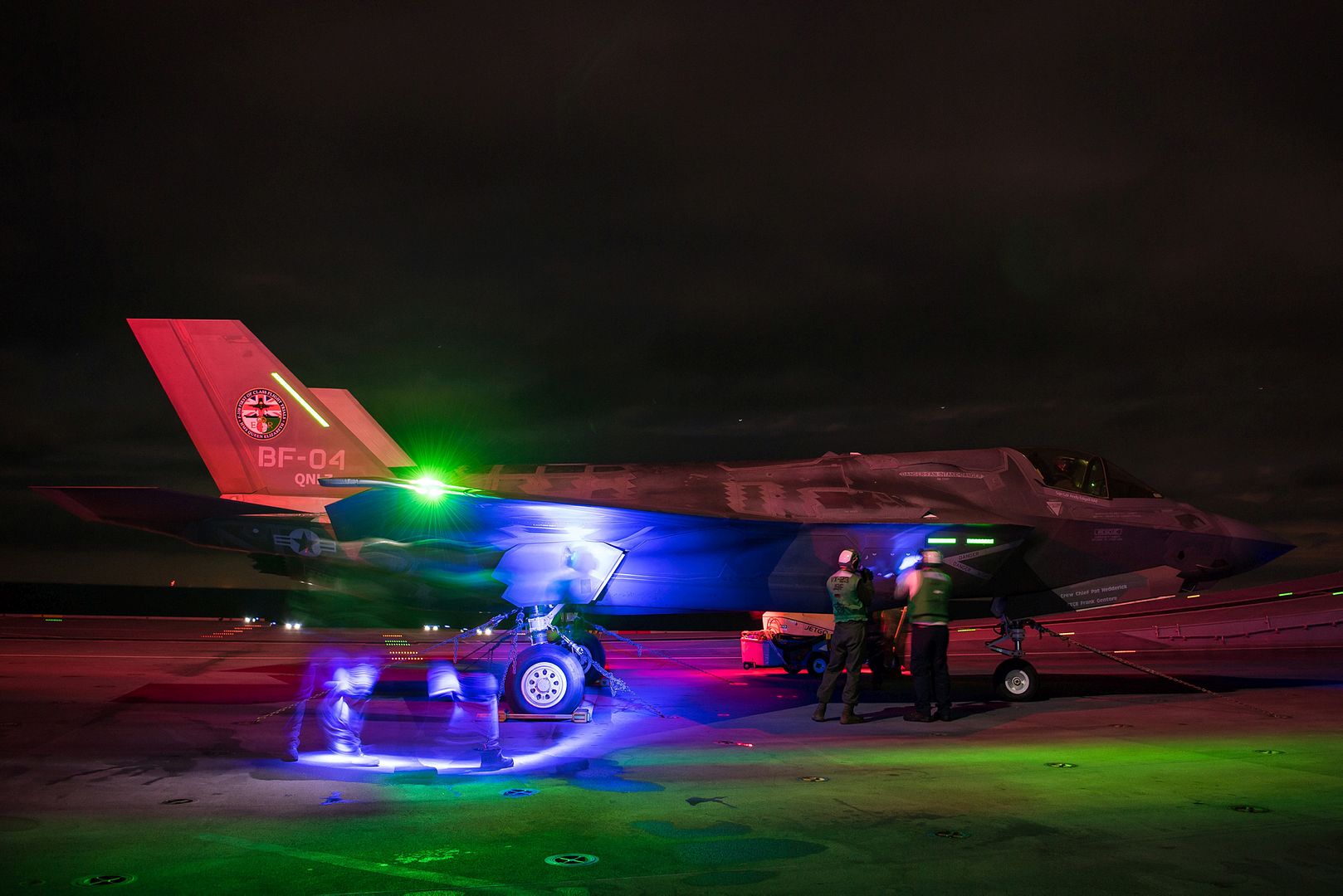
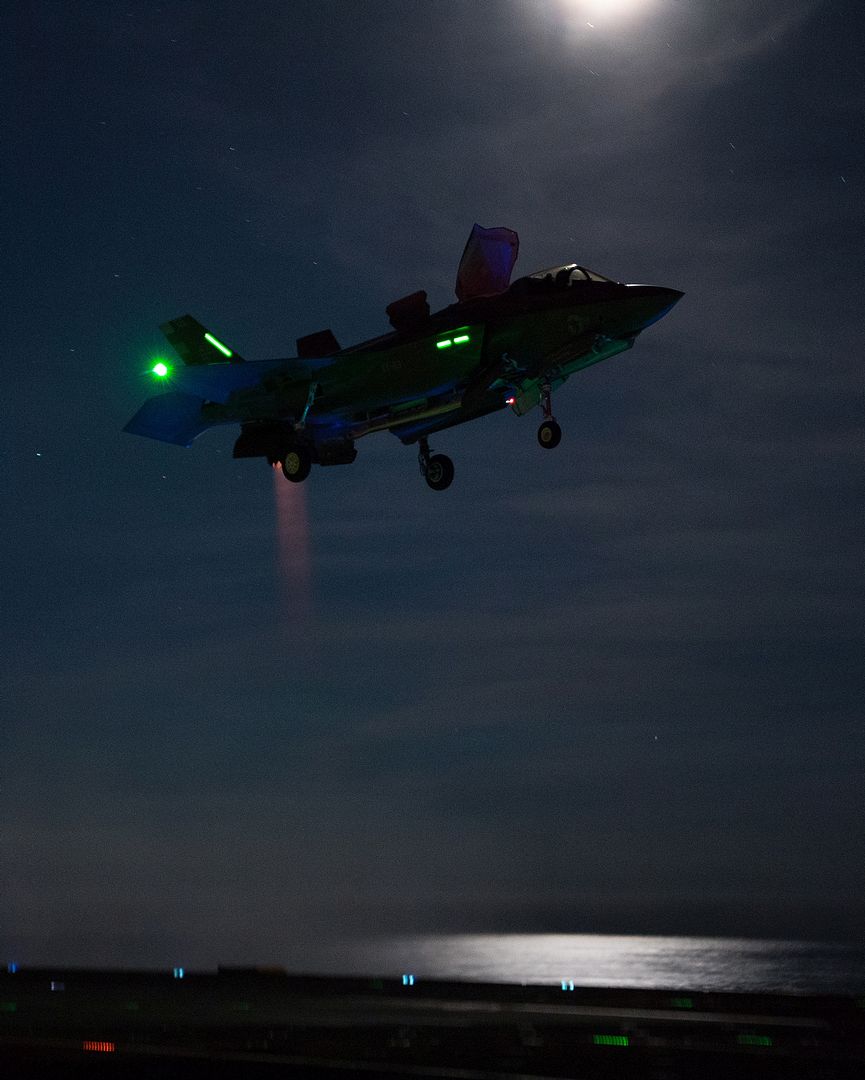
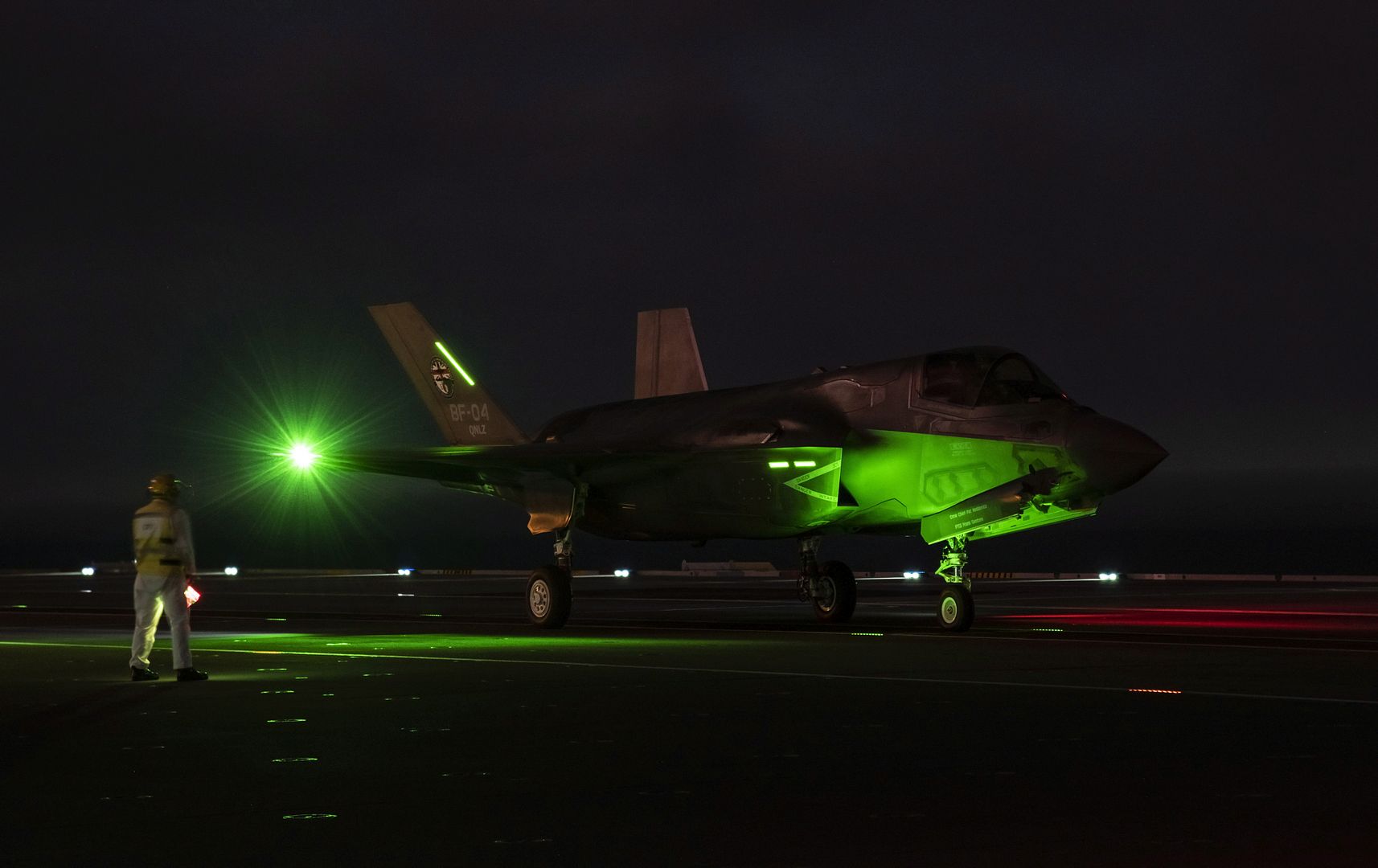

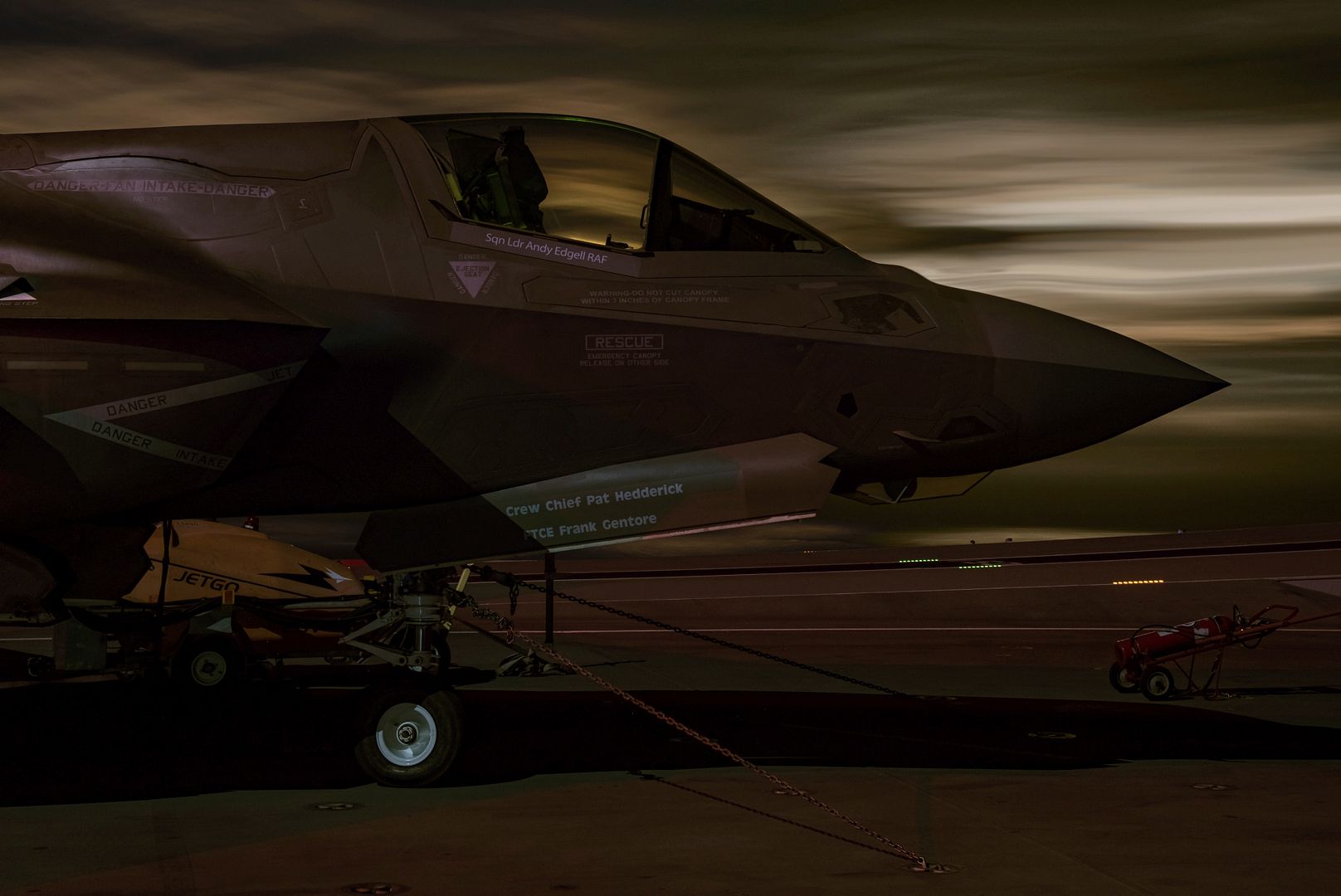
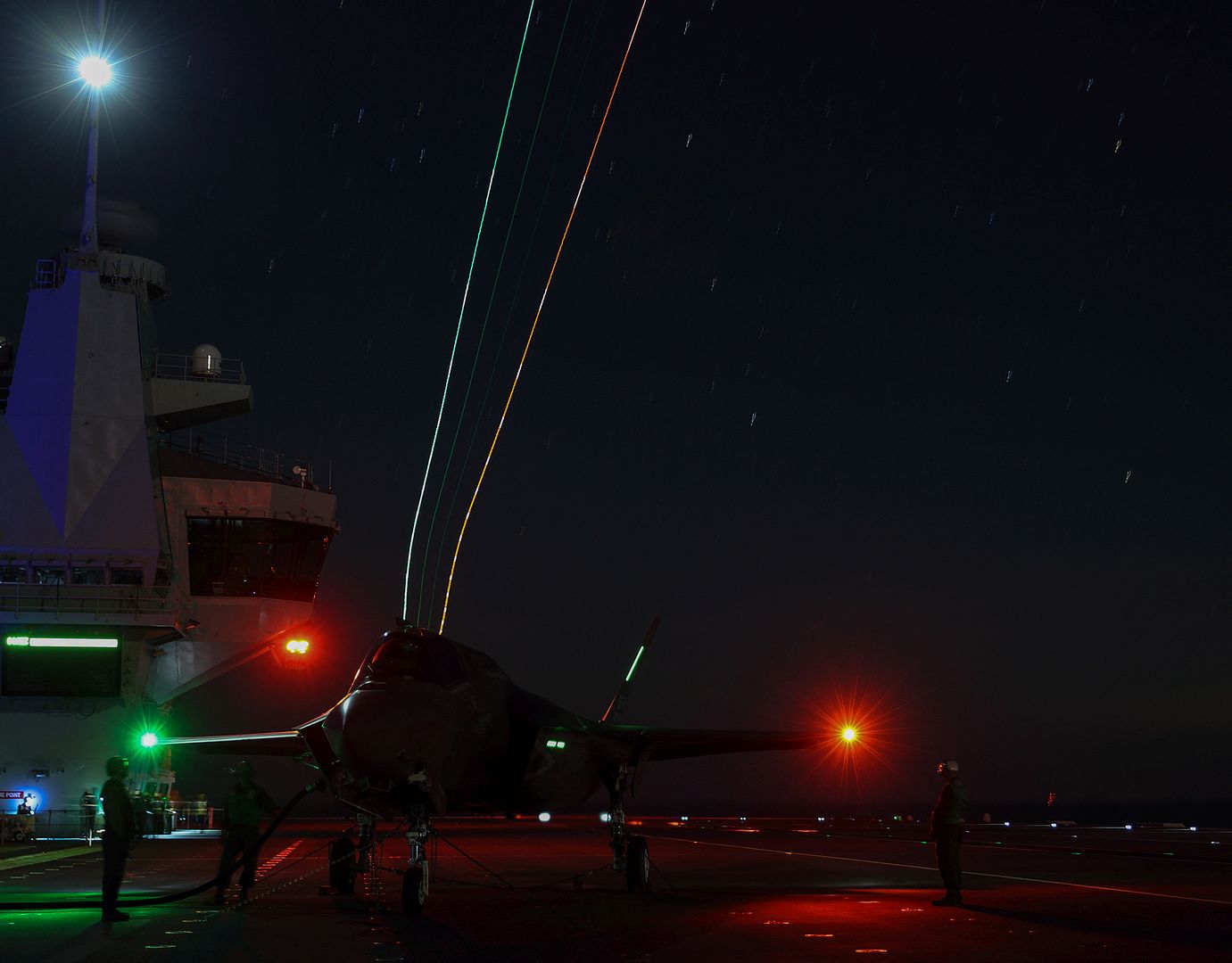
Press release
03 October 2018
On 1 October, the Swedish Defence Material Administration submitted the Swedish Gripen proposal to the Bulgarian Ministry of Defence. The Swedish offer consists of eight new fully NATO-interoperable Gripen C/D fighter aircraft to equip the Bulgarian Air Force.
The Swedish offer consists of eight new NATO interoperable Gripen aircraft with the latest MS20 configuration, which can be delivered to the Bulgarian Air Force within a short time period, with the first aircraft delivered within 24 months of contract signature. Training of pilots and technicians is included and with the offer full QRA capability will be achieved within the budget framework.
?Gripen is an advanced multirole fighter at the start of its development life time. The Swedish offer meets the requirements of the Bulgarian government regarding budget, delivery schedule and capabilities of the new aircraft,? says Joakim Wallin, Director Export and International Relations, Swedish Defence Material Administration.
?When Bulgaria selects Gripen, Saab and Sweden are ready to co-operate with the Bulgarian defence industry in areas such as aircraft maintenance, transferring important know-how to the country that would help to sustain and create skilled jobs?, says Jonas Hjelm, Senior Vice President and head of Saab business area Aeronautics.
?Relations between Sweden and Bulgaria are excellent. The economic cooperation is sizeable, with a growth in bilateral trade and increasing investments by Swedish companies in Bulgaria, which are currently employing close to 9000 people in Bulgaria?.says H. E. Louise Bergholm, Swedish Ambassador to Bulgaria.
Gripen C/D is a proven system, in operational service with the air forces of Sweden, South Africa, Hungary, Czech Republic and Thailand. The UK Empire Test Pilots? School (UK ETPS) uses Gripen as its fast jet platform for test pilots from all over the world. With Gripen, NATO member states Czech Republic and Hungary successfully participate in NATO missions and joint exercises with other NATO countries.
The development of the Gripen C/D is on-going and the system will remain operational for at least another 30 years.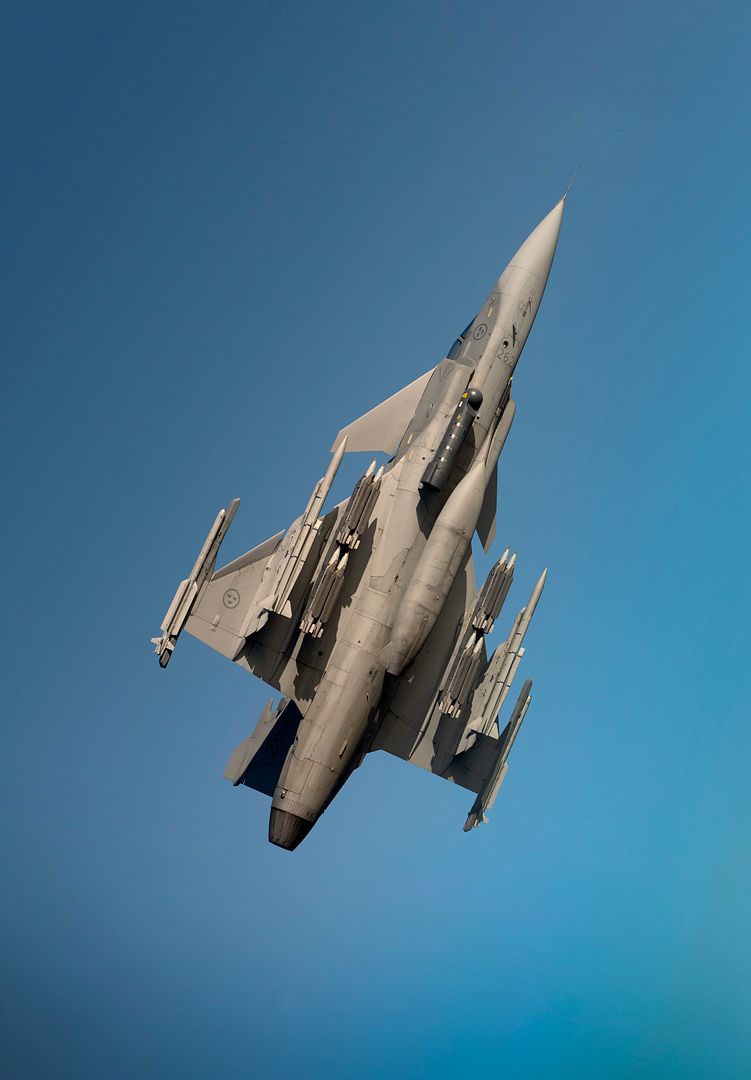
-
 Main AdminJOINT BASE PEARL HARBOR-HICKAM, Hawaii (AFNS) --
Main AdminJOINT BASE PEARL HARBOR-HICKAM, Hawaii (AFNS) --
Three B-2 Spirits and approximately 200 Airmen completed their first deployment to Joint Base Pearl Harbor-Hickam, Hawaii, in support of the U.S. Strategic Command?s Bomber Task Force deployment, Aug. 15 through Sept. 27, 2018.
Although bombers regularly rotate throughout the Indo-Pacific, this marked the first deployment of B-2 Spirits to JB Pearl Harbor-Hickam.
"The B-2 Spirits' first deployment to (Joint Base Pearl Harbor-Hickam) highlights its strategic flexibility to project power from anywhere in the world," said Maj. Gen. Stephen Williams, director of air and cyberspace operations, Headquarters Pacific Air Forces. "The B-2s conducted routine air operations and integrated capabilities with key regional partners, which helped ensure a free and open Indo-Pacific. The U.S. routinely and visibly demonstrates commitment to our allies and partners through global employment and integration of our military forces."
Despite the deployment taking place in the middle of hurricane season, the B-2 pilots accomplished hundreds of local and long-duration sorties and regional training. Each mission focused on displaying the bomber?s flexible global-strike capability and the United States' commitment to supporting global security.
One of the key integrations involved the B-2s and F-22 Raptors assigned to the 199th Fighter Squadron, a unit of the 154th Wing under the Hawaii Air National Guard. Like the B-2, the F-22 is virtually invisible to threats. This makes them the perfect match for escorting the stealth bomber and providing situational awareness. The training helped polish the cohesion between the pilots.
?The Bomber Task Force is a total-force integration deployment,? said Lt. Col. Nicholas Adcock, Air Force Global Strike 393rd Bomber Squadron commander. ?Our active-duty and guard members worked seamlessly together with their counterparts here in Hawaii to determine the best way for the B-2 to operate from this location in the future.?
The 154th Wing also supported the B-2 with the 203rd Air Refueling Squadron?s KC-135 Stratotankers. Although the B-2 is capable of flying approximately 6,000 miles without refueling, the KC-135s provided aerial refueling for long-duration missions.
?The training with the Hawaii Air National Guard was invaluable,? Adcock said. ?Together we refined and exercised multiple tactics that are crucial to the Indo-Pacific Command area of responsibility.?
In addition to air operations, the deployment also focused on hot-pit refueling. During this technique, the pilots land and continue to run the B-2?s engines while fuels distribution technicians refuel the aircraft. The pilots are immediately able to take off again with a full tank and maximize the amount of time they are in the air versus on the ground. One B-2 conducted hot-pit refueling at Wake Island, a coral limestone atoll in the mid-Pacific, west of Honolulu, Sept. 14.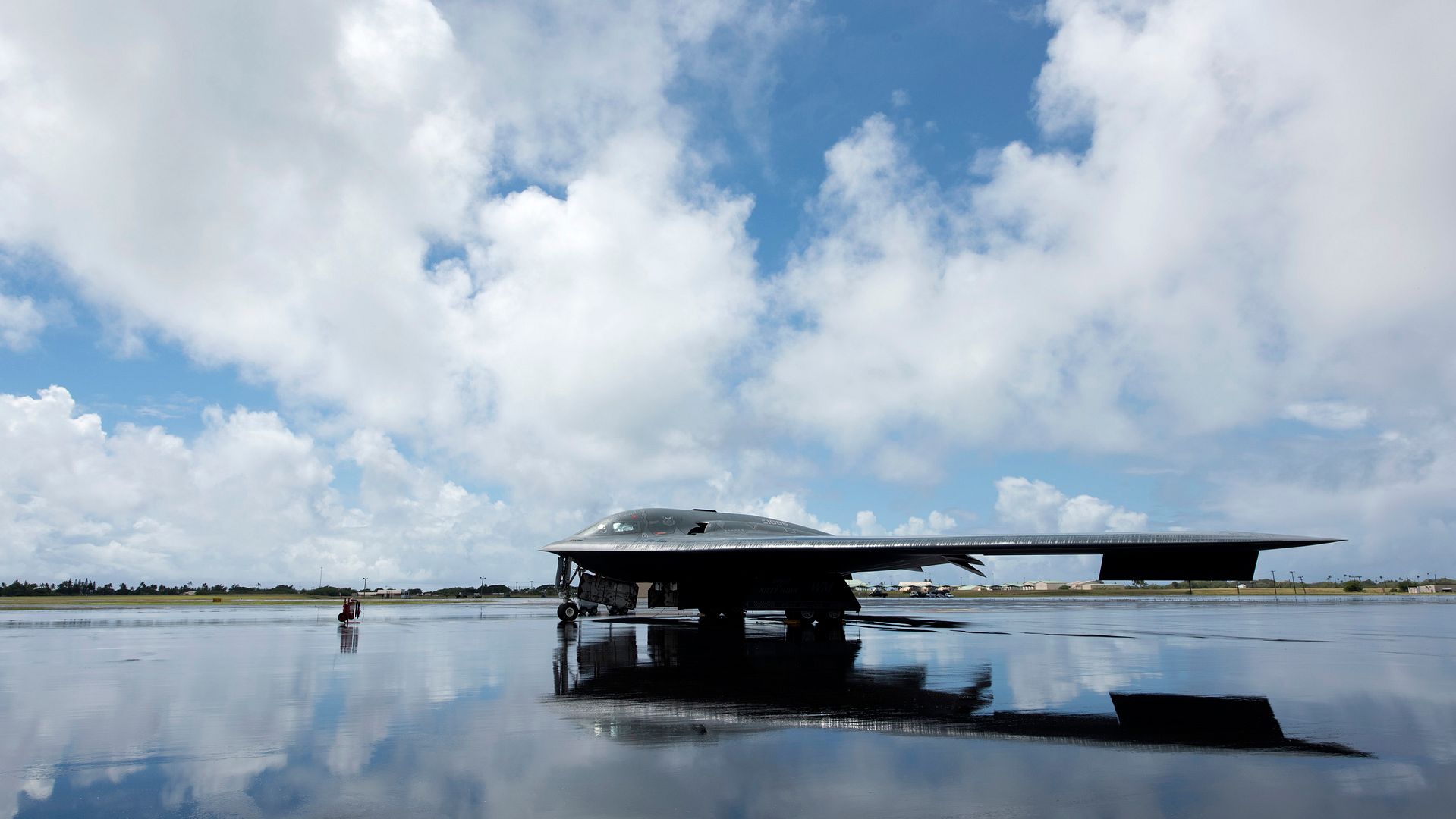
Finally, weapons load crews exercised loading BDU-50s, inert 500 pound non-explosive practice bombs, into B-2 bomb bays on the JB Pearl Harbor-Hickam flightline.
?This weapons load is the first stepping stone to loading live munitions from this location,? said Master Sgt. Nicholas Lewis, 393rd Aircraft Maintenance Unit weapons section chief. ?Furthermore, it provides pilots and load crews valuable training necessary to accomplish future BTF missions.?
From air to ground support, the first Bomber Task Force deployment to Hawaii has allowed each member to determine what it would take to operate the B-2 from JB Pearl Harbor-Hickam and execute strategic deterrence, global strike and combat support at any time.
?I am very proud of every Airman that was a member of the 393rd Expeditionary Bomb Squadron,? Adcock said. ?We flew to a forward operating location that the B-2 had never operated out of and overcame numerous challenges.?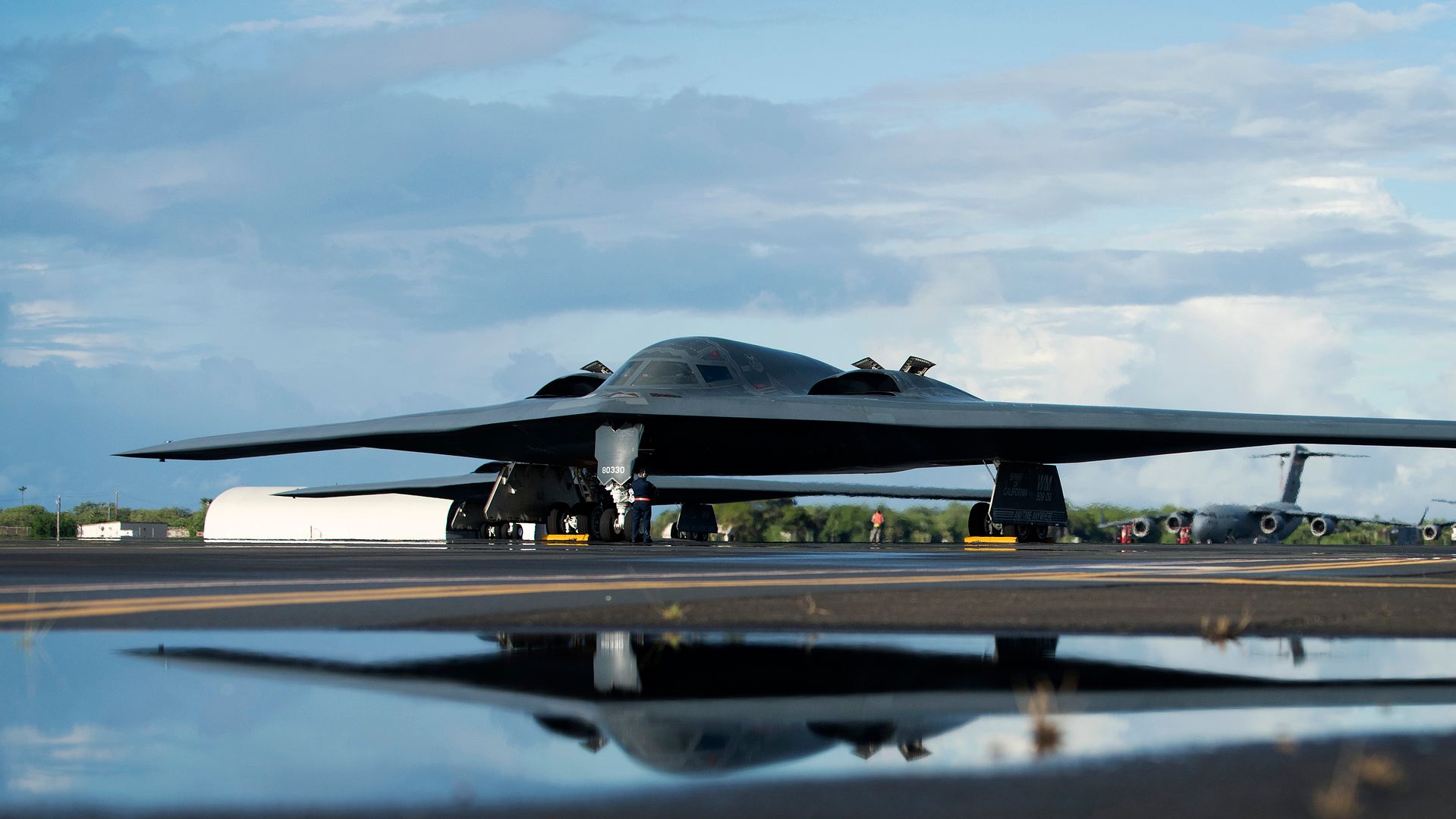
WRIGHT-PATTERSON AIR FORCE BASE, Ohio (AFNS) --
The Air Force has designated the GOLauncher1 hypersonic flight research vehicle as X-60A. The vehicle is being developed by Generation Orbit Launch Services, Inc. under contract to the Air Force Research Laboratory, Aerospace Systems Directorate, High Speed Systems Division.
It is an air-dropped liquid rocket, specifically designed for hypersonic flight research to mature technologies including scramjet propulsion, high temperature materials and autonomous control.
?The X-60A is like a flying wind tunnel to capture data that complements our current ground test capability,? said Col. Colin Tucker, Military Deputy, office of the deputy assistant secretary of the Air Force for science, technology, and engineering. ?We?ve long needed this type of test vehicle to better understand how materials and other technologies behave while flying at more than 5 times the speed of sound. It enables faster development of both our current hypersonic weapon rapid prototypes and evolving future systems.?
AFRL?s motivation for the X-60A program is to increase the frequency of flight testing while lowering the cost of maturing hypersonic technologies in relevant flight conditions. While hypersonic ground test facilities are vital in technology development, those technologies must also be tested with actual hypersonic flight conditions.
Utilizing new space commercial development, licensing, and operations practices, X-60A is envisioned to provide the Air Force, other U.S. Government agencies, and industry with a platform to more rapidly mature technologies.
The X-60A rocket vehicle propulsion system is the Hadley liquid rocket engine, which utilizes liquid oxygen and kerosene propellants. The system is designed to provide affordable and regular access to high dynamic pressure flight conditions between Mach 5 and Mach 8.
This is the first Air Force Small Business Innovative Research program to receive an experimental ?X? designation.
An F-15E Strike Eagle assigned to the 492nd Fighter Squadron takes off during the ?FURIOUS 48? readiness exercise at Royal Air Force Lakenheath, England, Oct. 2, 2018. This exercise was designed to emphasize the importance of combat skills effectiveness training and test Liberty Wing Airmen on their ability to survive and operate in wartime conditions.(U.S. Air Force photo by Airman 1st Class Christopher S. Sparks)
ATLANTIC OCEAN (Oct. 3, 2018) An MV-22B Osprey attached to Marine Medium Tiltrotor Sqaudron (VMM) 365 (Reinforced) takes off from the flight deck of the Wasp-class amphibious assault ship USS Iwo Jima (LHD 7), Oct. 3, 2018. Iwo Jima recently departed its homeport of Naval Station Mayport following the completion of a scheduled continuous maintenance availability. (U.S. Navy photo by Mass Communication Specialist 3rd Class Daniel C. Coxwest/Released)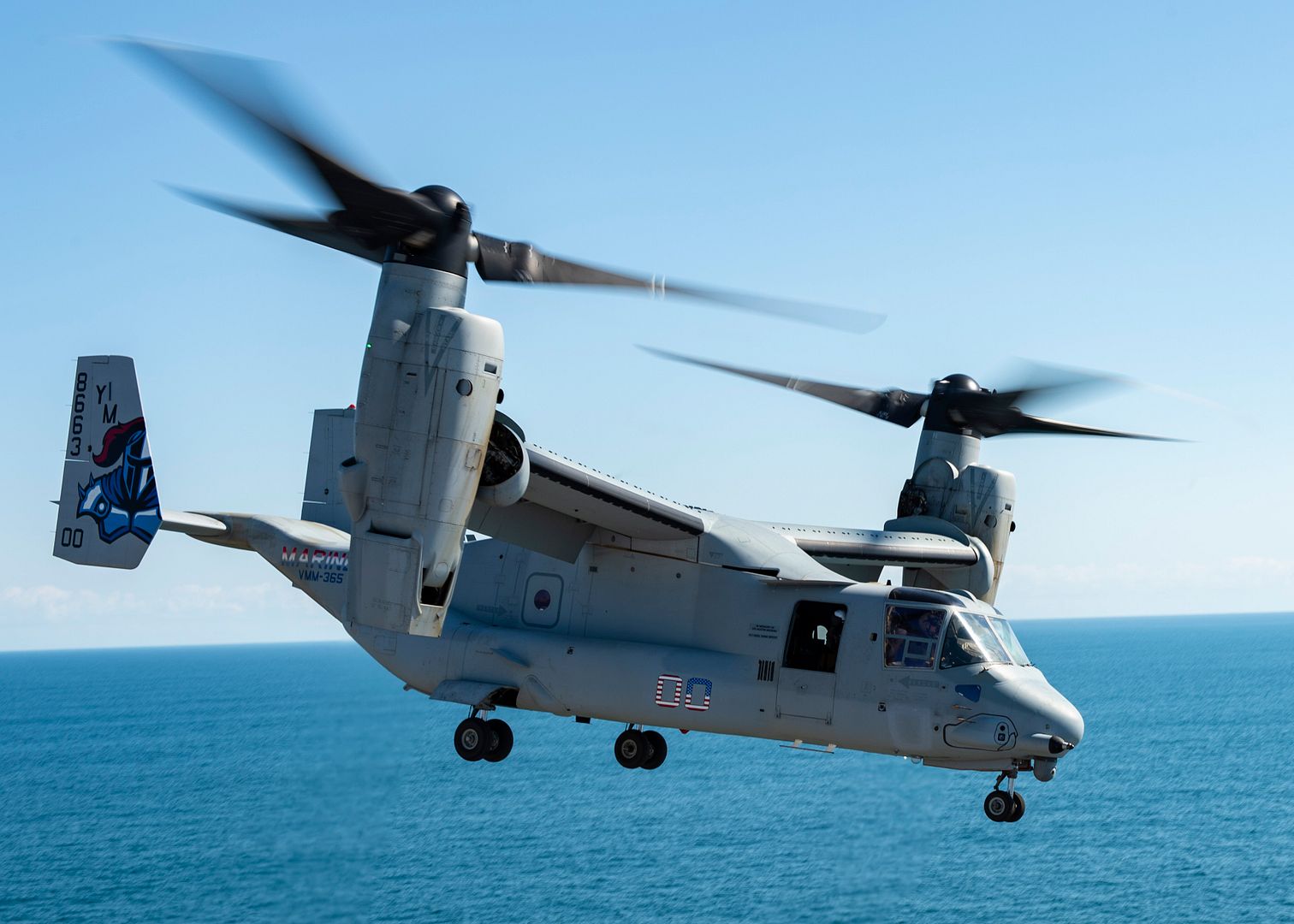
WEST PALM BEACH, Fla., Oct. 4, 2018 /PRNewswire/ -- The Sikorsky S-97 Raider light tactical prototype helicopter is advancing rapidly through its flight test schedule, recently exceeding 200 knots at the Sikorsky Development Flight Center. Raider, developed by Sikorsky, a Lockheed Martin (NYSE: LMT) company, is based on the company's proven X2 Technology, enabling speeds twice that of conventional helicopters.
"The Sikorsky S-97 Raider flight test program is exceeding expectations, demonstrating Raider's revolutionary speed, maneuverability and agility," said Tim Malia, Sikorsky director, Future Vertical Lift Light. "X2 Technology represents a suite of technologies needed for the future fight, enabling the warfighter to engage in high-intensity conflict anytime, anywhere as a member of a complex, multi-domain team."
Sikorsky continues to demonstrate the application of its X2 Technology as the company prepares its proposal for the U.S. Army's Future Attack Reconnaissance Aircraft (FARA) competition, driving forward the Army's efforts to revolutionize its aircraft fleet as part of what is known as Future Vertical Lift.
Raider incorporates the latest advances in fly-by-wire flight controls, vehicle management systems and systems integration. The suite of X2 Technologies enables the aircraft to operate at high speeds while maintaining the low-speed handling qualities and maneuverability of conventional single main rotor helicopters.
"It's exciting to achieve these high speeds with X2 Technology," said Sikorsky experimental test pilot Bill Fell, a retired U.S. Army pilot. "It's undeniably important for the warfighter to get to the mission fast. And once they get there, X2 Technology provides the critical handling qualities that make the aircraft survivable, lethal and agile. Sikorsky X2 Technology changes the way we fly and fight ? we can get there fast, be more effective while on the scene and we can get out fast."
Sikorsky's X2 Technology at the heart of the Raider helicopter is scalable to a variety of military missions including light assault, light attack, armed reconnaissance, close-air support, combat search and rescue and unmanned applications.
The development of X2 Technology and the Raider program has been funded entirely by significant investments by Sikorsky, Lockheed Martin and industry partners.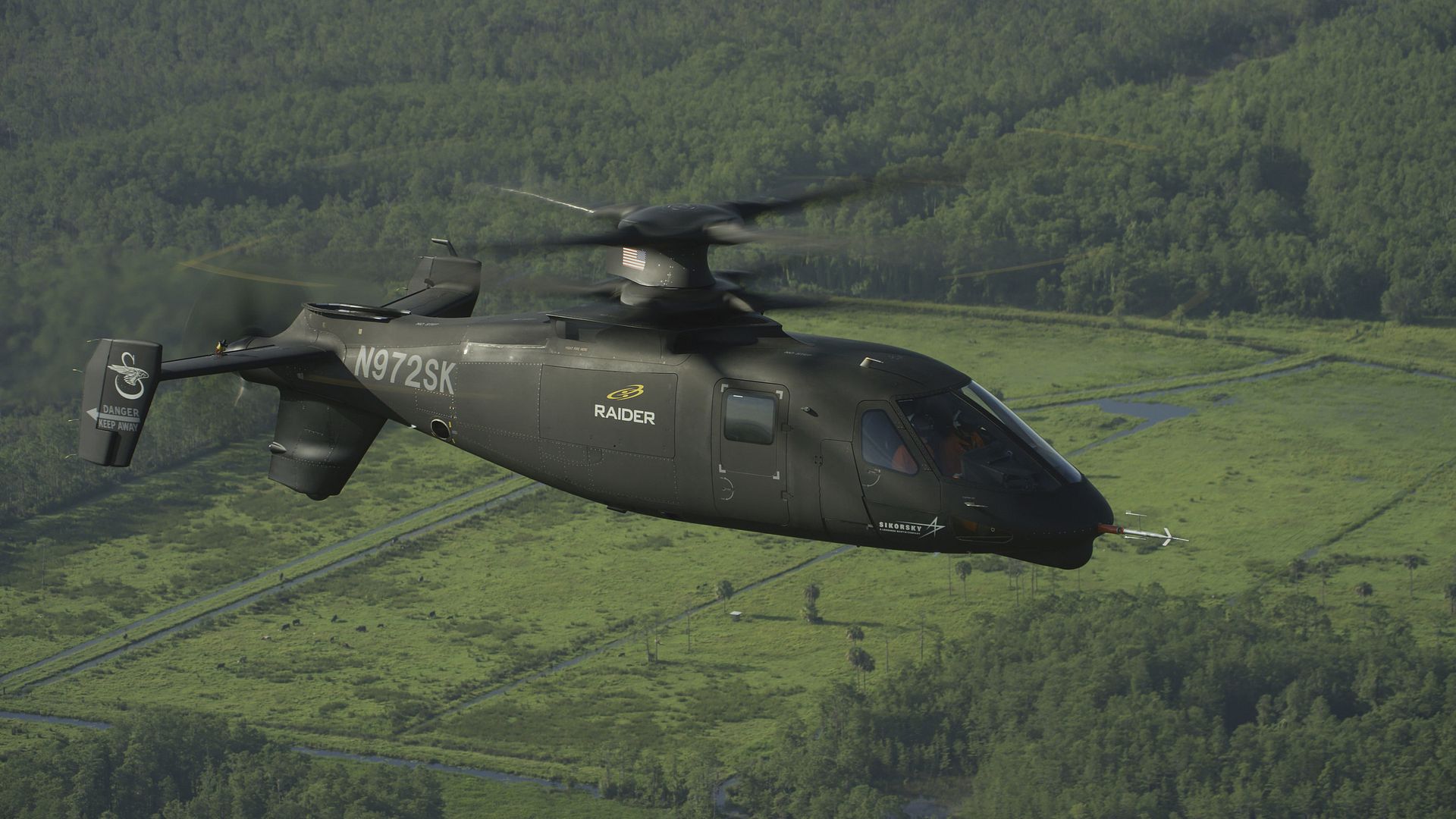
LOS ANGELES ? Oct. 4, 2018 ? Northrop Grumman Corporation (NYSE: NOC) announced that the Italian Air Force completed operational testing of the company?s Advanced Anti-Radiation Guided Missile (AARGM) on their Tornado Electronic Combat and Reconnaissance (ECR) aircraft at Naval Air Warfare Center, China Lake. A series of flight tests culminated with two direct hits on critical air defense threat targets confirming the operational effectiveness and suitability of AARGM on the Italian Air Force Tornado. The successful completion of operational testing allows the Italian Air Force to transition AARGM into operational squadrons.
AARGM is the most advanced anti-radar missiles available today and is able to rapidly engage traditional and advanced land- and sea-based air defense threats, as well as non-radar, time-sensitive strike targets. AARGM provides legacy High Speed Anti-Radiation Missiles with tactically significant improvements including a new guidance unit featuring global positioning system as well as an upgraded anti-radiation homing antenna and digital signal processor. AARGM is also equipped with a millimeter wave end-game terminal seeker providing substantially improved guidance.
?We are proud to have supported our Italian Air Force partner in successfully completing this critical milestone and transitioning the weapon system to operational status,? said Cary Ralston, vice president and general manager, Northrop Grumman Innovation Systems. ?Congratulations to the Italian Air Force and the joint team that worked closely in achieving this critical milestone.?
Italy signed a memorandum of understanding with the United States in 2005 to cooperatively develop the AGM-88E AARGM missile. The U.S. Navy is the executive agent for the program, currently in full rate production and deployed, supporting operational requirements for the U.S. Navy and U.S. Marine Corps. The completion of operational testing on the Tornado ECR aircraft is the fourth operational platform using AARGM. Other platforms include the FA-18C/D Hornet, FA-18E/F Super Hornet and EA-18G Growler.
Marignane, 04 October, 2018 - The H225M, with 88 aircraft currently in service in six countries across the globe, has surpassed the 100,000 flight hour milestone, following its first delivery to the French Air Force in 2006. The aircraft was rapidly deployed by the French Air Force in Lebanon in 2006 where the H225M, also known as the Caracal, successfully evacuated around 300 people. Since then the 11-metric-tonne H225M has proven its reliability and durability in combat conditions and crisis areas such as Afghanistan, Chad, the Ivory Coast, the Central African Republic, and Mali, while also supporting NATO-led operations in Libya.
?We are thrilled to see that the H225M has achieved this symbolic milestone with helicopters flying in different corners of the globe and in some of the harshest theatres of operation? said Michel Macia, Head of Super Puma programme at Airbus Helicopters. ?Its state-of-the art avionics and world renowned four axis autopilot, its exceptional range and payload capacities, combined with a large cabin designed to carry 28 troops and powerful air-toground and air-to-surface armament and electronic warfare system allow the H225M operators to carry out the most demanding missions? he added.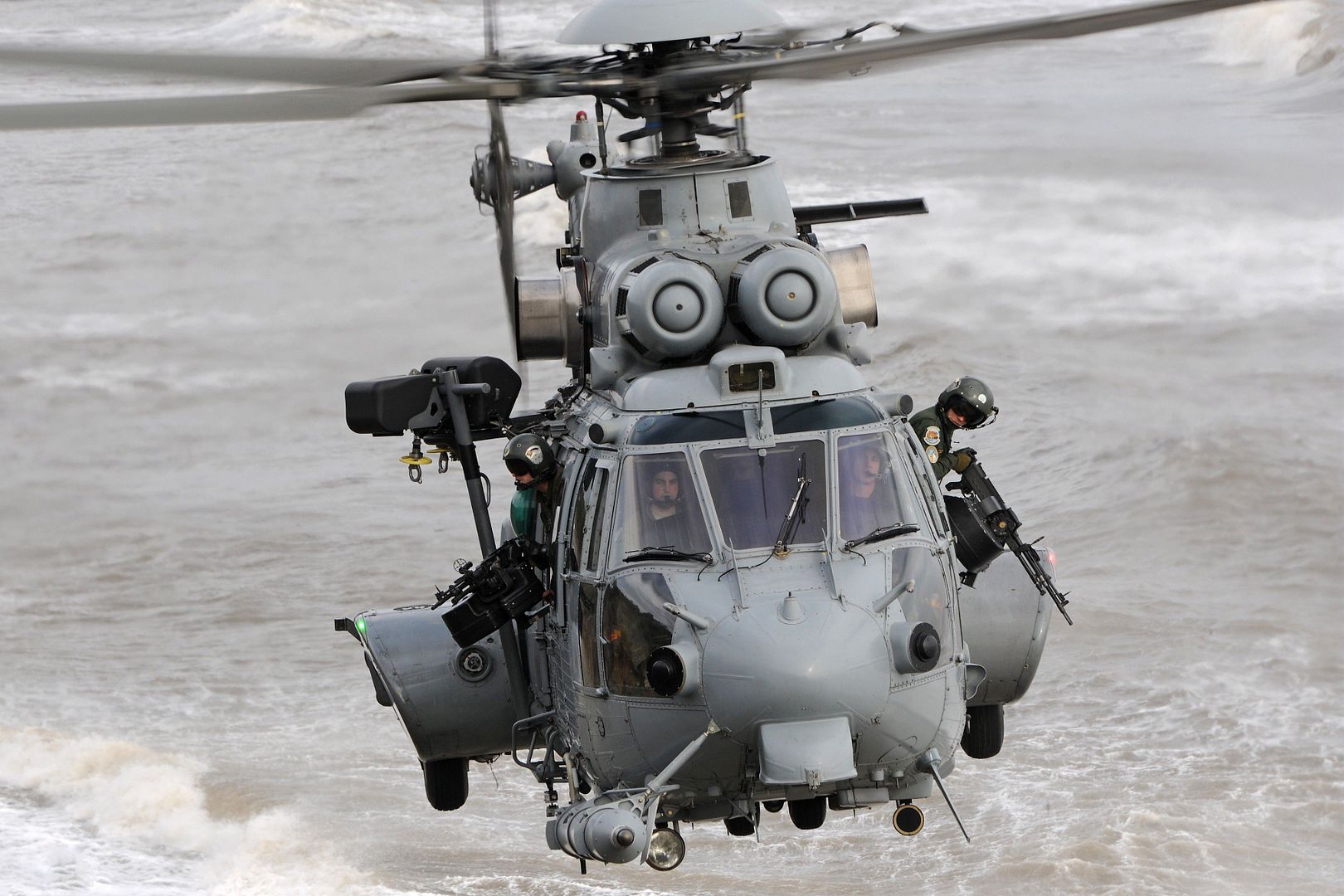
Operating both from ships and from land, even in icing conditions, this helicopter has an allweather capability supported by night vision goggle compatibility. The helicopter?s outstanding 1,296 km range can be extended with air-to-air refueling capabilities, allowing for flight times of up to 10 hours, as demonstrated recently by the French Air Force in operational conditions.
The H225M, a member of the Super Puma family, is relied upon as a force multiplier by France, Brazil, Mexico, Malaysia, Indonesia, and Thailand. The Royal Thai Air Force has recently renewed its trust in the aircraft with a follow-on order of four aircraft for combat search and rescue and troop transport missions. Other recent customers for the H225M include Kuwait who signed a contract in 2016 for 30 aircraft and Singapore. The H225M continues to attract interest from governments worldwide as a powerful multi-role aircraft capable of meeting their operational needs.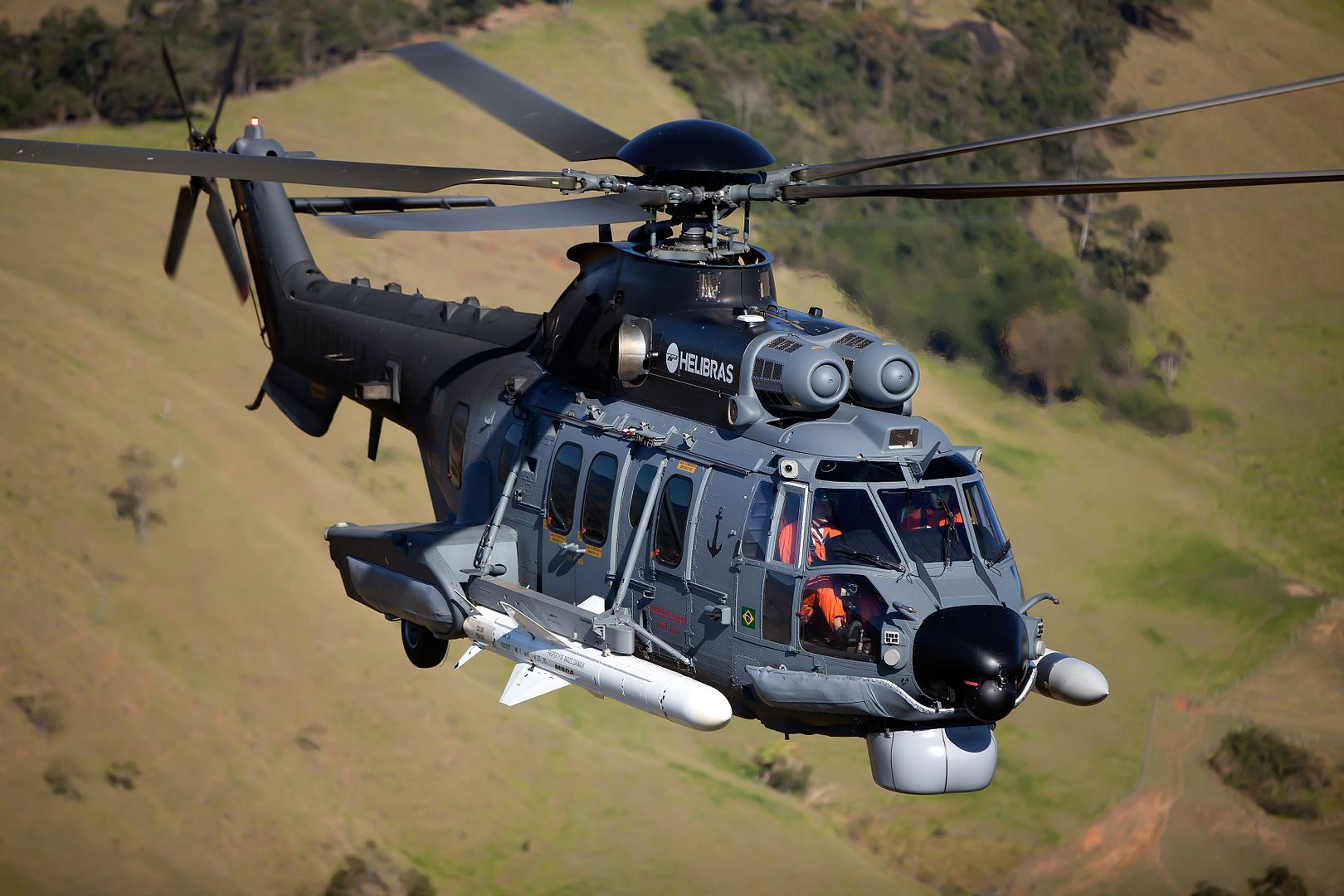
-
 Main AdminThe Penguin Jet, named due to its consistent Pittsburgh Penguins NHL hockey team memorabilia sits quietly awaiting typical daily maintenance Oct. 4, 2018. The KC-135 ?Stratotanker? receives general maintenance almost daily to keep the 60 year old aircraft flying. (U.S. Air National Guard photo by Staff Sgt. Bryan Hoover)
Main AdminThe Penguin Jet, named due to its consistent Pittsburgh Penguins NHL hockey team memorabilia sits quietly awaiting typical daily maintenance Oct. 4, 2018. The KC-135 ?Stratotanker? receives general maintenance almost daily to keep the 60 year old aircraft flying. (U.S. Air National Guard photo by Staff Sgt. Bryan Hoover)
An F-22 Raptor assigned to the 1st Fighter Wing, Joint Base Langley-Eustis, Va. lands at Royal Air Force Lakenheath, England Oct. 5, 2018. The Raptors will train with U.S. allies and partners as a demonstration of U.S. commitment to European regional security. (U.S. Air Force photo/ Tech. Sgt. Matthew Plew)
F-22 Raptors assigned to the 1st Fighter Wing, Joint Base Langley-Eustis, Va., park on the flightline at Royal Air Force Lakenheath, England, Oct. 5, 2018. The purpose of this deployment, ?Raptor Redeploy,? is to train and conduct engagements with NATO allies and partners and to show a 5th-generation fighter presence in Europe. (U.S. Air Force photo/Staff Sgt. Alex Fox Echols III)
Members of the Royal Canadian Air Force deployed on Operation REASSURANCE in Romania participated in a joint emergency landing exercise with the Romanian Air Force at Air Base 86 Borcea in September -- simulating an emergency landing using an arresting cable anchored to the runway.
In this exercise, the pilot lowers the arresting hook before the landing gear comes into contact with the landing strip. Once the aircraft?s arresting hook grabs the cable, it can stop the CF-188 in as short a time as a few seconds. The sparks visible behind the fighter jet come from the friction generated by the hook coming into contact with the runway.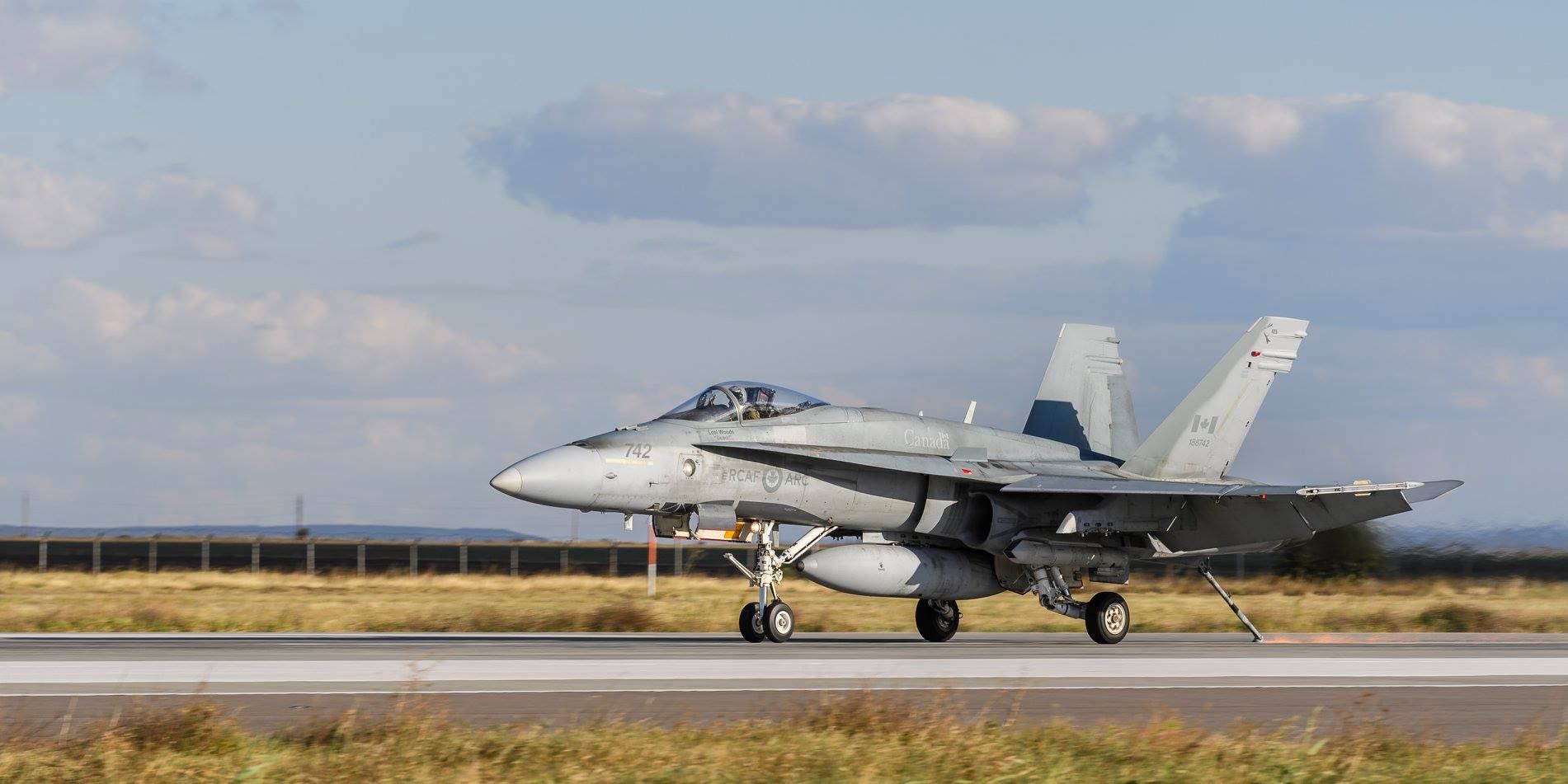
Five CF-188s and 135 members of the Royal Canadian Air Force are deployed to Romania from September until December 2018 in order to provide enhanced Air Policing. Operation REASSURANCE is part of NATO assurance and deterrence measures which aim to reinforce NATO?s collective defence and show the strength of Allied solidarity.
Photo's by: Corporal Dominic Duchesne-Beaulieu.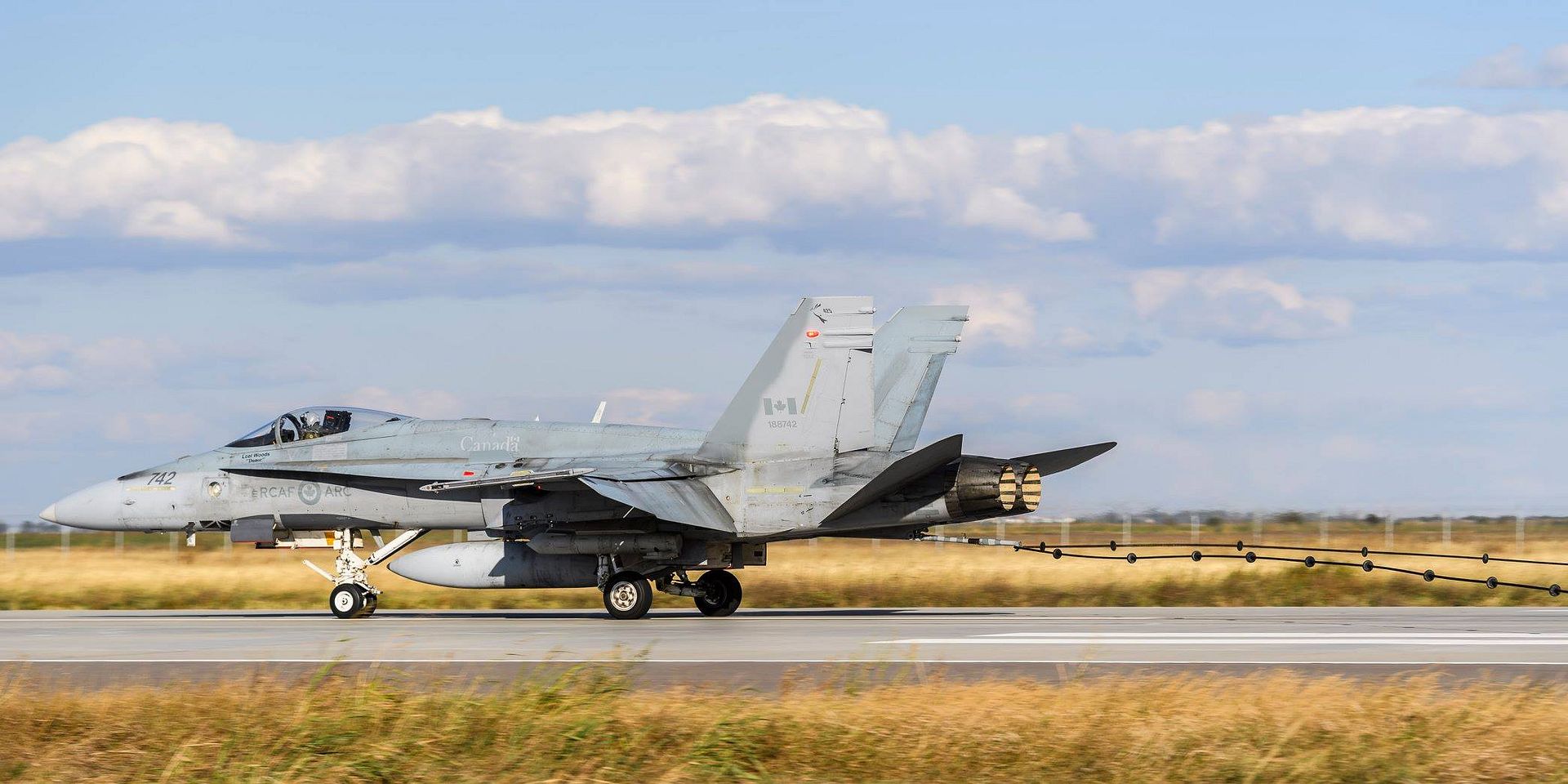
-
 Main AdminA U.S. Air Force F-15C Eagle fighter jet assigned to the 144th Fighter Wing, painted to celebrate the 75th anniversary of the wing's 194th Fighter squadron, lands at Starokostiantyniv Air Base to participate in Clear Sky 2018, Oct. 6. The exercise promotes regional stability and security, while strengthening partner capabilities and fostering trust. The training at Clear Sky greatly improves interoperability among participating countries. (U.S. Air National Guard photo's by Tech. Sgt. Charles Vaughn)
Main AdminA U.S. Air Force F-15C Eagle fighter jet assigned to the 144th Fighter Wing, painted to celebrate the 75th anniversary of the wing's 194th Fighter squadron, lands at Starokostiantyniv Air Base to participate in Clear Sky 2018, Oct. 6. The exercise promotes regional stability and security, while strengthening partner capabilities and fostering trust. The training at Clear Sky greatly improves interoperability among participating countries. (U.S. Air National Guard photo's by Tech. Sgt. Charles Vaughn)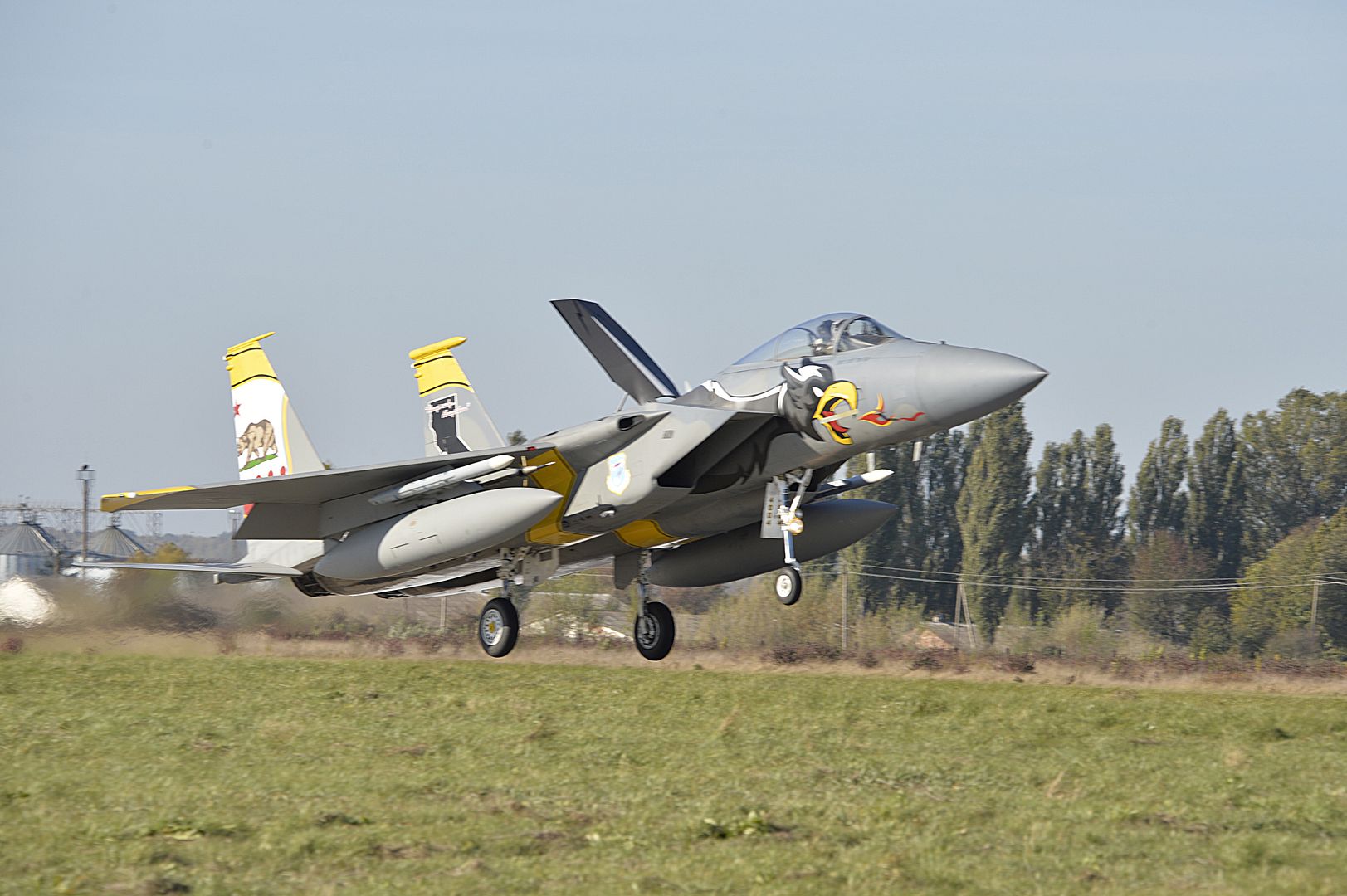
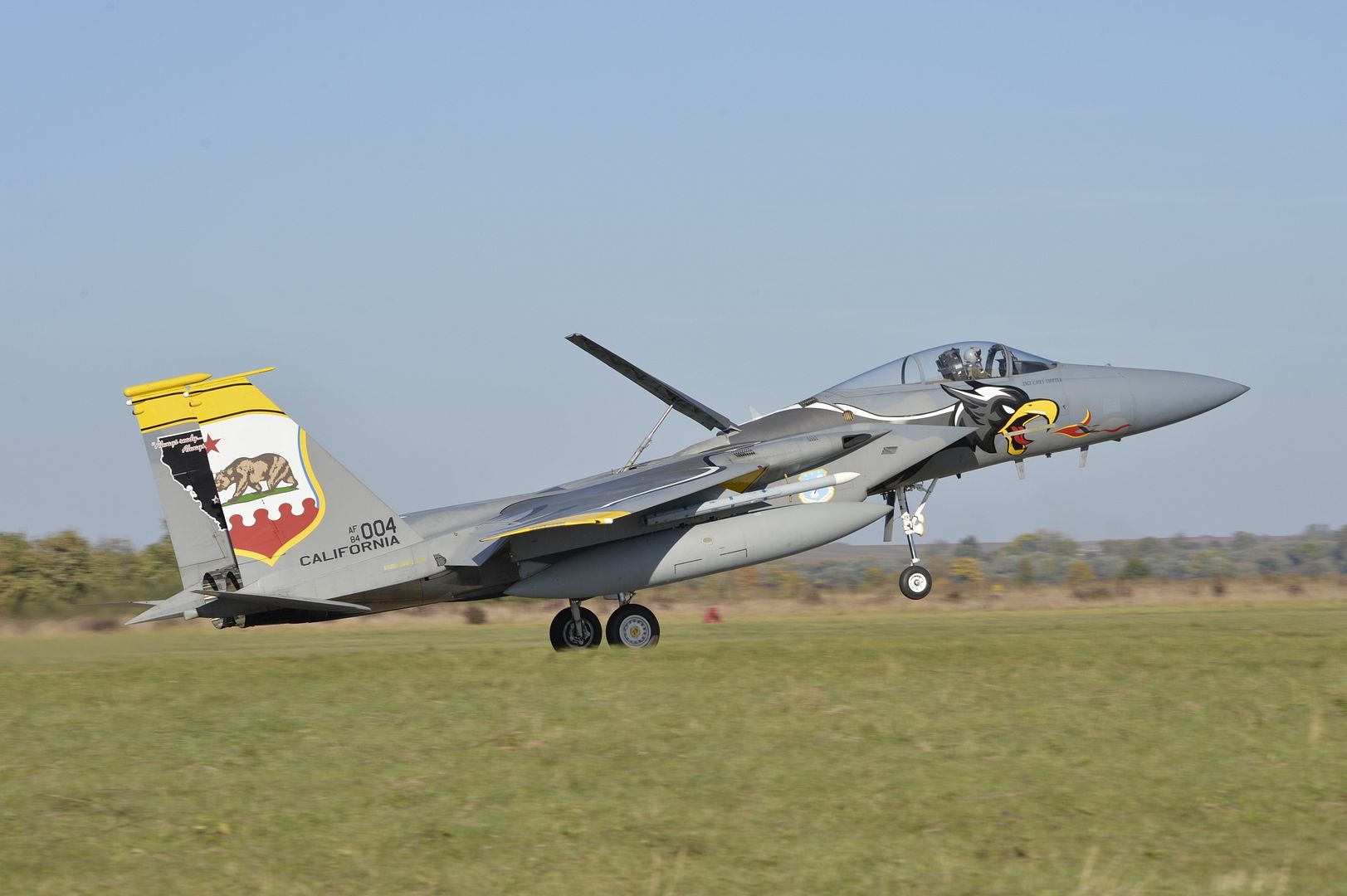
U.S. Air Force F-15C Eagle fighter jets landed for the first time ever today, Oct. 6, on Ukrainian soil to participate in CLEAR SKY 2018. The exercise promotes regional stability and security, while strengthening partner capabilities and fostering trust. The training at CLEAR SKY greatly improves interoperability among participating countries. The F-15C flown by U.S. Air Force Lt. Col. Christopher Ridlon, commander of the 194th Fighter Squadron, California Air National Guard, landed at Starokostiantyniv Air Base where the majority of the multinational exercise involving approximately 950 personnel from nine nations will take place. (U.S. Air National Guard photo by Tech. Sgt. Charles Vaughn)
U. S. Marine Corps Pfc. Cathleen Telfer, an Aircraft Communications/Navigation/Rader Systems Technician with Marine Fighter Attack Squadron 232 conducts maintenance checks on an F/A-18C Hornet during Red Flag-Alaska (RF-A) 19-1 on Eielson Air Force Base, Alaska, October 4, 2018. RF-A 19-1 is a series of U.S. Pacific Air Force commander-directed field training exercise for U.S. and coalition forces to provide a realistic joint offensive counter-air, interdiction, close air support and large-force employment training in a simulated combat environment. (U.S. Marine Corps photo by Sergeant Maria A. Noyola)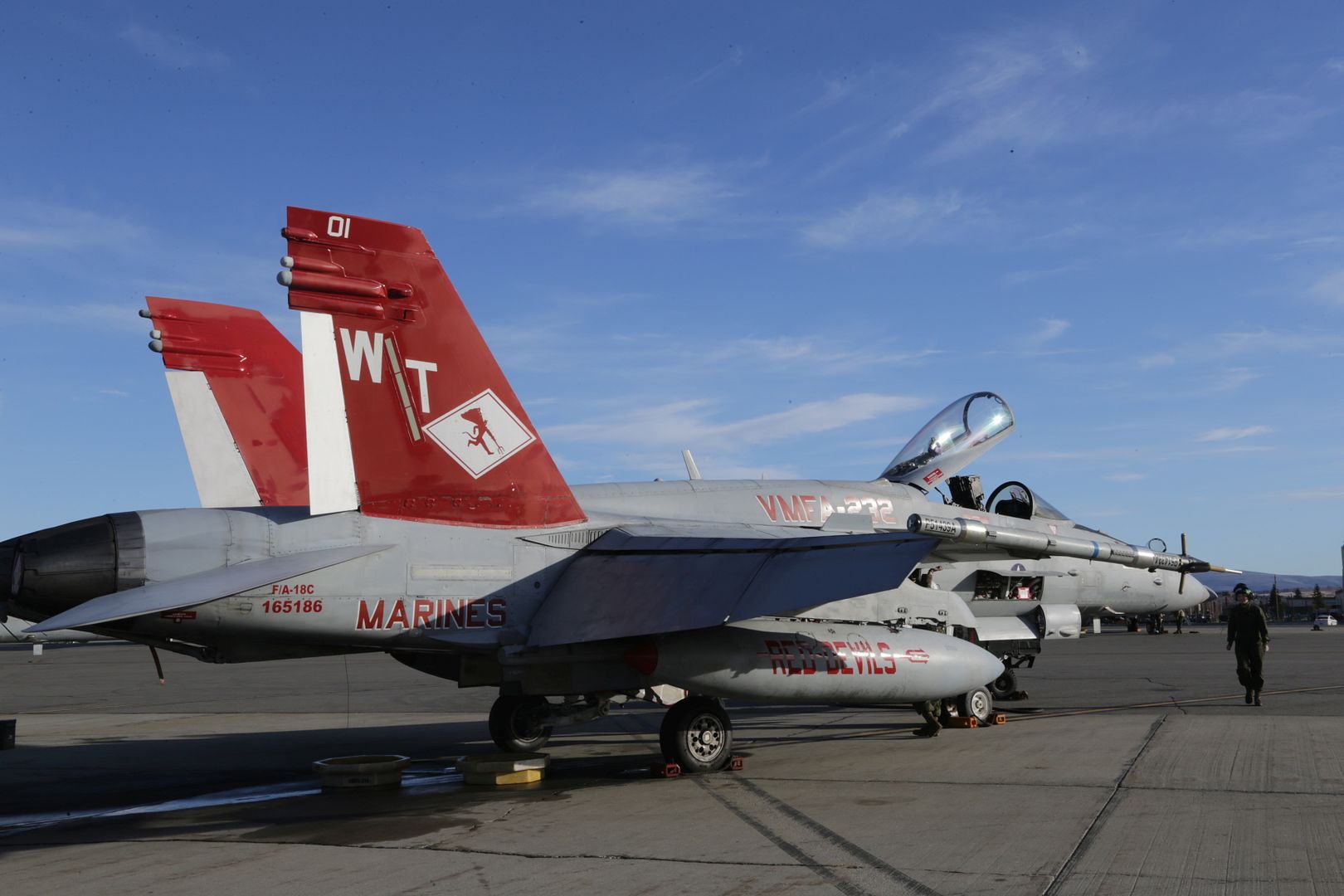
U. S. Marine Corps Sgt. Tyler Hanson and Cpl. Warinthorn Chattongkam, Fixed-Wing Aircraft Airframe Mechanics with Marine Fighter Attack Squadron 232 execute corrosion control maintenance on an F/A-18C Hornet during Red Flag-Alaska (RF-A) 19-1 on Eielson Air Force Base, Alaska, October 4, 2018. RF-A 19-1 is a series of U.S. Pacific Air Force commander-directed field training exercise for U.S. and coalition forces to provide a realistic joint offensive counter-air, interdiction, close air support and large-force employment training in a simulated combat environment. (U.S. Marine Corps photo by Sergeant Maria A. Noyola)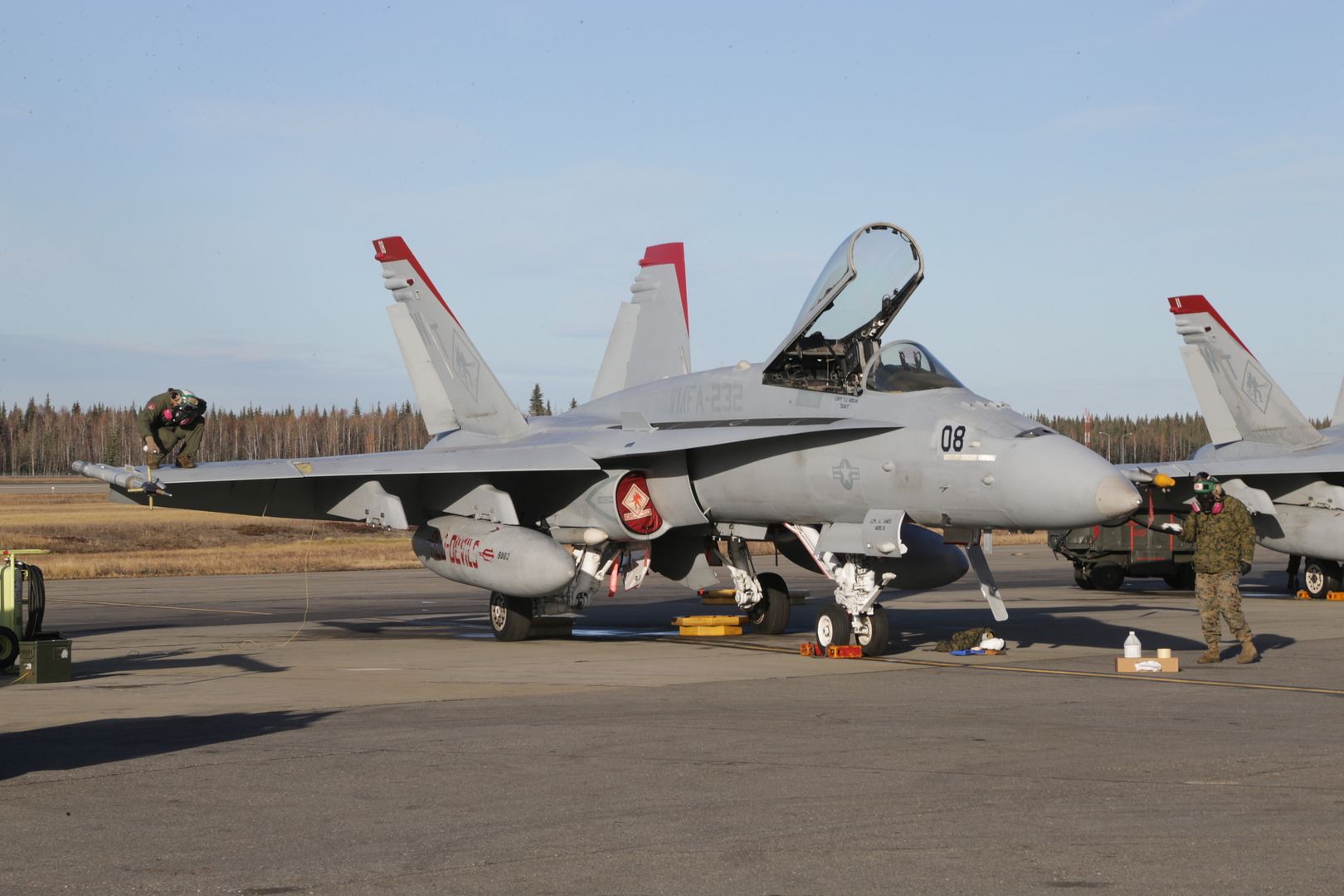
PHILIPPINE SEA (Oct. 05, 2018) A Philippine Navy AW109 Helicopter departs the flight deck of to the amphibious dock landing ship USS Ashland (LSD 48) during a training exercise for KAMANDAG 2. KAMANDAG 2 is a military training exercise led by Philippines between the Armed Forces of the Philippines and U.S. military, along with participants from the Japan Self-Defense Force featuring military-to-military exchanges through various training events, capabilities development training, and humanitarian and civic assistance projects. KAMANDAG is an acronym for the Filipino phrase ?Kaagapay Ng Mga Mandirigma Ng Dagat,? which translates to ?Cooperation of Warriors of the Sea,? highlighting the partnership between the Philippine and United States Militaries. (U.S. Navy photo by Mass Communication Specialist 2nd Class Joshua Mortensen)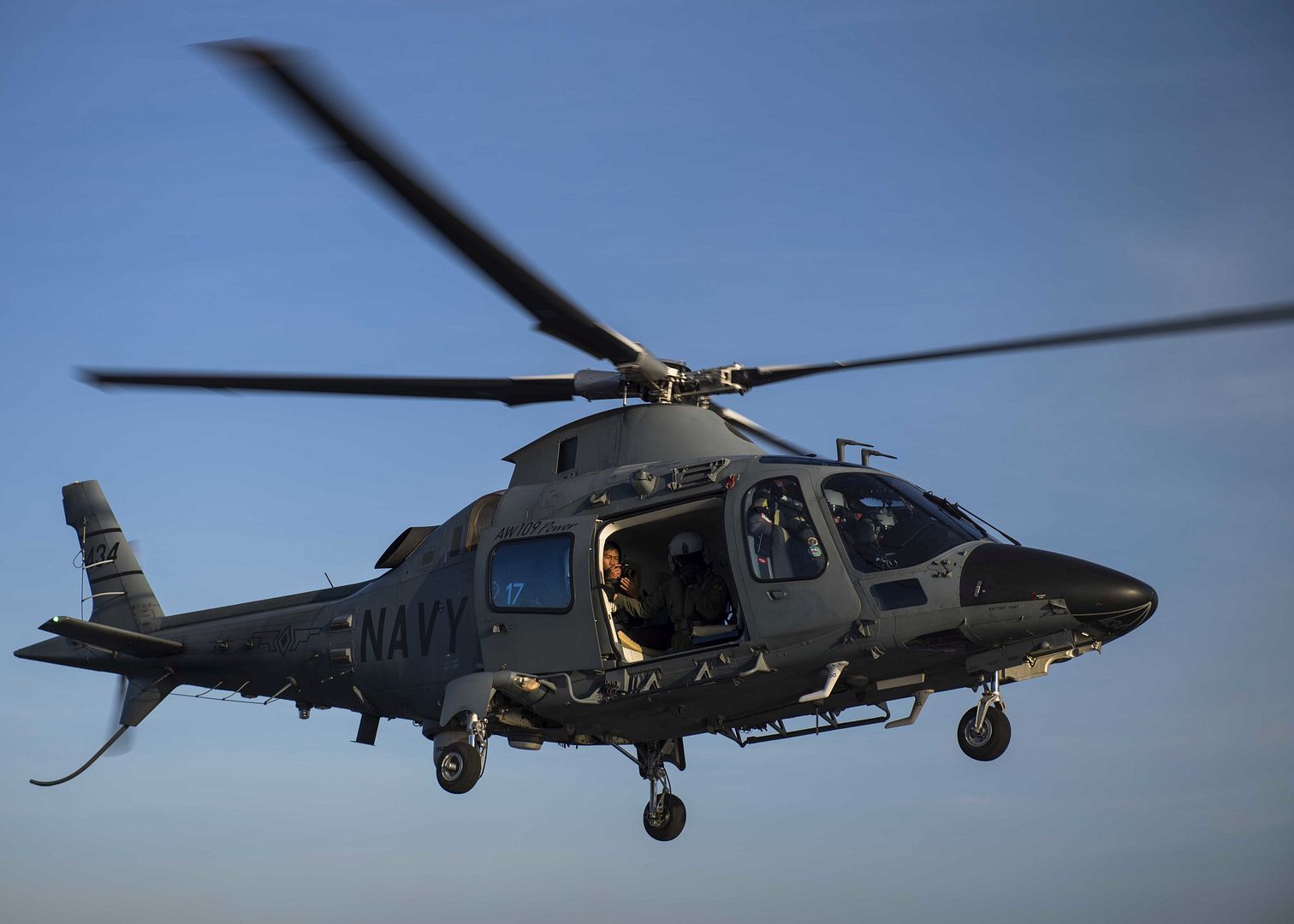
Two U.S. Marine Corps F-35B Lightning II's assigned to the Marine Fighter Attack Squadron 211, 13th Marine Expeditionary Unit, fly a combat mission over Afghanistan, Sept. 27, 2018. During this mission the F-35B conducted an air strike in support of ground clearance operations, and the strike was deemed successful by the ground force commander. The F-35B combines next-generation fighter characteristics of radar-evading stealth, supersonic speed, fighter agility and advanced logistical support with the most powerful and comprehensive integrated sensor package of any fighter aircraft in the U.S. inventory, providing the commander of U.S. Naval Forces Central Command (NAVCENT) significantly improved capability to approach missions from a position of strength. (U.S. Air Force Photo's by Staff Sgt. Corey Hook)
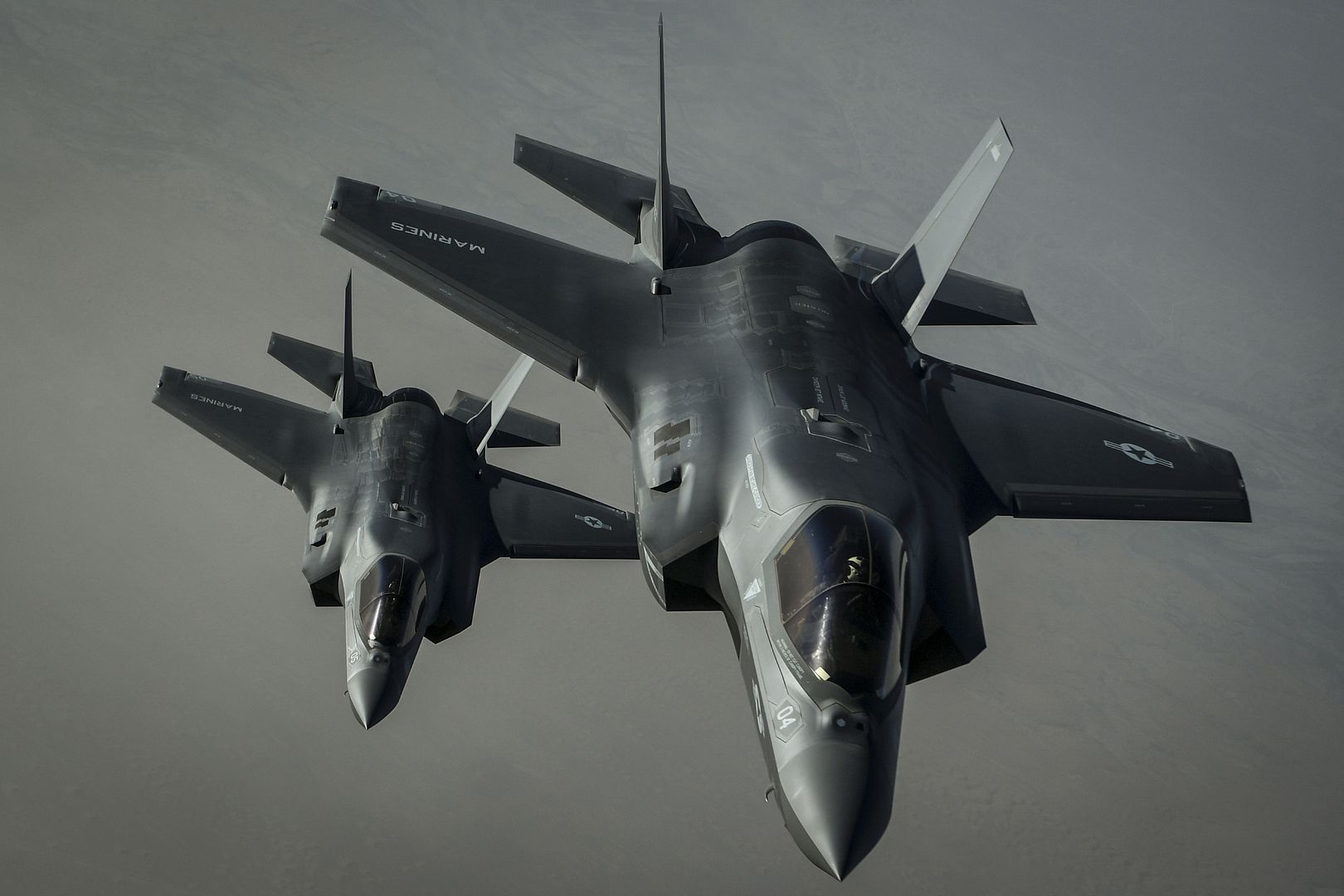


-
 Main AdminA SpaceX Falcon 9 rocket carrying the SAOCOM 1A satellite launched from Vandenberg Air Force Base at 7:21 p.m. PDT. SpaceX completed the secondary mission of landing the first stage of the Falcon 9 rocket at Landing Zone 4, which was previously called SLC-4W, at Vandenberg Air Force Base. This was SpaceX's first land landing attempt at Vandenberg Air Force Base. (U.S. Air Force photo's by Michael Peterson & Daniel J. Quinajon/Released)
Main AdminA SpaceX Falcon 9 rocket carrying the SAOCOM 1A satellite launched from Vandenberg Air Force Base at 7:21 p.m. PDT. SpaceX completed the secondary mission of landing the first stage of the Falcon 9 rocket at Landing Zone 4, which was previously called SLC-4W, at Vandenberg Air Force Base. This was SpaceX's first land landing attempt at Vandenberg Air Force Base. (U.S. Air Force photo's by Michael Peterson & Daniel J. Quinajon/Released)


A Sukhoi Su-27 flies over the flightline during the opening ceremony of exercise Clear Sky 2018 at Starokostiantyniv Air Base, Ukraine, Oct. 8. The exercise promotes regional stability and security, while strengthening partner capabilities and fostering trust. (U.S. Air National Guard photo by Tech. Sgt. Charles Vaughn)
The Blue Angels C-130 known as ?Fat Albert?, and the all Marine crew, perform during the San Francisco Fleet Week Air Show, Oct. 7, 2018. The Blue Angels team is the United States Navy?s flight demonstration squadron, with aviators from the Navy and Marines. ?Fat Albert? provides the logistical support for the team by transporting cargo and crew to various demonstrations around the world. Since 1981, San Francisco Fleet Week has taken place each October, becoming a significant and integral part of the city's local culture and economy. San Francisco Fleet Week 2018 events will take place through Oct 8. (Official Photo by Sgt. Timothy R. Smithers/Released)
The Blue Angels perform during the San Francisco Fleet Week Air Show, Oct. 7, 2018. The Blue Angels team is the United States Navy?s flight demonstration squadron, with aviators from the Navy and Marines. The Blue Angels team was formed in 1946, making it the second oldest formal flying aerobatic team in the world. Since 1981, San Francisco Fleet Week has taken place each October, becoming a significant and integral part of the city's local culture and economy. San Francisco Fleet Week 2018 events will take place through Oct 8. (Official Photo by Sgt. Timothy R. Smithers/Released)
06 October 2018
Delta Air Lines? first A220-100 took off on its first flight from Mirabel airport, Qu?bec, at 02:02 p.m. local time. The aircraft was crewed by A220 programme test pilots. During the successful 2-hour and 53-minute flight, the crew checked the aircraft?s main systems and landed back in Mirabel at 04:55 p.m.
The flight took place a few days after the aircraft rolled out of the paint shop. Next, the aircraft will continue with pre-delivery testing and assembly, as elements of its state-of-the-art interior come together at the A220 assembly line. Delta?s first A220 is scheduled to begin service in early 2019.
Delta Air Lines will be the first U.S. airline to operate the A220 ? at the same time becoming the fourth A220 operator, after Swiss International Air Lines, airBaltic, and Korean Air. Delta is the largest A220-100 customer, with a firm order for 75 aircraft.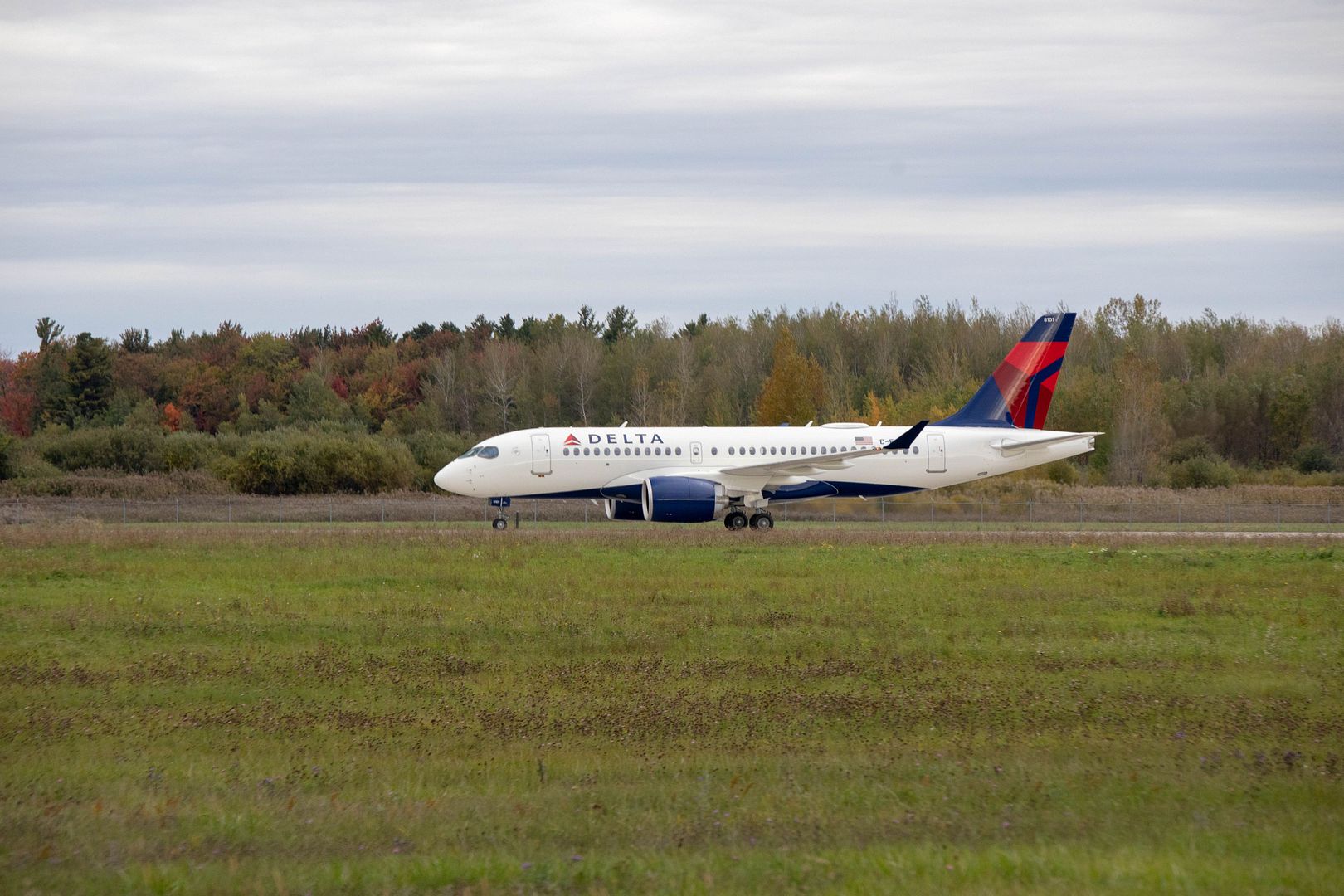
The A220-100 delivers unbeatable fuel efficiency. It brings together state-of-the-art aerodynamics, advanced materials and Pratt & Whitney?s latest-generation PW1500G geared turbofan engines to offer at least 20 percent lower fuel burn per seat compared to previous generation aircraft.
With an order book of over 400 aircraft to date, the A220 has all the credentials to win the lion?s share of the 100- to 150-seat aircraft market, estimated to represent at least 7,000 aircraft over the next 20 years.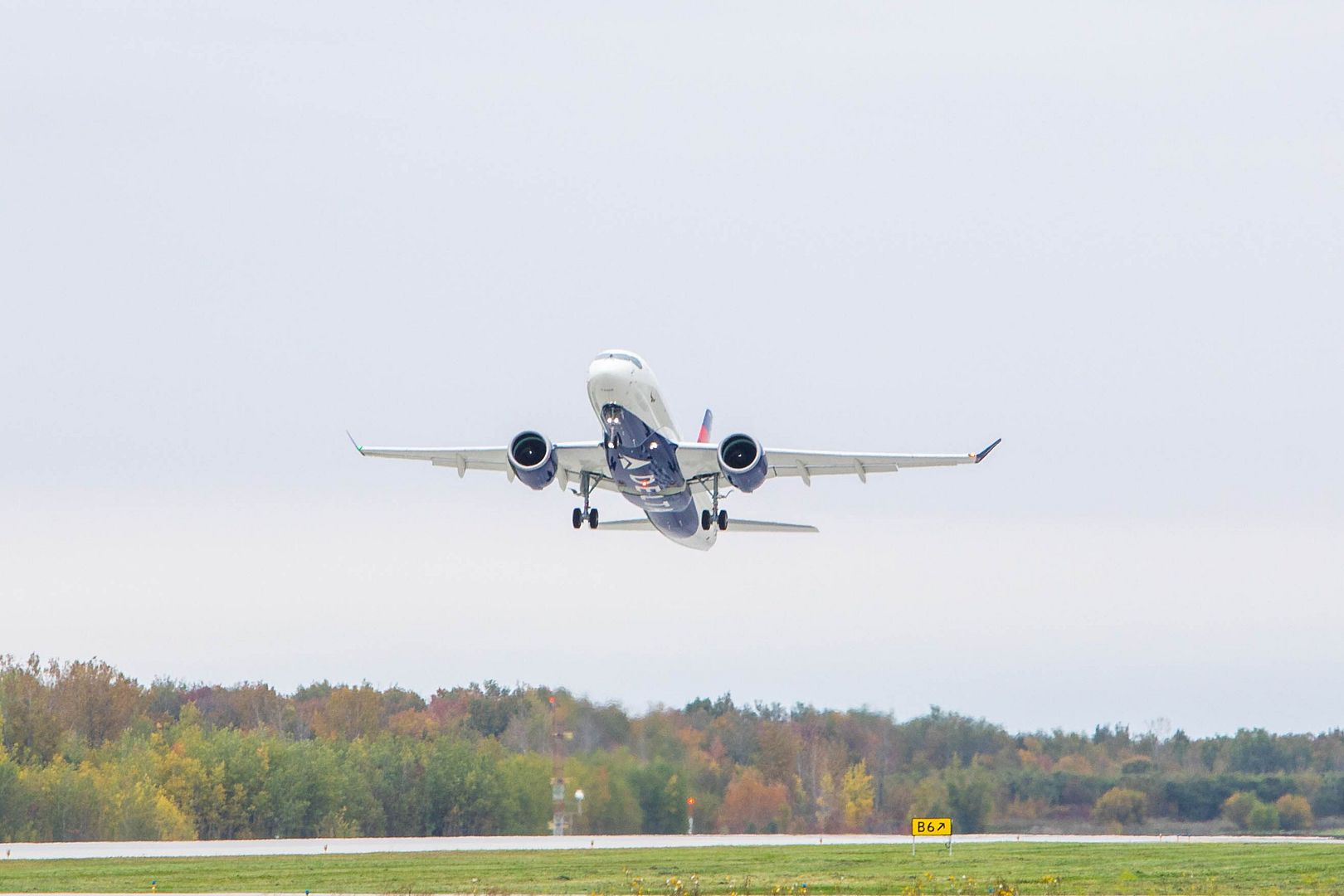
08 October 2018
Scoot, the low cost wing of Singapore Airlines, has taken delivery of its first A320neo in Toulouse, France.
Scoot has placed orders for 39 A320neo aircraft under its fleet renewal programme. The new addition complements the airline?s existing fleet of 27 A320ceo Family aircraft.
Powered by Pratt and Whitney PurePower engines, the new aircraft features 186 seats in Scoot?s configuration. Selected for its outstanding operational efficiency, comfort and range, the A320neo will be deployed by Scoot on its services across Asia.
Featuring the widest single aisle cabin in the sky, the A320neo Family incorporates the very latest technologies including new generation engines and Sharklets, which together deliver at least 15 percent fuel savings at delivery and 20 percent by 2020. With more than 6,100 orders received from over 100 customers, the A320neo Family has captured nearly 60 percent share of the market.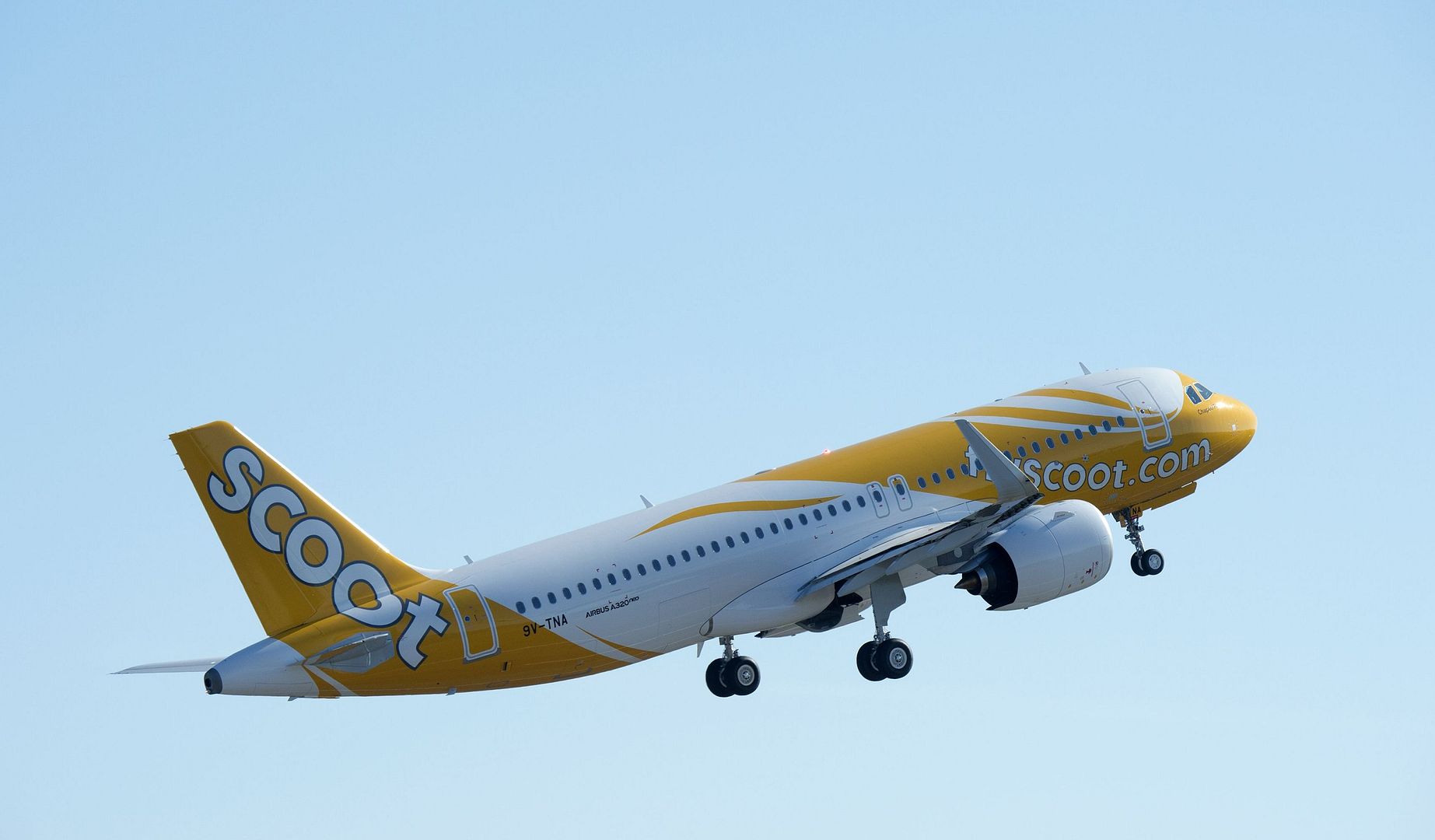
-
6 years agoWed Oct 10 2018, 10:14pm
 Main AdminWRIGHT-PATTERSON AIR FORCE BASE, Ohio (AFNS) -- The Secure Live Virtual Constructive, Advanced Training Environment, program in the Air Force Research Laboratory's 711th Human Performance Wing, concluded a 40-month effort with a Phase III capstone demonstration in September at Nellis Air Force Base, Nevada.
Main AdminWRIGHT-PATTERSON AIR FORCE BASE, Ohio (AFNS) -- The Secure Live Virtual Constructive, Advanced Training Environment, program in the Air Force Research Laboratory's 711th Human Performance Wing, concluded a 40-month effort with a Phase III capstone demonstration in September at Nellis Air Force Base, Nevada.
This final phase, just one of three two-week demonstrations that began in June, showcased live United States Air Force F-15E and U.S. Navy F/A-18/F aircraft; virtual F-16 and F/A-18 simulators; and constructive computer-generated entities within a highly secure virtual environment.
?This training capability will allow pilots to train like they fight against realistic threats in a secure, high fidelity training environment by combining synthetic and real-world air combat training,? explained Dr. Winston ?Wink? Bennett, AFRL?s 711th HPW technical advisor. ?Until the SLATE demonstrations, there were only limited and constrained LVC integrated evaluations. The three Phases of SLATE allowed us to fully demonstrate technical capabilities and alternatives to reduce risk for LVC as a future readiness concept.?
Bennett lauded the successful demonstration, but also alluded to future improvements in the training, if necessary.
The team was able to record mission performance and enterprise functional data at a level of quality and quantity that has never been done before, Bennett said. ?We were also able to get solid feedback on what works and needs further work in the concept if it is to move forward.?
He also spoke of a specific event during the last phase of the demonstration that was particularly exciting for the future of pilot training and LVC.
?One of the things we demonstrated was something we call ?untethered LVC.? What untethered allows us to do is conduct realistic live and constructive training anywhere we need to. This is because the modified aircraft and pods can host and distribute specific scenarios we can program into the pods with or without a range infrastructure,? Bennett explained. ?Moreover, we were able to demonstrate in Phase III that the untethered mode can supplement their actual live training even if the range infrastructure goes down or air to ground infrastructure slows down. One of the aircraft can serve as the host and the other aircraft as clients, but they can all see and tactically work through the same scenario in real time anywhere.?
This Advanced Technology Demonstration was established in March 2015 with the specific direction to evaluate critical enabling technologies required to field a live, virtual and constructive-capable training system architecture and structure.
?There are two major pieces of SLATE,? explained Bennett. ?The first is the secure piece ? we want to be able to train realistically and not give away the things that make us the best in the world to the bad guys. So it has to be a secure way of transmitting information back and forth. The second major piece is the LVC ? live, virtual and constructive. The live aspect is the military members actually flying in their operational airplanes, driving in their operational truck or vehicle on the ground, remotely piloted aircraft ? they?re using their operational equipment. But we?re able to tie that to a virtual environment which is a simulation of that operational equipment. And the constructive environment which is computer generated models and entities that allow us to create realistic threats, realistic bad guys and behaviors that our folks can actually go after.?
Although managed from AFRL?s 711HPW, SLATE is a Department of Defense program that leverages expertise in other AFRL directorates, Air Combat Command, Air Force Life Cycle Management Center, and the United States Navy, among others.
?For the last 40 months, the team really pushed hard on the ?state of the art? in terms of some key technologies that were needed to make SLATE a successful demonstration,? Bennett said.
The Secure Live Virtual Constructive Advanced Training Environment LVC pod is attached to an F-16 with the 64th Aggressor Squadron during an Electromagnetic Interference/Compatibility test at Nellis Air Force Base, Nevada, during Phase I of the demonstration in June. (U.S. Air Force photo by William Graver)
Donald Simones, a subject matter expert in the Air Force Research Laboratory?s 711th Human Performance Wing, flies a virtual F-16 in a Deployable Tactical Trainer during the Secure Live Virtual Constructive Advanced Training Environment Phase III capstone demonstration at Nellis Air Force Base, Nevada in September. The live aircraft, such as the one shown on the screen, were able to see and interact with the virtual players like Simones during the demonstration. (U.S. Air Force photo by William Graver)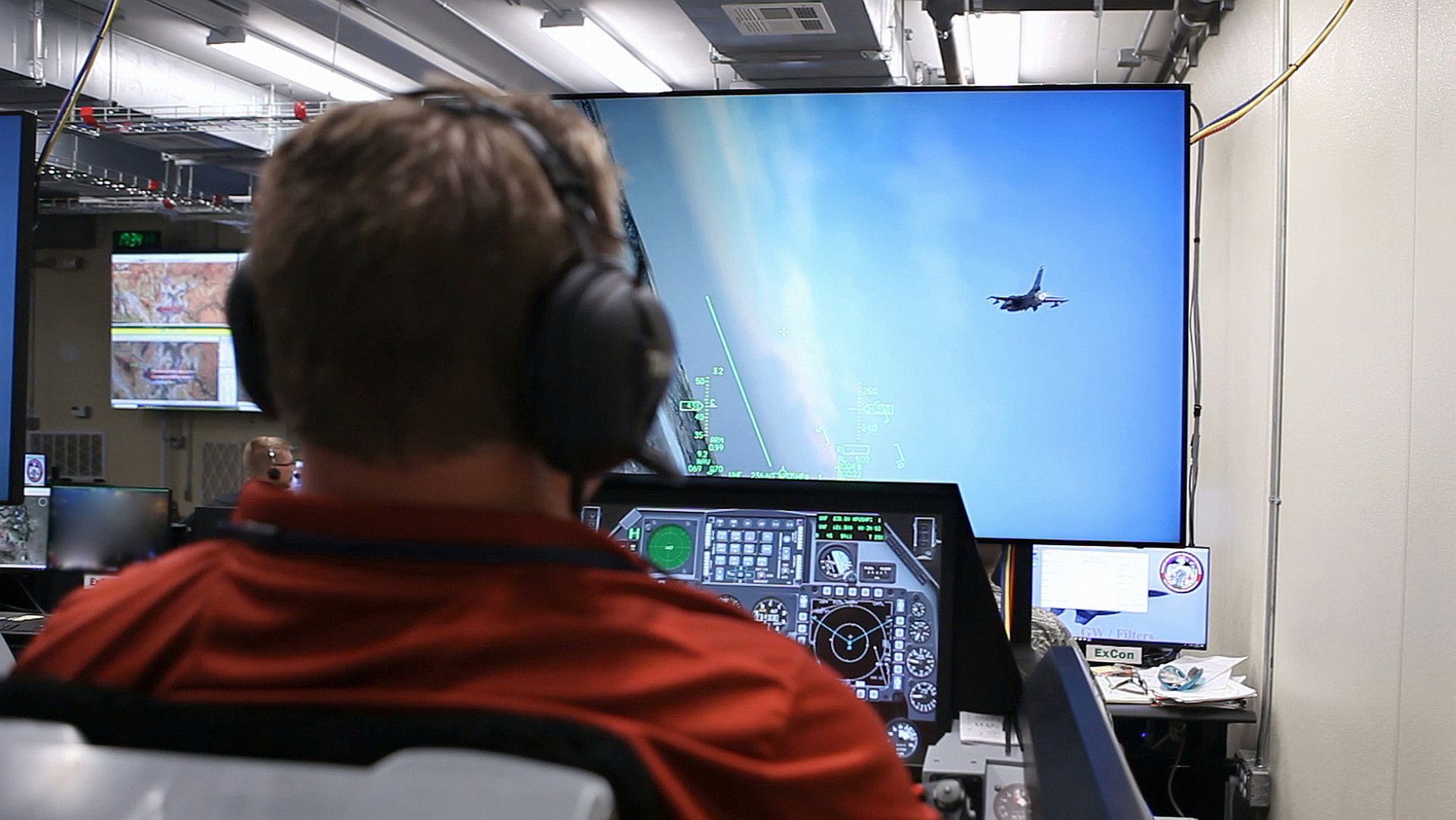
Aircraft and personnel from Coast Guard Air Stations Corpus Christi, Houston and New Orleans are staged at Coast Guard Aviation Training Center Mobile, Alabama, in preparation for possible Hurricane Michael response operations October 9, 2018. The Coast Guard urges all mariners to continuously monitor local and national weather sources and avoid coastal areas that may be impacted by the storm. (U.S. Coast Guard photo's by Petty Officer 3rd Class Lexie Preston)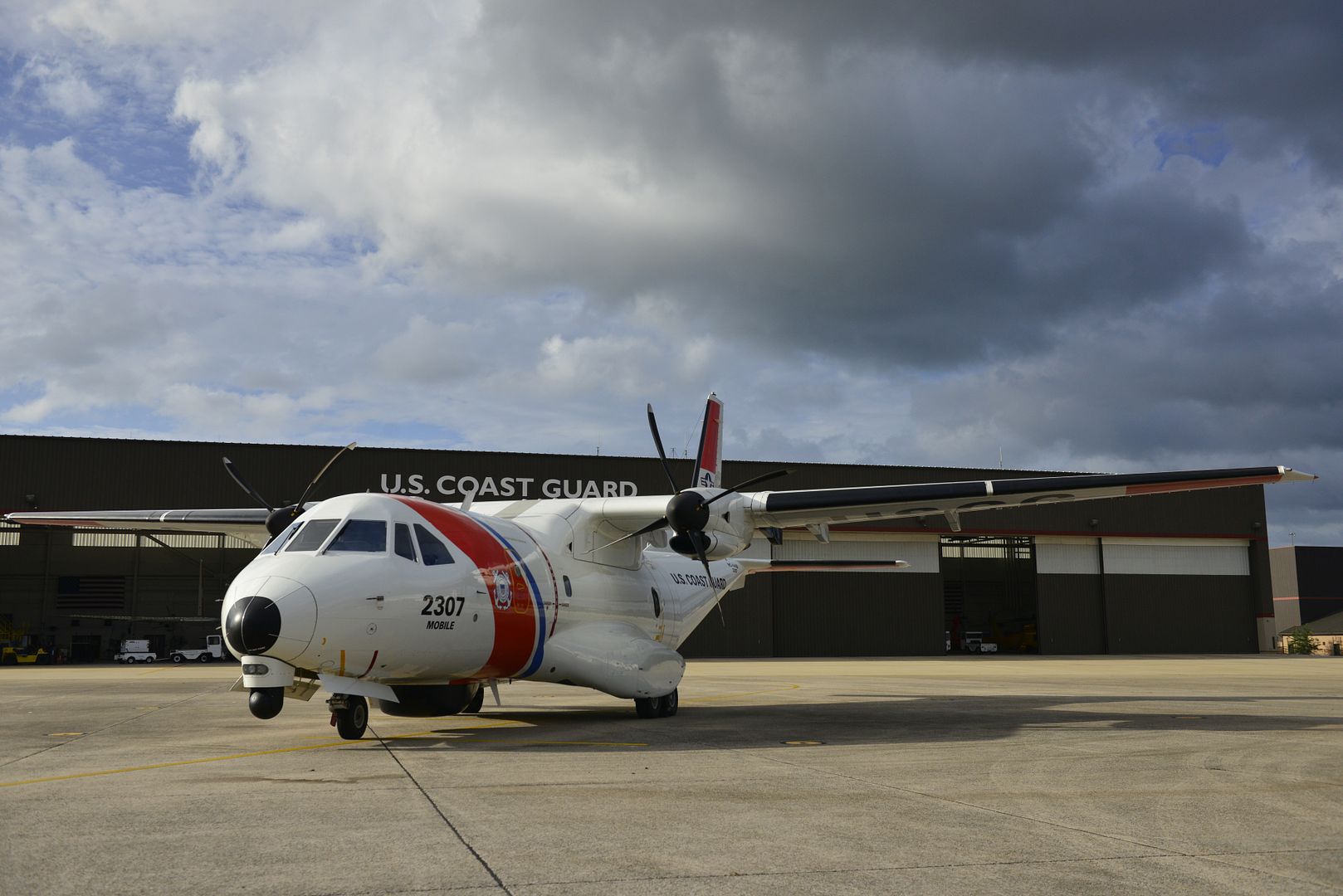
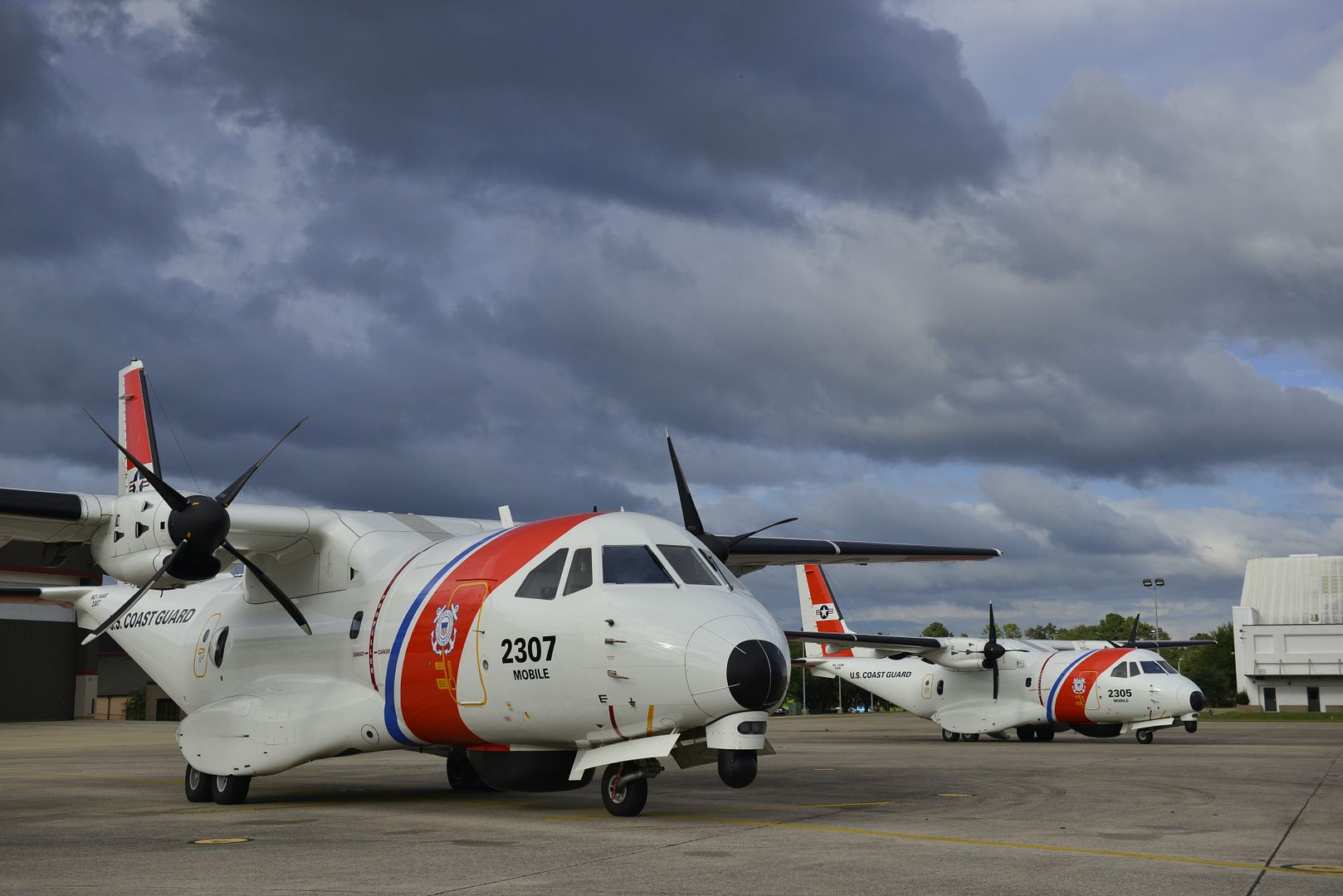
U.S. Marines with Weapons and Tactics Instructors Course 1-19, use a CH-53E Super Stallion helicopter for a combat assault transport of troops and equipment during Assault Support Tactics 4 at Forward Operating Base Laguna, U.S. Army Yuma Proving Grounds, Ariz., Oct. 9, 2018. WTI, a seven week training event hosted by Marine Aviation Weapons and Tactics Squadron 1, emphasizes operational integration of the six functions of Marine Corps aviation in support of a Marine air-ground task force. This year, Marines and Sailors with the Special Purpose Marine Air-Ground Task Force Crisis Response-Central Command 19.1 served as the command element for WTI. (U.S. Marine Corps Photo by Sgt. Justin Huffty)
A U.S. Air Force F-15C assigned to the 144th Fighter Wing, California, takes off from Starokostiantyniv Air Base, Ukraine, Oct. 9 as part of the Clear Sky 2018 exercise. Exercises and engagements with our allies and partners demonstrate and strengthen our shared commitment to global security and stability. (U.S. Air National Guard photo by Tech. Sgt. Charles Vaughn)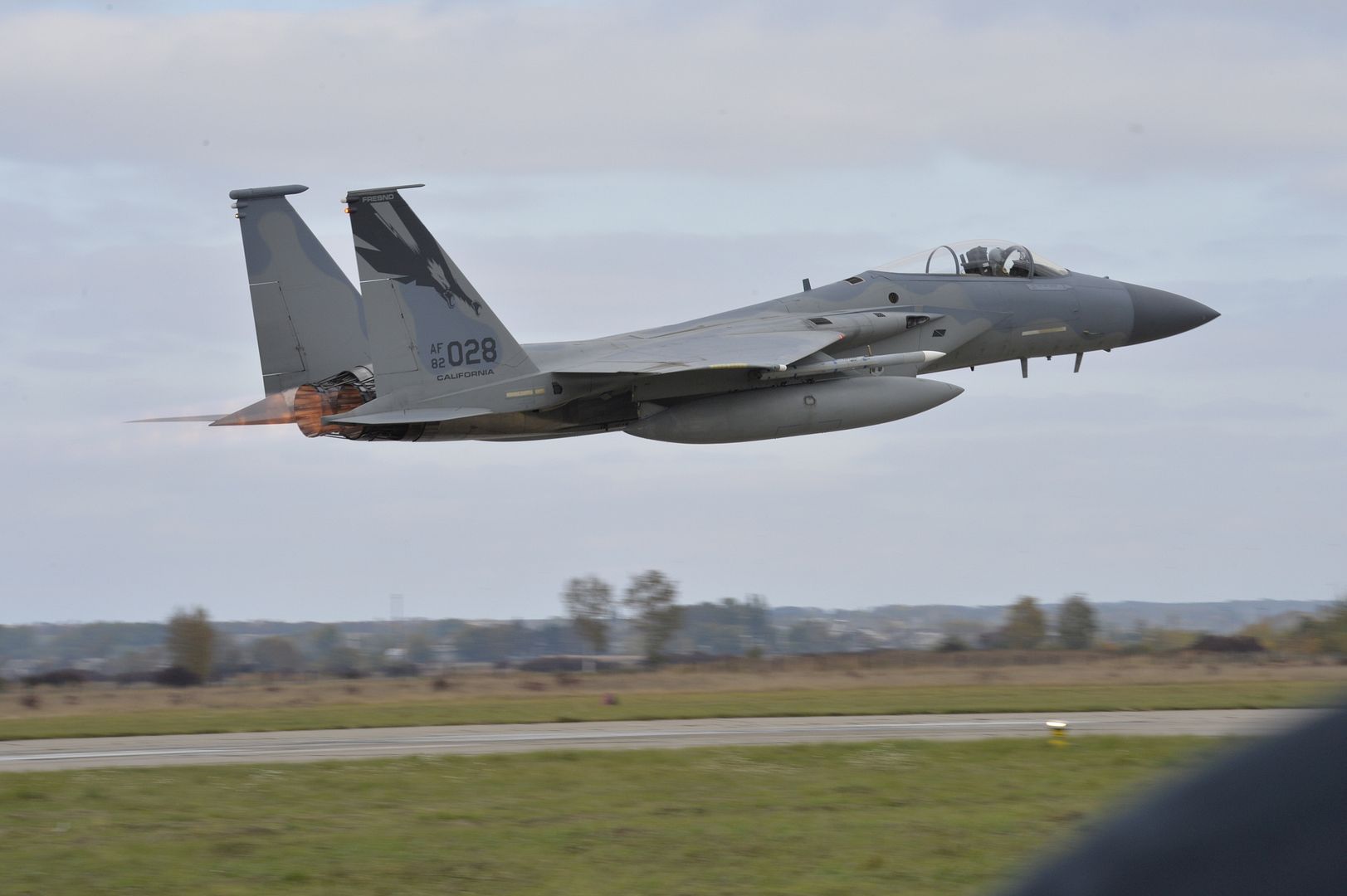
A MiG-29 Fulcrum takes off from Starokostiantyniv Air Base, Ukraine, Oct. 9 as part of the Clear Sky 2018 exercise. The exercise promotes regional stability and security, while strengthening partner capabilities and fostering trust. (U.S. Air National Guard photo's by Tech. Sgt. Charles Vaughn)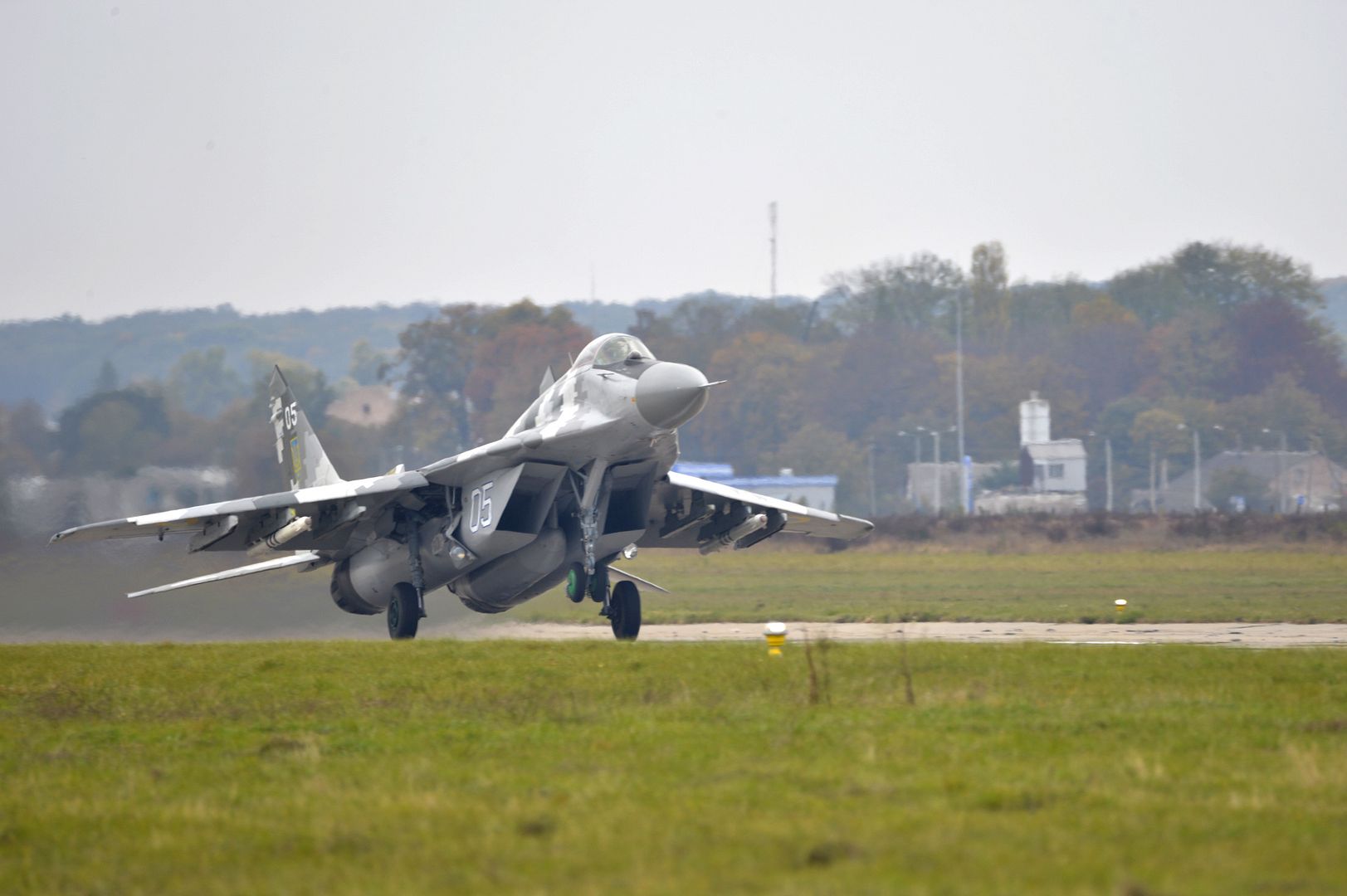

A MiG-29 Fulcrum lands at Starokostiantyniv Air Base, Ukraine, Oct. 9 as part of the Clear Sky 2018 exercise. The exercise promotes regional stability and security, while strengthening partner capabilities and fostering trust. (U.S. Air National Guard photo by Tech. Sgt. Charles Vaughn)
Su-27's take off from Starokostiantyniv Air Base, Ukraine, Oct. 9 on the first day of flying operations for Clear Sky 2018. The exercise promotes regional stability and security, while strengthening partner capabilities and fostering trust. (U.S. Air National Guard photo's by Tech. Sgt. Charles Vaughn).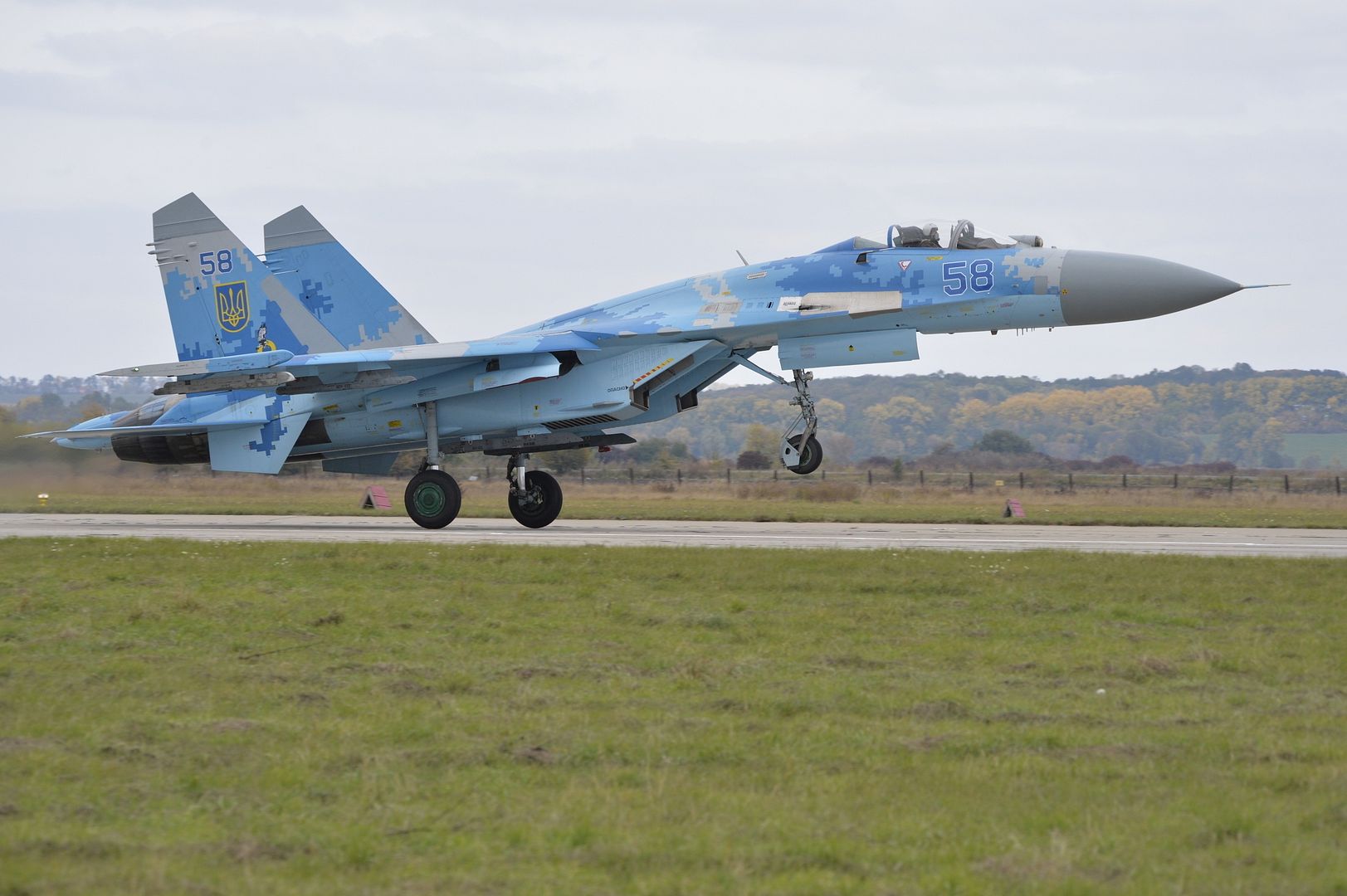
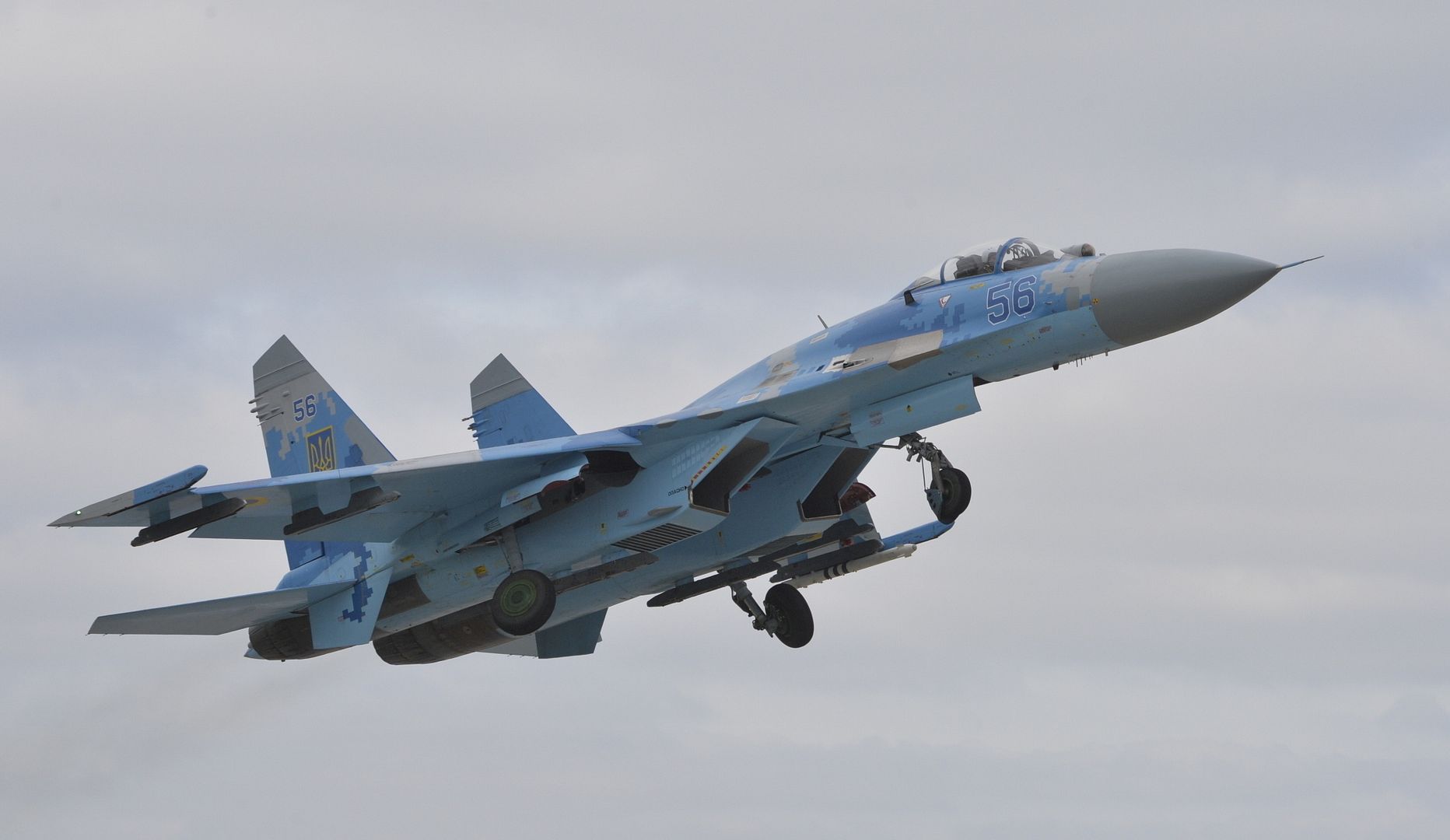

F/A-18E Super Hornet's assigned to the "Red Rippers" of Strike Fighter Squadron (VFA-11), deployed from the Nimitz-class aircraft carrier USS Harry S. Truman (CVN 75) launch for a sortie Oct. 9, 2018, at Royal Air Force Lakenheath, England. The carrier is currently operating in the U.S. 6th Fleet area of operations, fostering cooperation with regional allies and partners, strengthening regional stability, and remaining vigilant, agile and dynamic. (U.S. Air Force photo's/Senior Airman Malcolm Mayfield)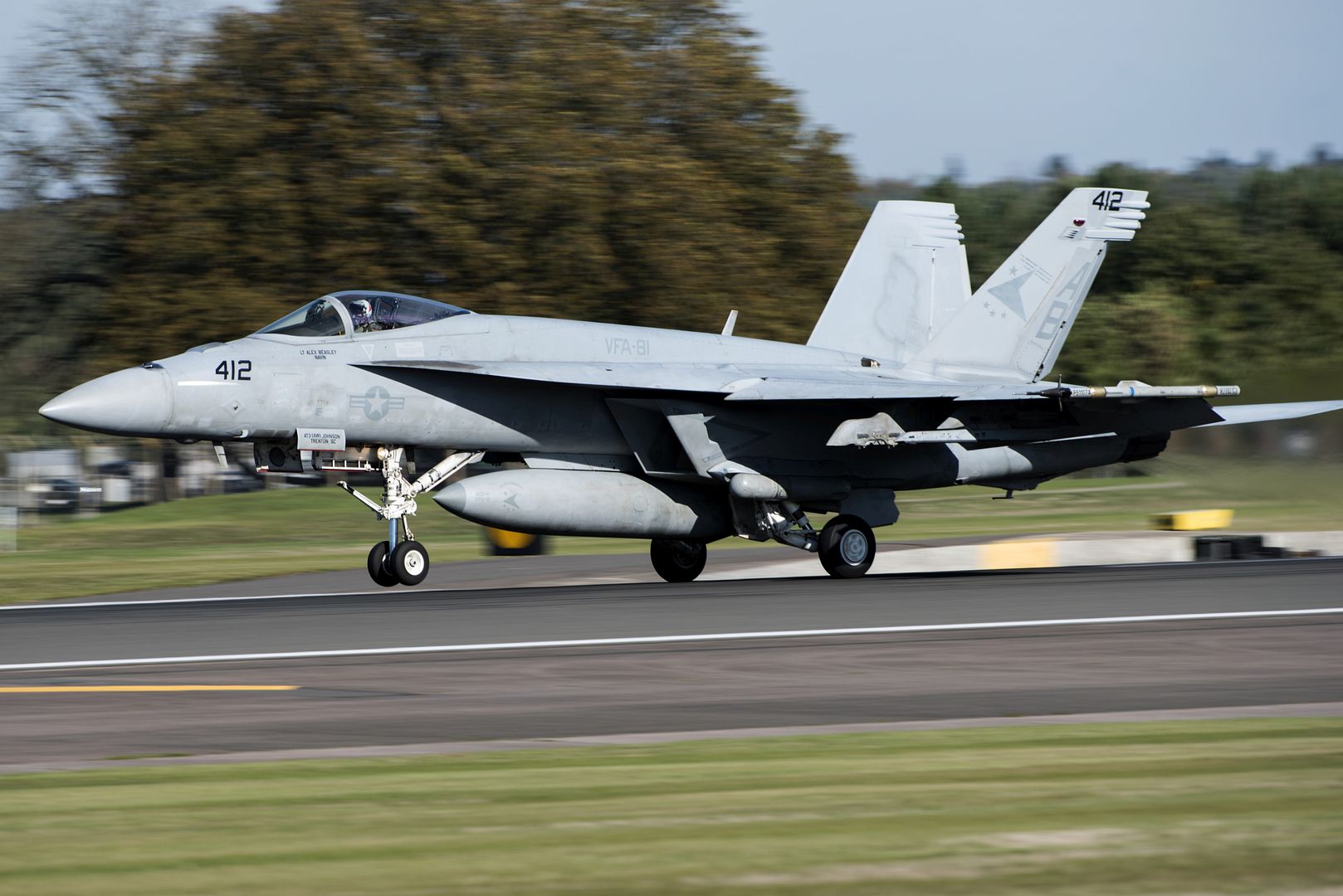
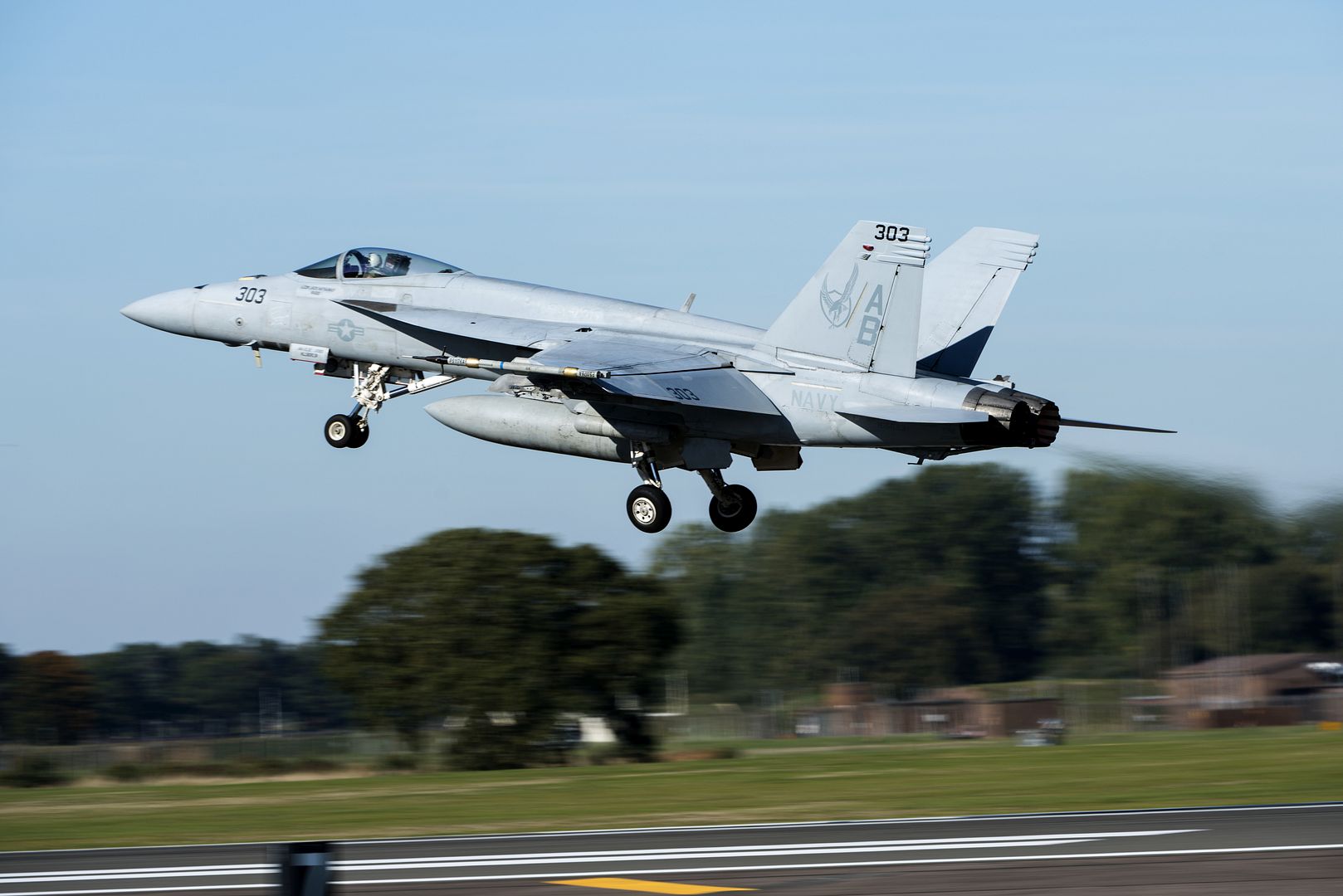
An F-22 Raptor assigned to the 1st Fighter Wing, Joint Base Langley-Eustis, Va. launches for a sortie at Royal Air Force Lakenheath, England Oct. 9, 2018. The Raptors are training with U.S. allies and partners as a demonstration of U.S. commitment to European regional security. (U.S. Air Force photo's/Senior Airman Malcolm Mayfield)

An F-15C Eagle assigned to the 493rd Fighter Squadron and an F/A-18E Super Hornet assigned to the "Red Rippers" of Strike Fighter Squadron (VFA-11), deployed from the Nimitz-class aircraft carrier USS Harry S. Truman (CVN 75) prepare to launch for a sortie Oct. 9, 2018, at Royal Air Force Lakenheath, England. The aircraft are training with 5th generation aircraft as a demonstration of U.S. commitment to European regional security. (U.S. Air Force photo/Senior Airman Malcolm Mayfield)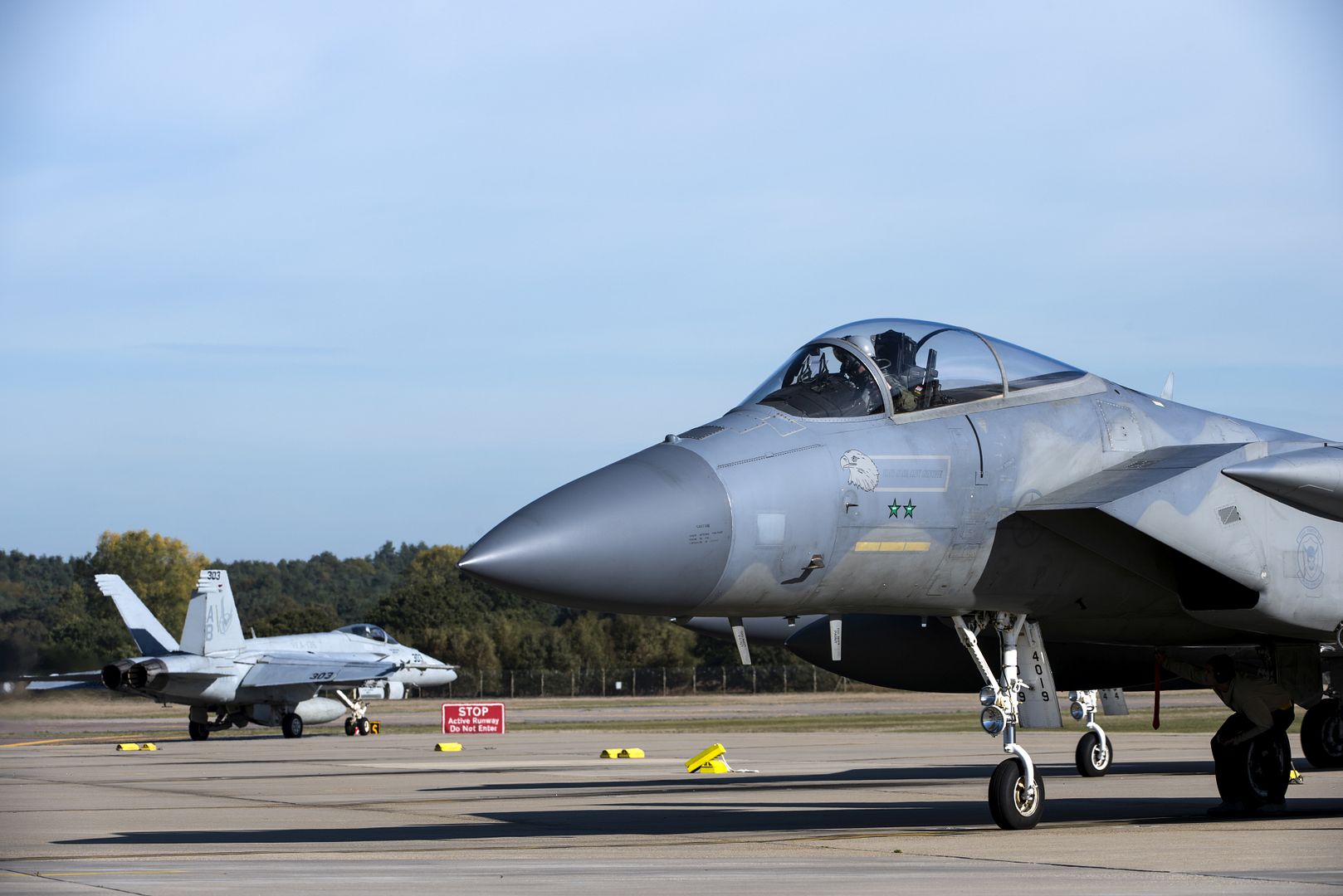
NORTH CHARLESTON, S.C., Oct. 8, 2018 /PRNewswire/ -- Boeing [NYSE:BA], Air Lease Corp. [NYSE:AL; "ALC"], and Air Tahiti Nui celebrated the delivery of the airline's first 787-9 Dreamliner, via lease from ALC. This is the first Boeing airplane to join the Tahitian airline, which plans to use the longest-range Dreamliner to replace aging A340s and connect its home base in the South Pacific with world capitals such as Paris, Tokyo and Los Angeles.
Air Tahiti Nui joins other carriers in the Pacific who operate long-distance routes in switching to the super-efficient and long-range 787-9. The airplane can fly up to 7,635 nautical miles (14,140 km), while reducing fuel use and emissions by 20 to 25 percent compared to older airplanes.
Air Tahiti Nui configured its new Dreamliner to seat 294 passengers in three classes. The cabin features a new business class equipped with 30 full lie-flat seats, along with 32 premium economy seats.
"Our dream has finally become reality with the arrival of Air Tahiti Nui's first 787-9 Dreamliner," said Michel Monvoisin, Chief Executive Officer and Chairman of Air Tahiti Nui. "The Tahitian Dreamliner will make flying to one of the world's treasures an unforgettable experience, as we introduce new seats and a culturally inspired cabin on the 787. As we celebrate our 20th anniversary this year, the 787 Dreamliner will guide us towards another successful 20 years and beyond."
The airline announced in 2015 it would lease two 787s through ALC and purchase two 787s directly from Boeing as part of its plan to upgrade its fleet for the future.
French Polynesia President Edouard Fritch and other government dignitaries joined the airline in celebrating the milestone delivery at Boeing's South Carolina Delivery Center.
"We are pleased to deliver ALC's first aircraft to Air Tahiti Nui," said Marc Baer, Executive Vice President of Air Lease Corporation. "The capabilities of the 787 will help enhance Air Tahiti Nui's commercial operations and will significantly increase the efficiency of its future fleet."
"We are honored to welcome Air Tahiti Nui as a new Boeing customer and the latest member of the 787 Dreamliner family. We are confident the airplane's market-leading efficiency and unmatched passenger comforts will transform the airline's operation," said Ihssane Mounir, senior vice president of Commercial Sales and Marketing for The Boeing Company. "This delivery opens a new partnership between Boeing and Air Tahiti Nui, and demonstrates the strength of our partnership with ALC."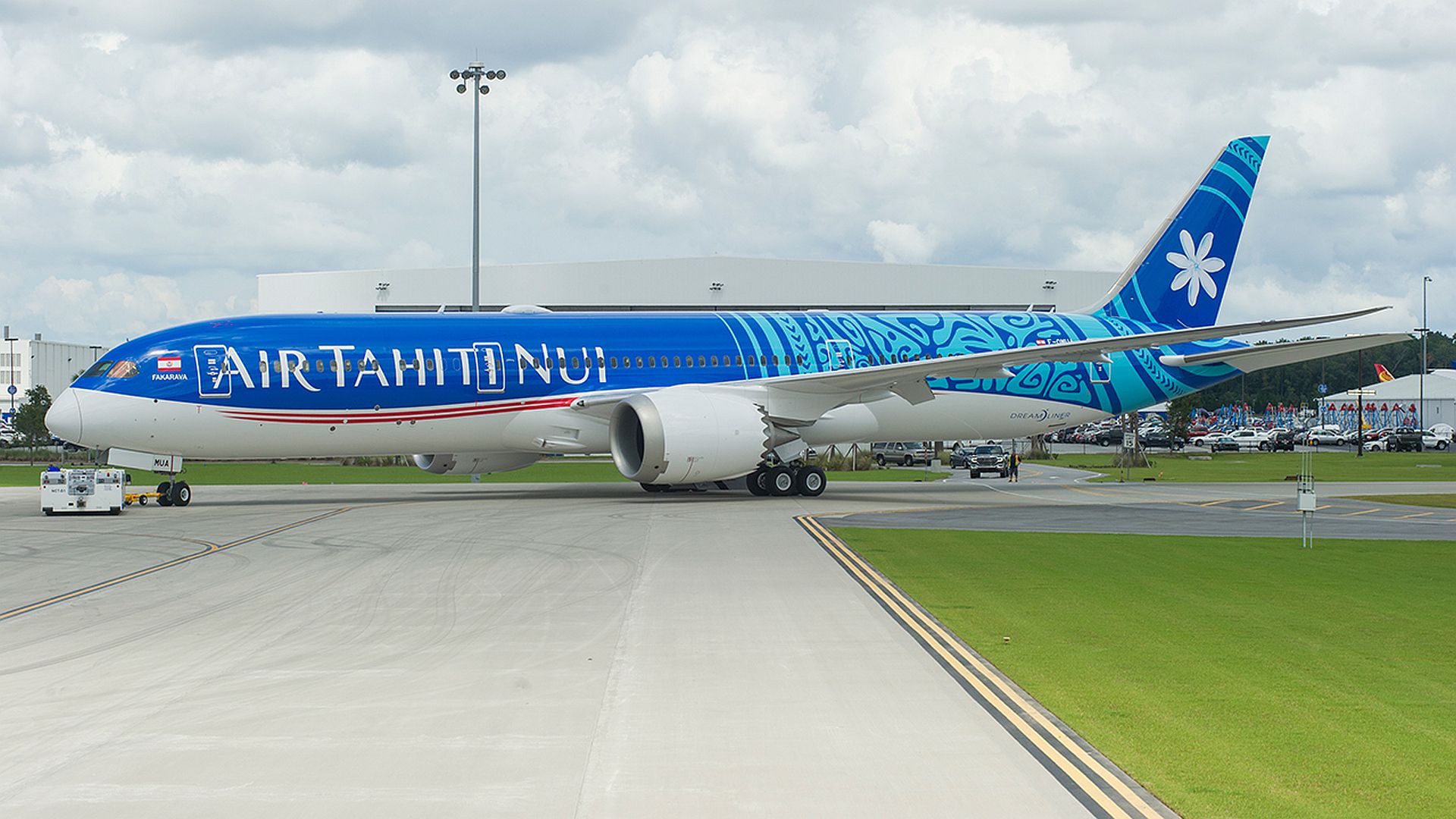
Airbus Corporate Jets (ACJ) is displaying an ACJ319 at the NBAA show, highlighting the full-size living space on offer. Operated by K5 Aviation and available for VVIP charter, this particular ACJ319 is making its airshow debut.
?An Airbus corporate jet gives wings to more productive and sociable lifestyles in the sky than traditional business jets, while shrinking the distance between continents in elegantly affordable style,? says ACJ President Benoit Defforge.
The ACJ320 Family can do this because it features the widest and tallest cabin of large traditional business-jets, while being similar in size and costing about the same to fly.
Continuous improvements mean that the ACJ320 family now comprises the ACJ319neo, flying eight passengers 6,750 nm/12,500 km or more than 15 hours, and the ACJ320neo, flying 25 passengers 6,000 nm/11,100 km or more than 13 hours.
Deliveries of the ACJ320neo begin in the coming months, and those of the ACJ319neo next year. Customers include Acropolis Aviation, Comlux and K5 Aviation.
Both aircraft feature new-generation engines and Sharklets to save fuel, to enable even more intercontinental range and to ensure that they keep their value well.
Airbus also offers a complete family of VIP widebodies that can carry even more passengers nonstop to the world - including the new ACJ330 neo and ACJ350 XWB.
Today, the customers of more than 190 ACJs benefit from the robust reliability and worldwide support that comes from their airliner heritage, plus services tailored to corporate jet needs.
Together, ACJ and Airbus Corporate Helicopters (ACH) are uniquely well placed to provide modern and efficient combined solutions to the air travel needs of customers worldwide.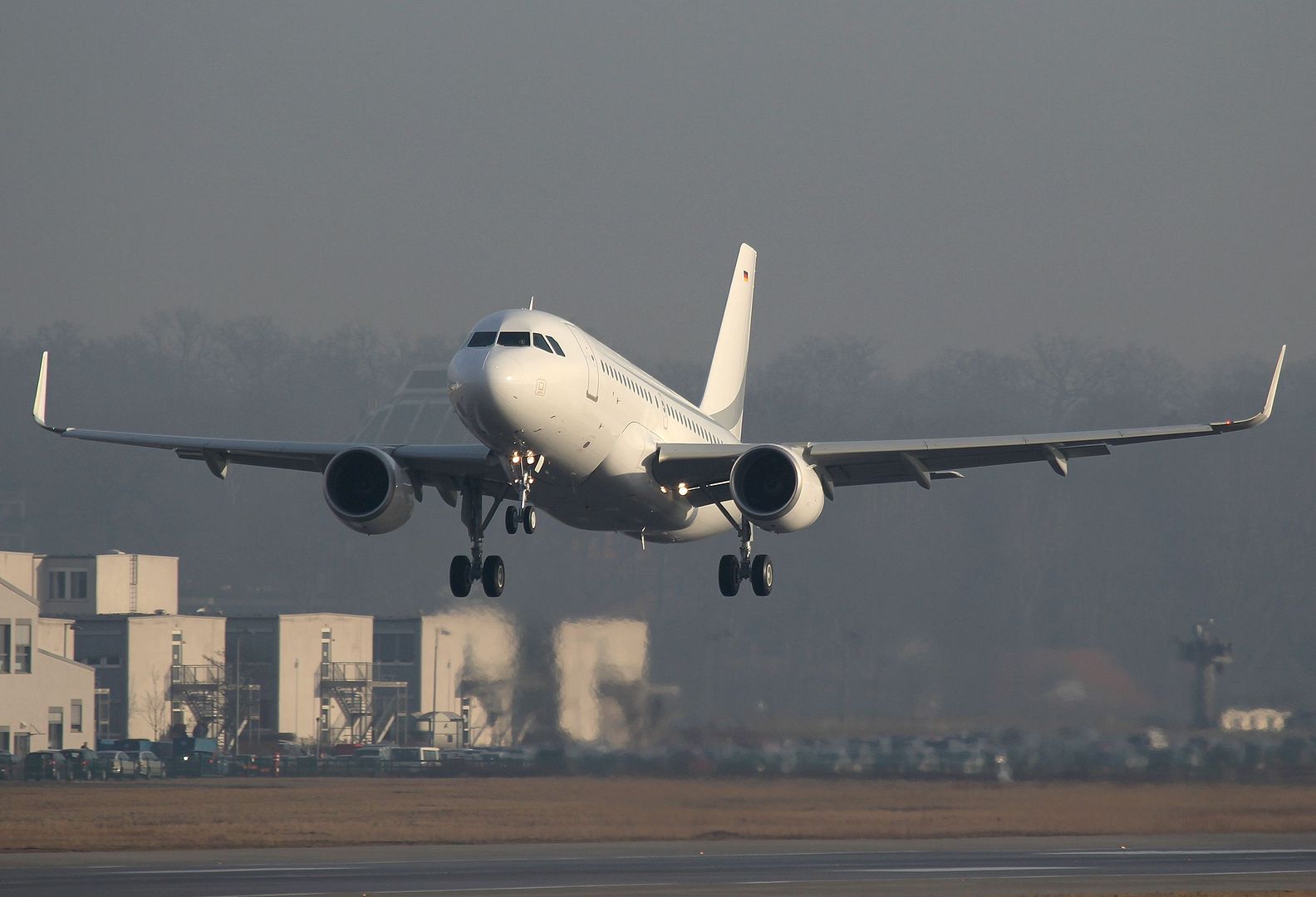
Gavi?o Peixoto, Brazil, October, 9, 2018 ? Embraer achieved another important milestone today with the completion of the maiden flight of the first series production multi-mission medium airlift KC-390. As agreed with the Brazilian Air Force, the aircraft will now join the flight test campaign, in which more than 1,900 flight hours have already been logged. Civil certification of the basic aircraft will be granted by Brazilian aviation authority ANAC (Ag?ncia Nacional de Avia??o Civil) and is expected to be achieved very soon.
?Today we celebrate another important milestone into the production of the KC-390?, said Jackson Schneider, President and CEO of Embraer Defense & Security. ?This aircraft combines outstanding flexibility with superior performance and productivity?.
Embraer?s KC-390 is a tactical transport aircraft designed to set new standards in its category while presenting the lowest life-cycle cost of the market. It can perform a variety of missions such as cargo and troop transport, troop and cargo air delivery, aerial refueling, search and rescue and forest fire fighting.
-
6 years agoThu Oct 11 2018, 09:49pm
 Main AdminMOBILE, Alabama -- A Coast Guard MH-65 Dolphin helicopter is staged at Coast Guard Aviation Training Center Mobile, Alabama, in preparation for Hurricane Michael response operations Oct. 11, 2018.
Main AdminMOBILE, Alabama -- A Coast Guard MH-65 Dolphin helicopter is staged at Coast Guard Aviation Training Center Mobile, Alabama, in preparation for Hurricane Michael response operations Oct. 11, 2018.
Official U.S. Coast Guard photo by Petty Officer 2nd Class Richard Brahm.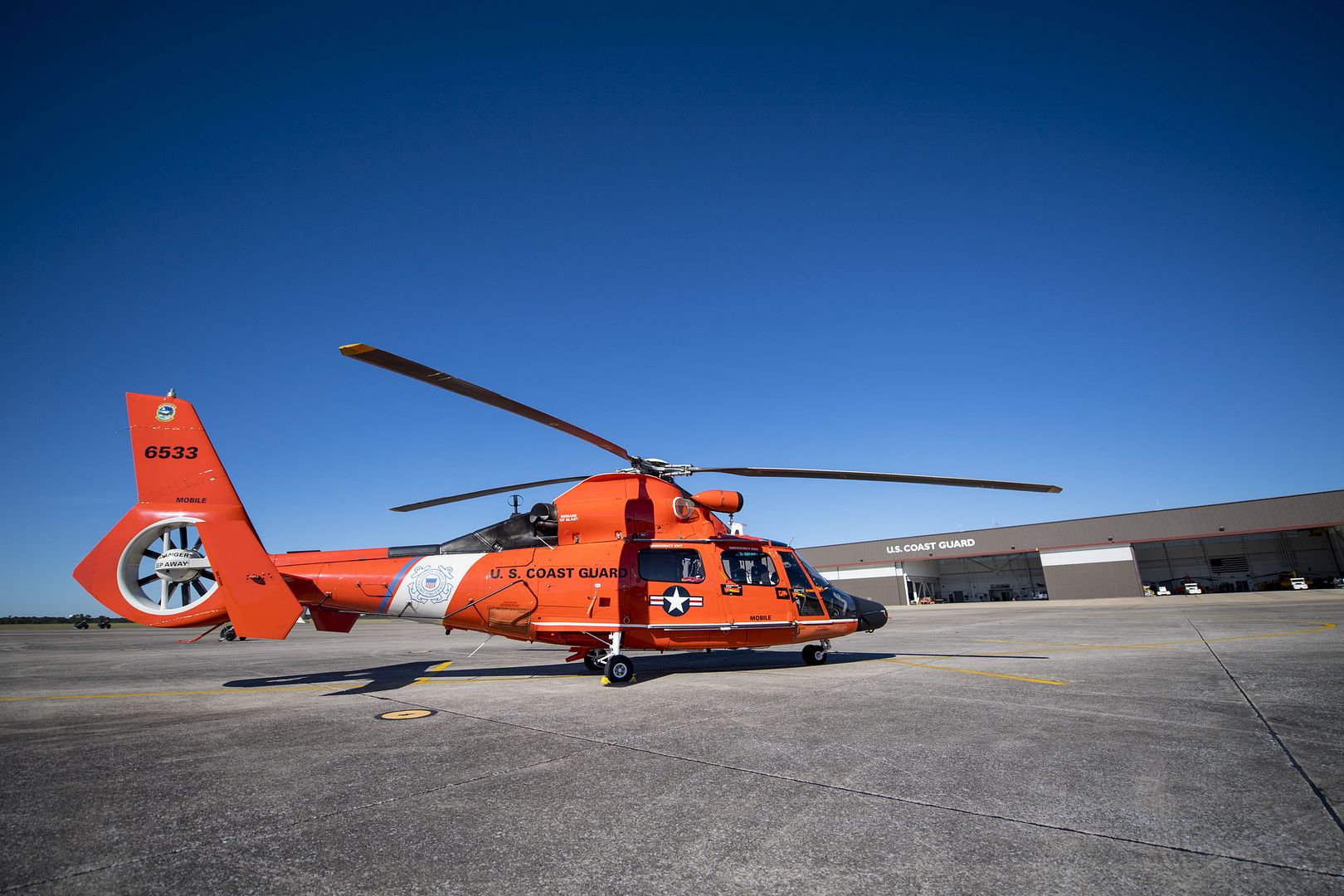
Maintainers check over an HH-60 Pave Hawk rescue helicopter as members of the 106th Rescue Wing, assigned to the New York Air National Guard, prepare to deploy in support of the Hurricane Michael rescue efforts at the 106th Rescue Wing, Westhampton Beach, N.Y., Oct. 10, 2018. The 106th Rescue Wing will send their highly trained Guardsmen to include pararescue, aircrew, maintainers and support, along with HC-130 and HH-60 aircraft and rescue boats. ( U.S. Air National Guard photo's by Capt. Michael O'Hagan)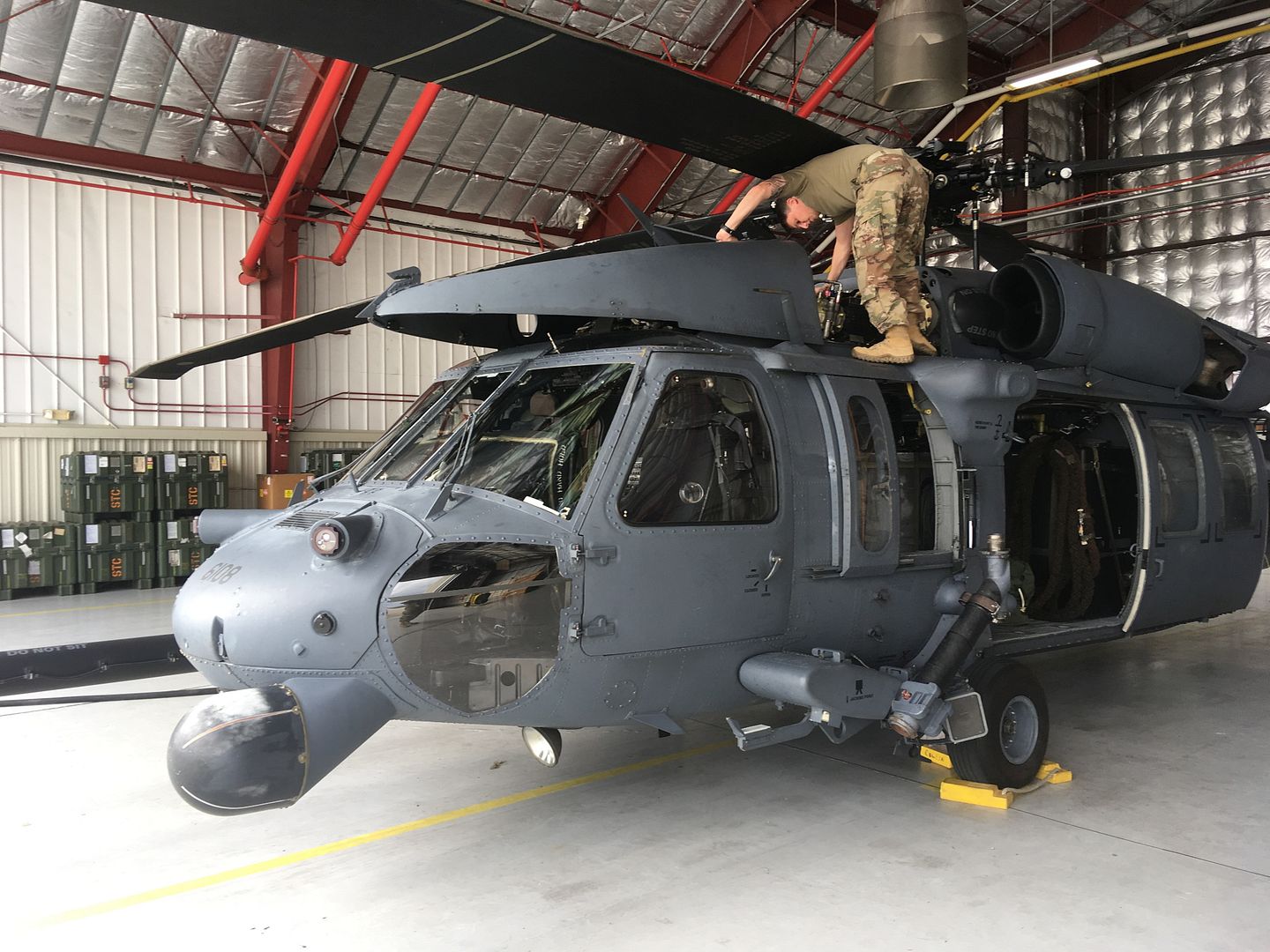
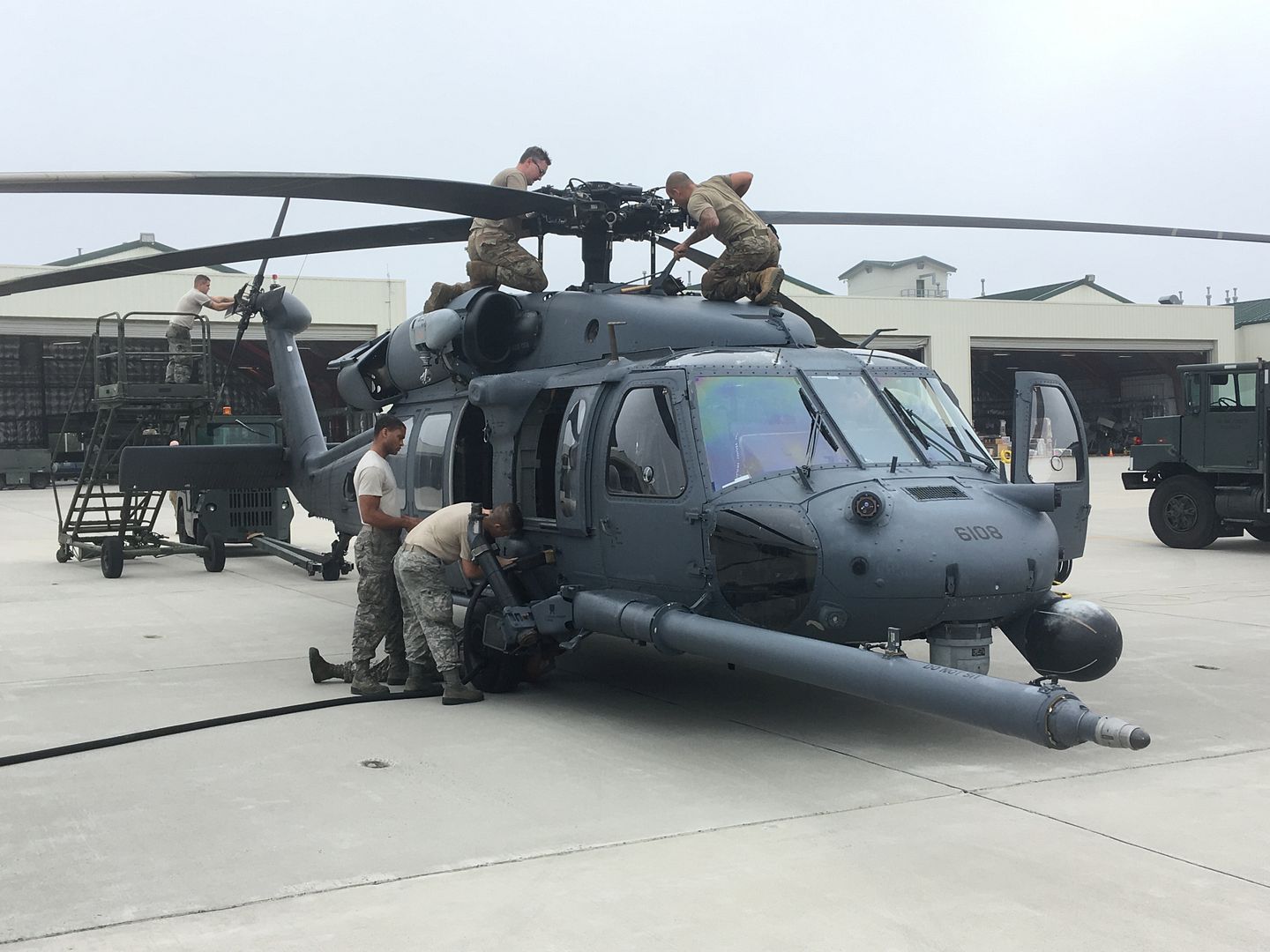
U.S. Marines with 1st Battalion, 3rd Marine Regiment, 3rd Marine Division, use a CH-53E Super Stallion aircraft during Assault Support Tactics 4, as part of Weapons and Tactics Instructors Course 1-19 at Forward Operating Base Laguna, U.S. Army Yuma Proving Grounds, Ariz., Oct. 9, 2018. WTI, a seven week training event hosted by Marine Aviation Weapons and Tactics Squadron 1, emphasizes operational integration of the six functions of Marine Corps aviation in support of a Marine air-ground task force. This year, Marines and Sailors with the Special Purpose Marine Air-Ground Task Force Crisis Response-Central Command 19.1 served as the command element for WTI. (U.S. Marine Corps Photo by Sgt. Justin Huffty)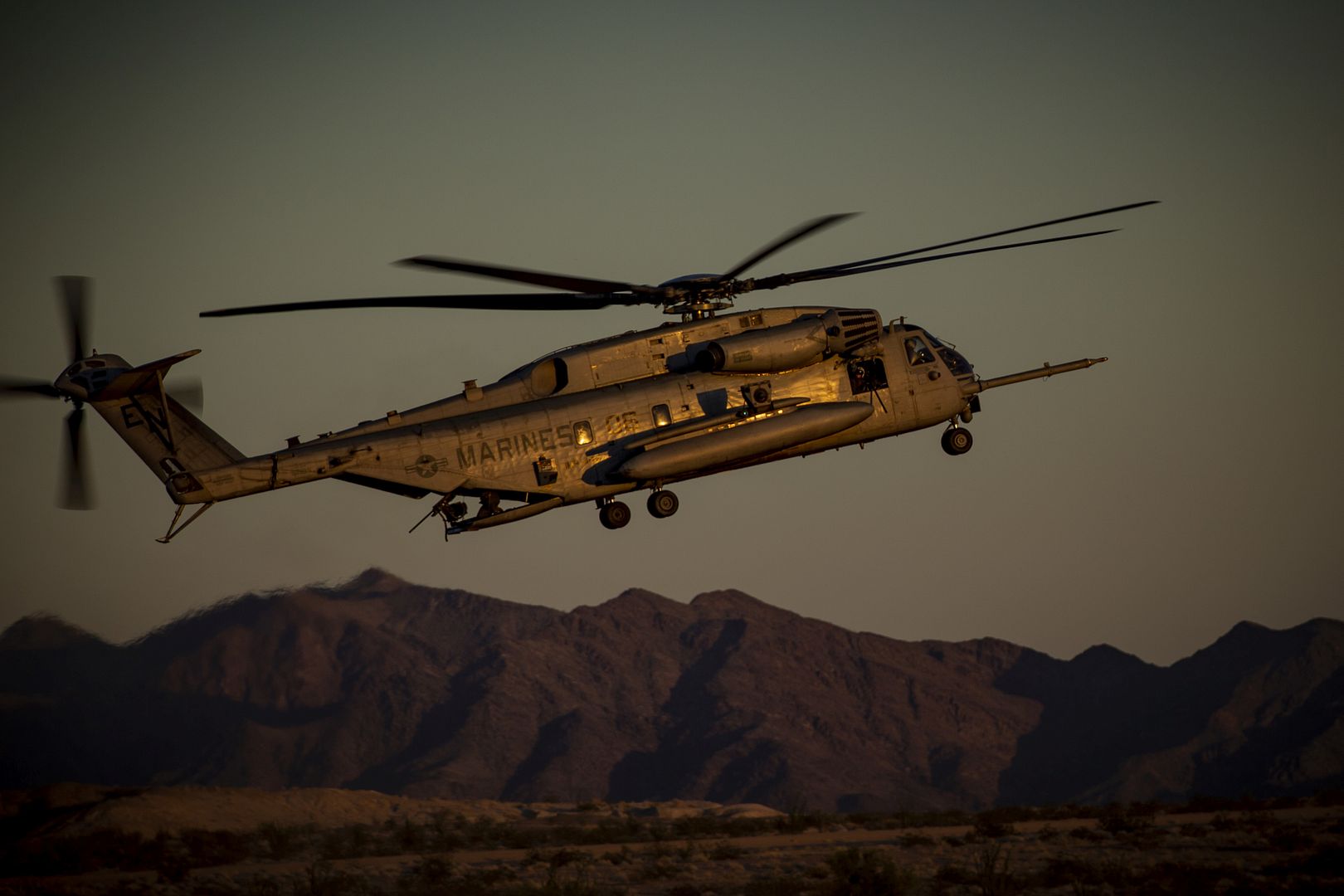
F-15C Eagles assigned to the 493rd Fighter Squadron launch for a joint training sortie with F//A-18 Super Hornets and F-22 Raptors at Royal Air Force Lakenheath, England, Oct. 10, 2018. The training serves as a demonstration of U.S. commitment to European regional security. (U.S. Air Force photo's/ Tech. Sgt. Matthew Plew)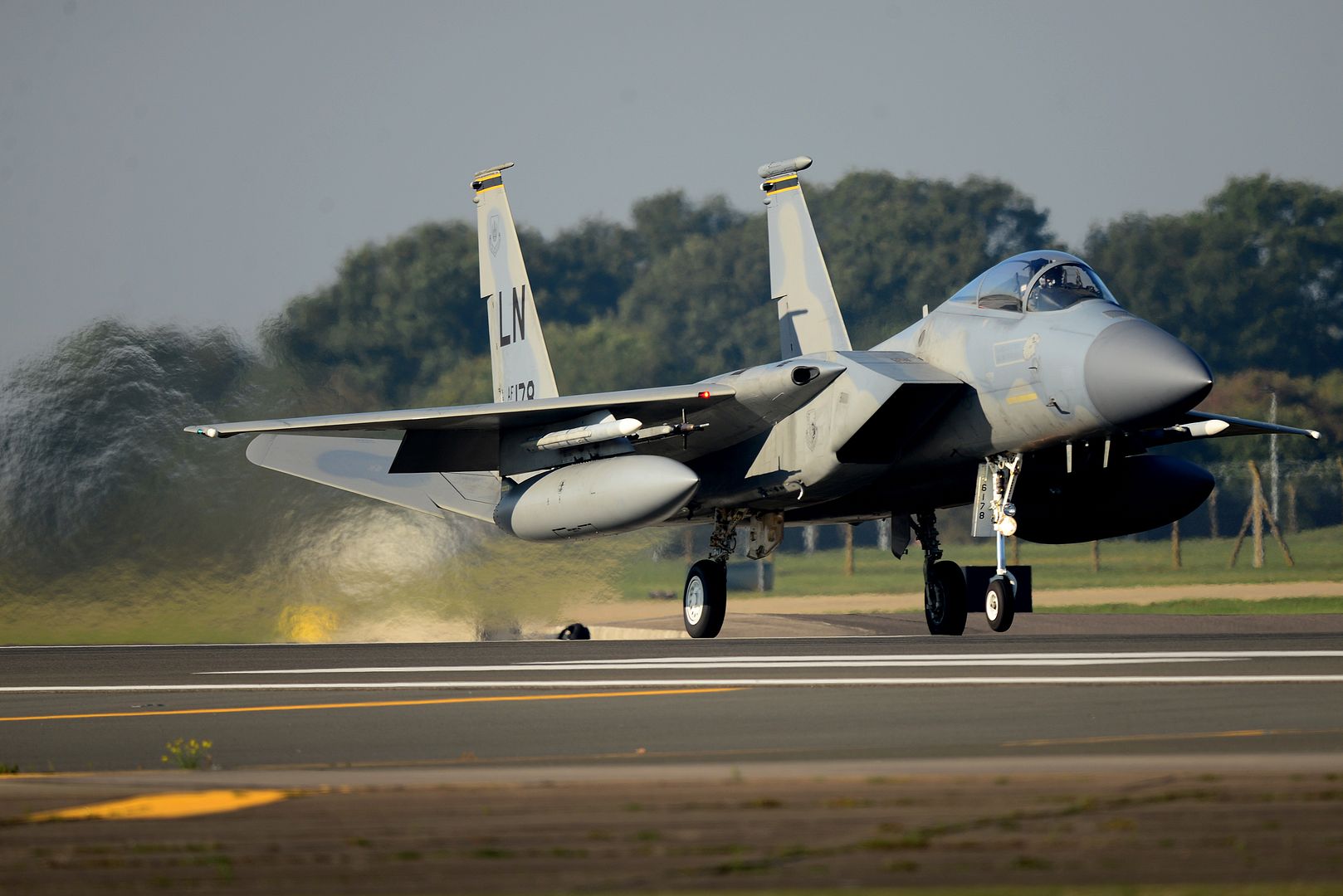
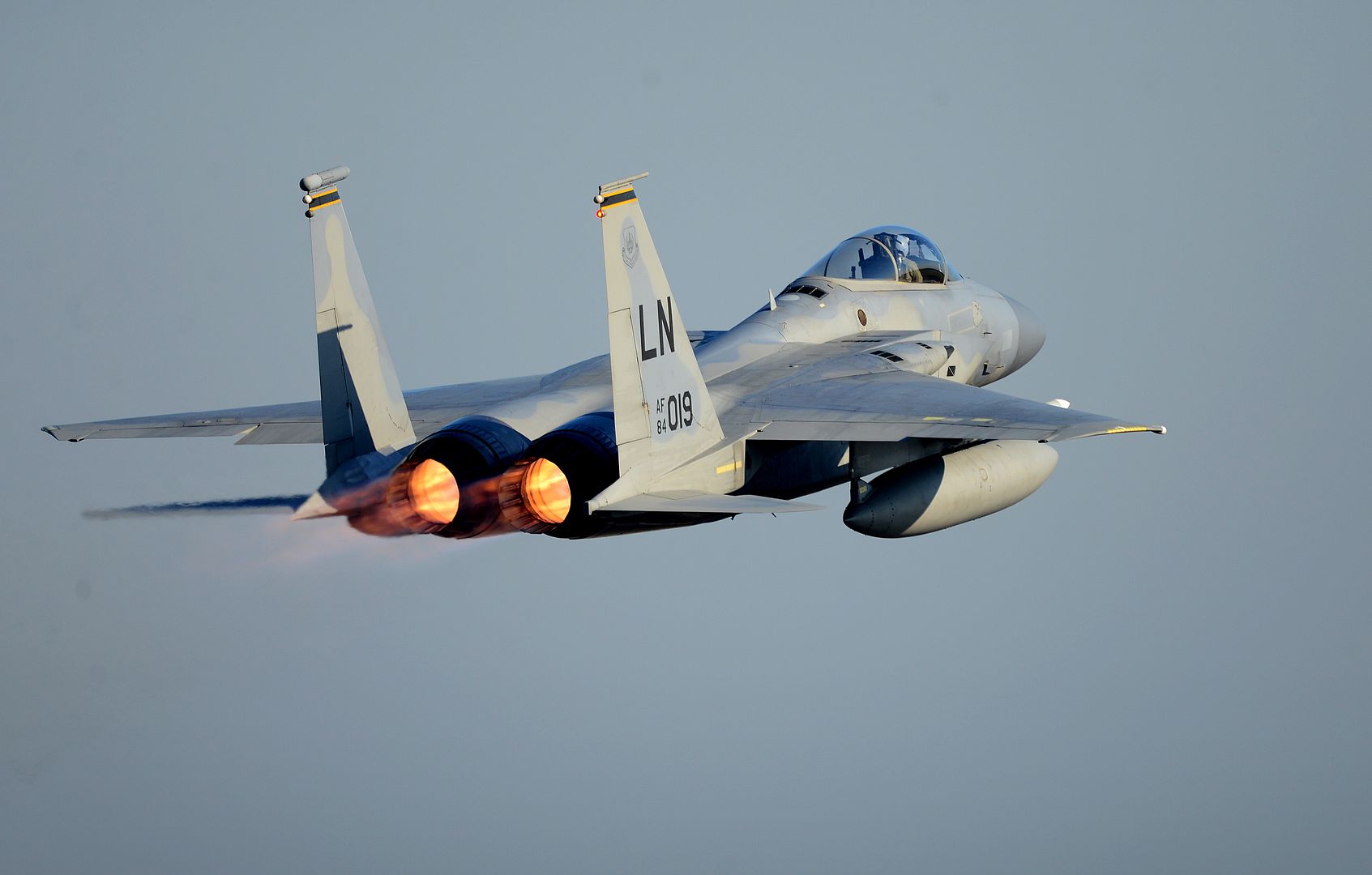
An F-15E Strike Eagle assigned to the 494th Fighter Squadron and a F-22 Raptor assigned to the 1st Fighter Wing, Joint Base Langley-Eustis, Va. launch for a training sortie at Royal Air Force Lakenheath, England, Oct. 10, 2018. The joint training serves as a demonstration of U.S. commitment to European regional security. (U.S. Air Force photo/ Tech. Sgt. Matthew Plew)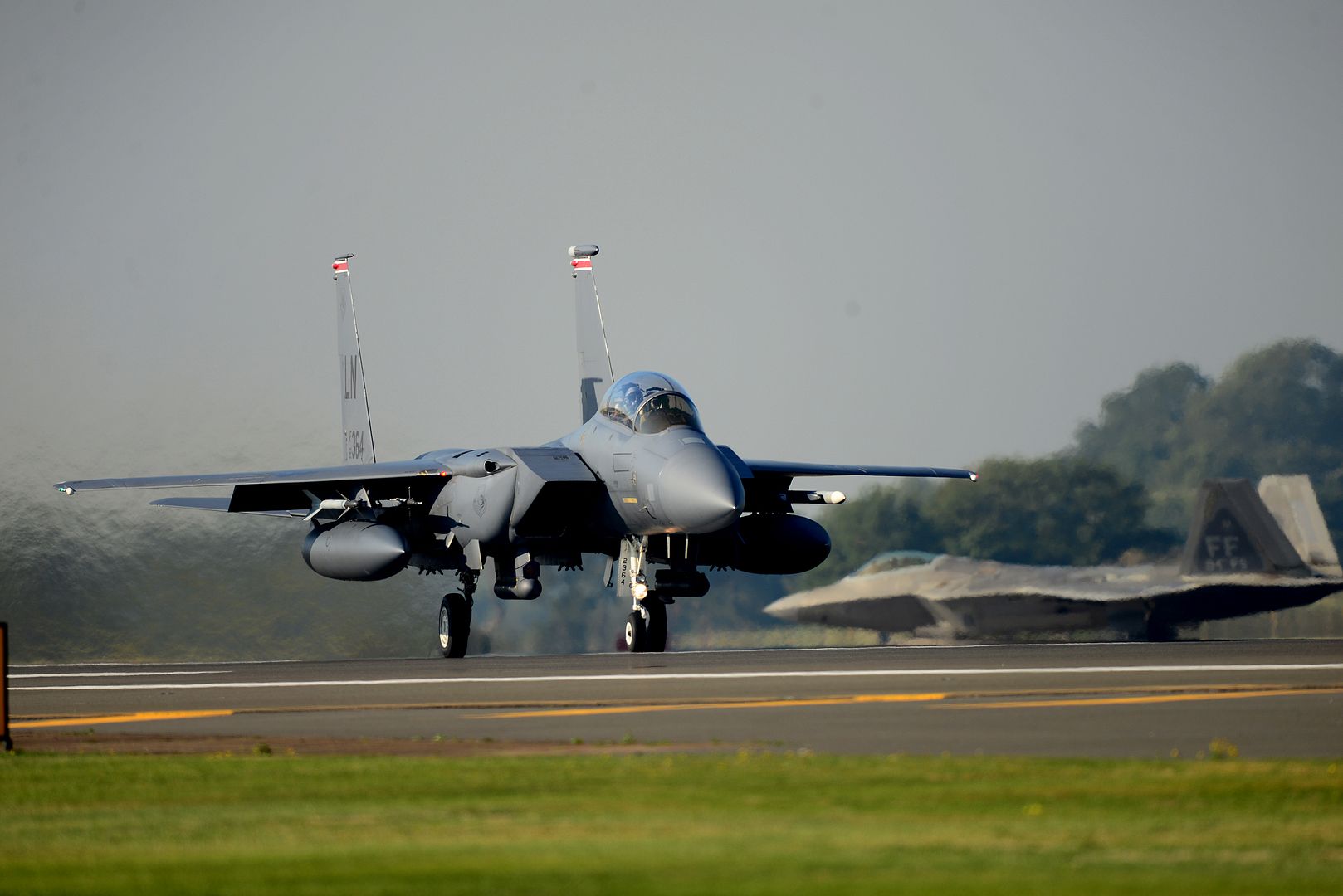
An F-22 Raptor assigned to the 1st Fighter Wing, Joint Base Langley-Eustis, Va. launches for a training sortie at Royal Air Force Lakenheath, England, Oct. 10, 2018. The Raptors are training with U.S. allies and partners as a demonstration of U.S. commitment to European regional security. (U.S. Air Force photo/Tech. Sgt. Matthew Plew)
An F-15E Strike Eagle assigned to the 492nd Fighter Squadron launches for a joint training sortie with F//A-18 Super Hornets and F-22 Raptors at Royal Air Force Lakenheath, England, Oct. 11, 2018. The training serves as a demonstration of U.S. commitment to European regional security. (U.S. Air Force photo/ Tech. Sgt. Matthew Plew)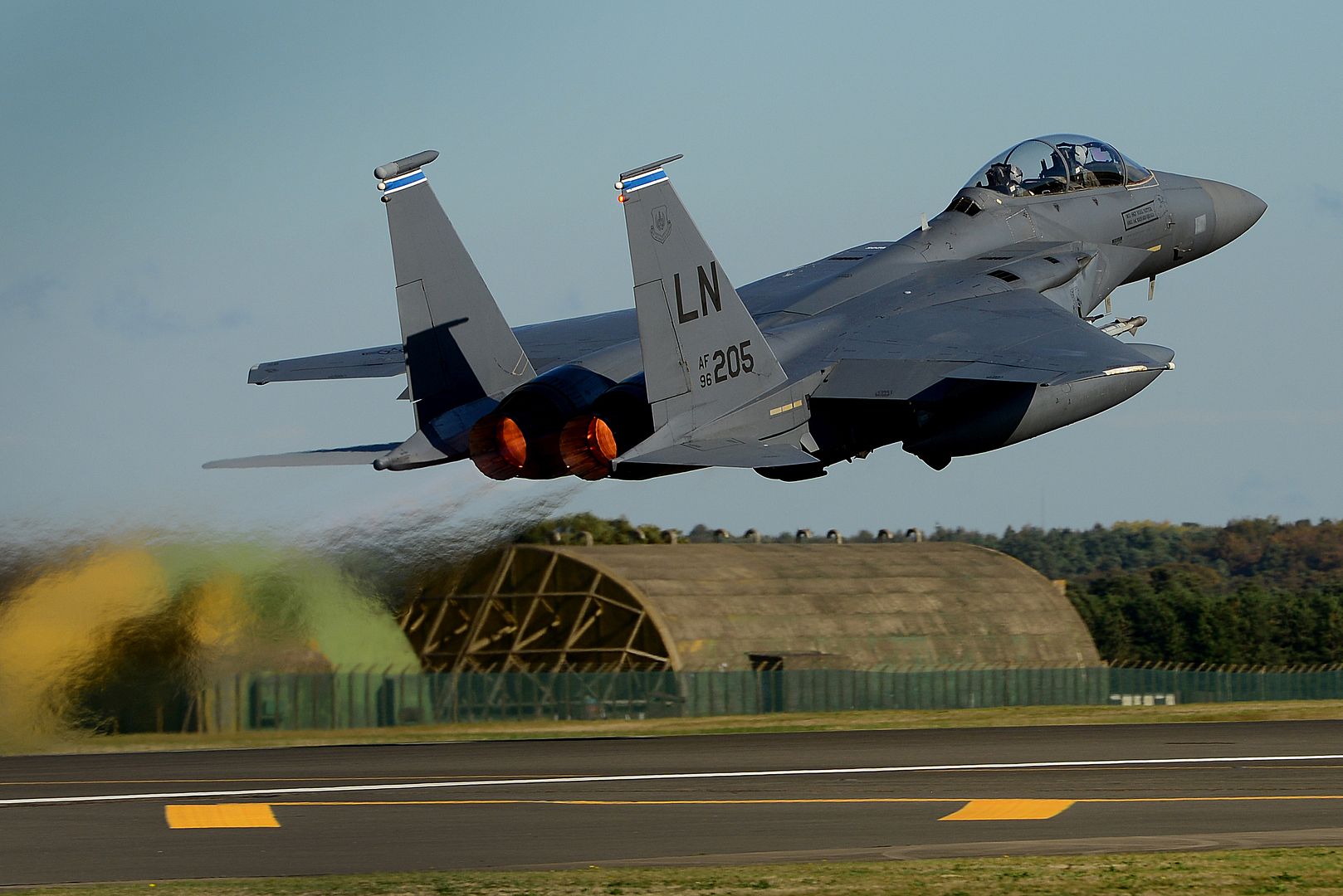
An F/A-18F Super Hornet assigned to Carrier Air Wing One (CVW-1), deployed from the Nimitz-class aircraft carrier USS Harry S. Truman (CVN 75) launches for a training sortie at Royal Air Force Lakenheath, England, Oct. 10, 2018. The carrier is currently operating in the U.S. 6th Fleet area of operations, fostering cooperation with regional allies and partners, strengthening regional stability, and remaining vigilant, agile and dynamic. (U.S. Air Force photo/ Tech. Sgt. Matthew Plew)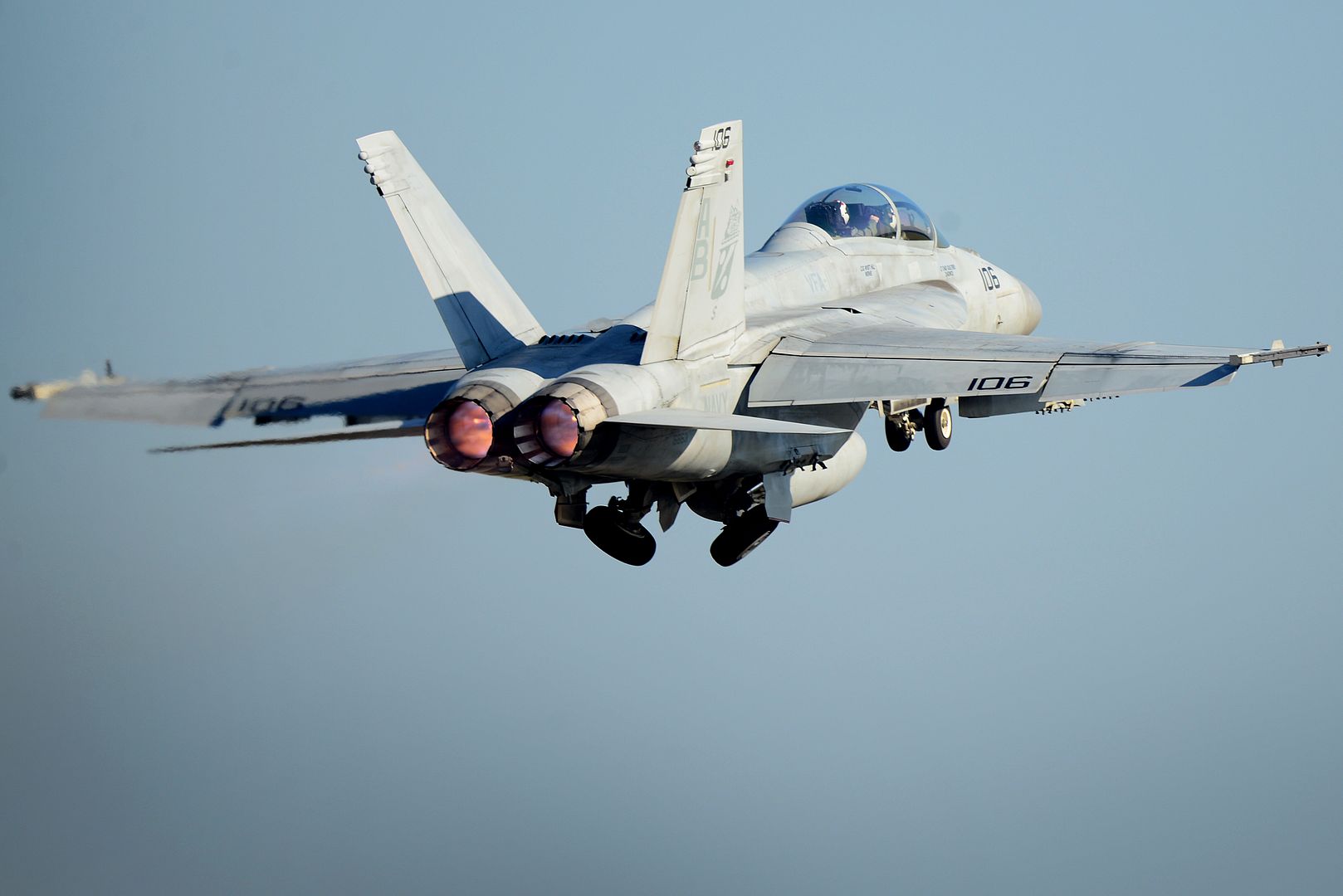
A U.S. Air Force F-16C Fighting Falcon assigned to the 18th Aggressor Squadron (AGRS) flies beside the wing of a KC-135 Stratotanker assigned to the 168th Air Refueling Squadron in the Joint Pacific Alaska Range Complex Oct. 8, 2018, during RED FLAG-Alaska 19-1. The 18th AGRS plays the role of the opposing force in RF-A, providing training for other units participating in the exercise. (U.S. Air Force photo by Airman Aaron Guerrisky)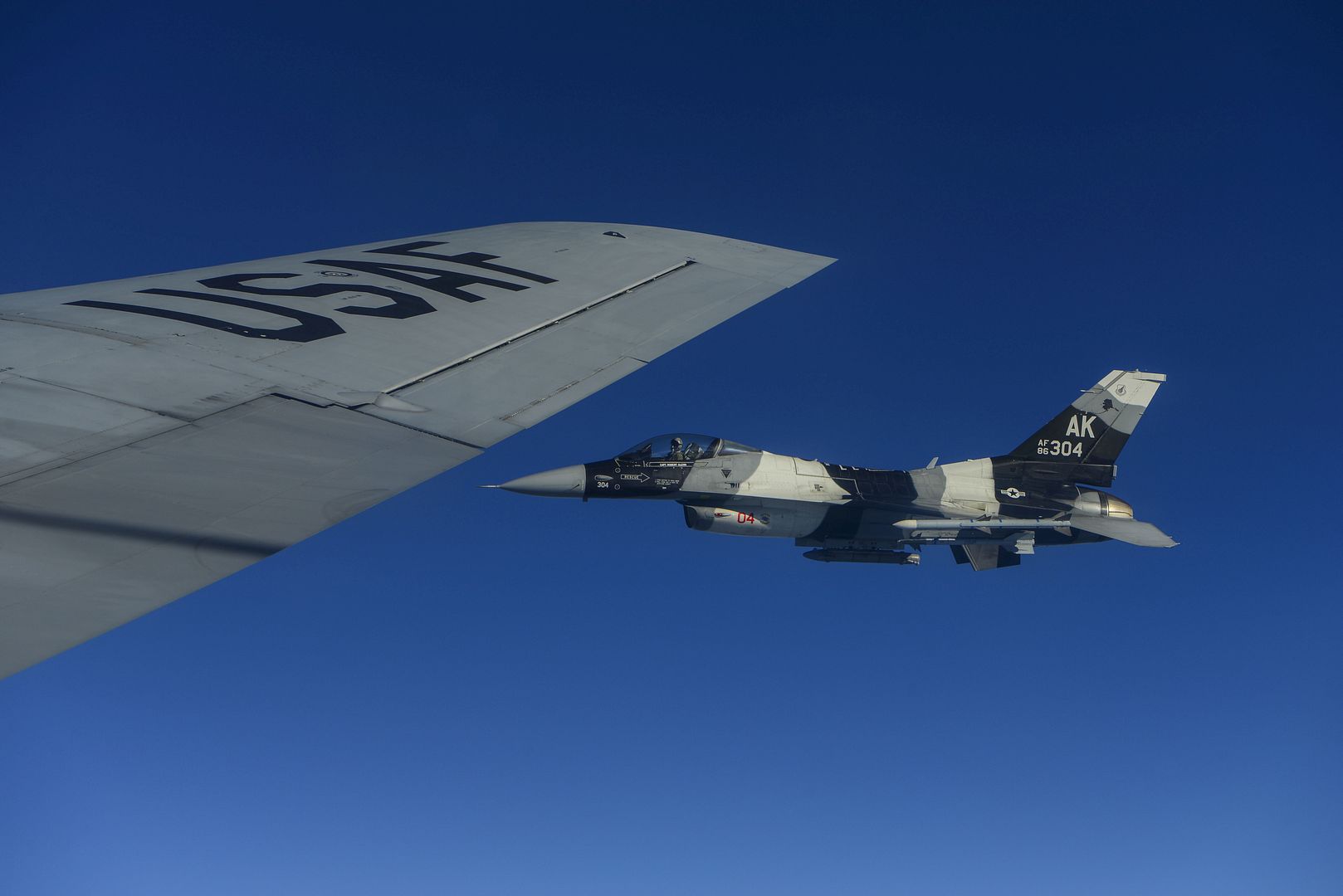
Helibras announced the delivery of two H135 helicopters to L?der Avia??o. The contract was signed at the beginning of the second half of this year and includes the provision of helicopters configured for offshore operations such as passenger transport and medical evacuation missions in the Oil & Gas market.
"Flexibility, reduced maintenance and lower operating costs make the H135 the perfect helicopter for offshore operations. We believe that this versatile twin engine will be a major enhancement to L?der's broad fleet,? said Richard Marelli, president of Helibras.
As one of Airbus Helicopters' most successful lightweight helicopters, the H135 is known for its high strength, compact construction, low noise levels, versatility and low costs. The model can perform several missions, landing in virtually any location, particularly in "high & hot" conditions, while carrying more cargo over long distances than any other aircraft in its category.
According to Junia Hermont, the supervisory director of L?der Avia??o, the two helicopters will further diversify the fleet and add further expertise to the company, which has more than 40 years of service in the oil and gas market. "We are pleased with this acquisition and have already trained the entire team in the operation of this aircraft model."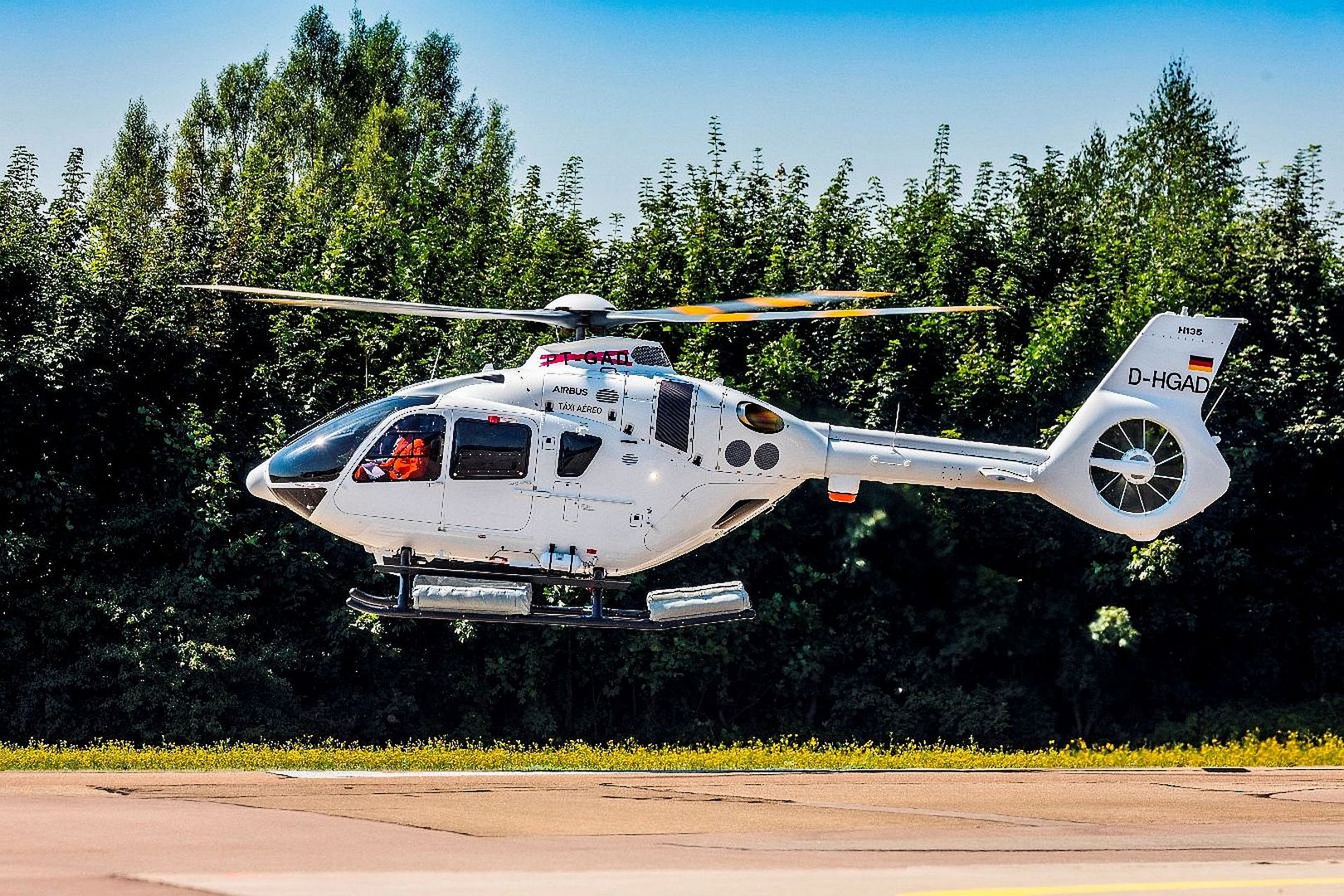
An RAF C-17 Globemaster has arrived at Gao airfield in Mali for the first time to deliver supplies to the RAF Chinook Detachment currently deployed supporting French operations there.
The arrival of the C-17 marks the first time that the RAF have been able to directly support the Gao based Chinooks since they deployed in June this year. Previously, supplies have been flown to neighbouring Niger and then transhipped. The C-17 flight signals an intent to now supply the detachment with monthly direct flights.
The RAF Chinook detachment is deployed over 3,000 miles away in Mali and relies on both RAF and French transport support to get supplies.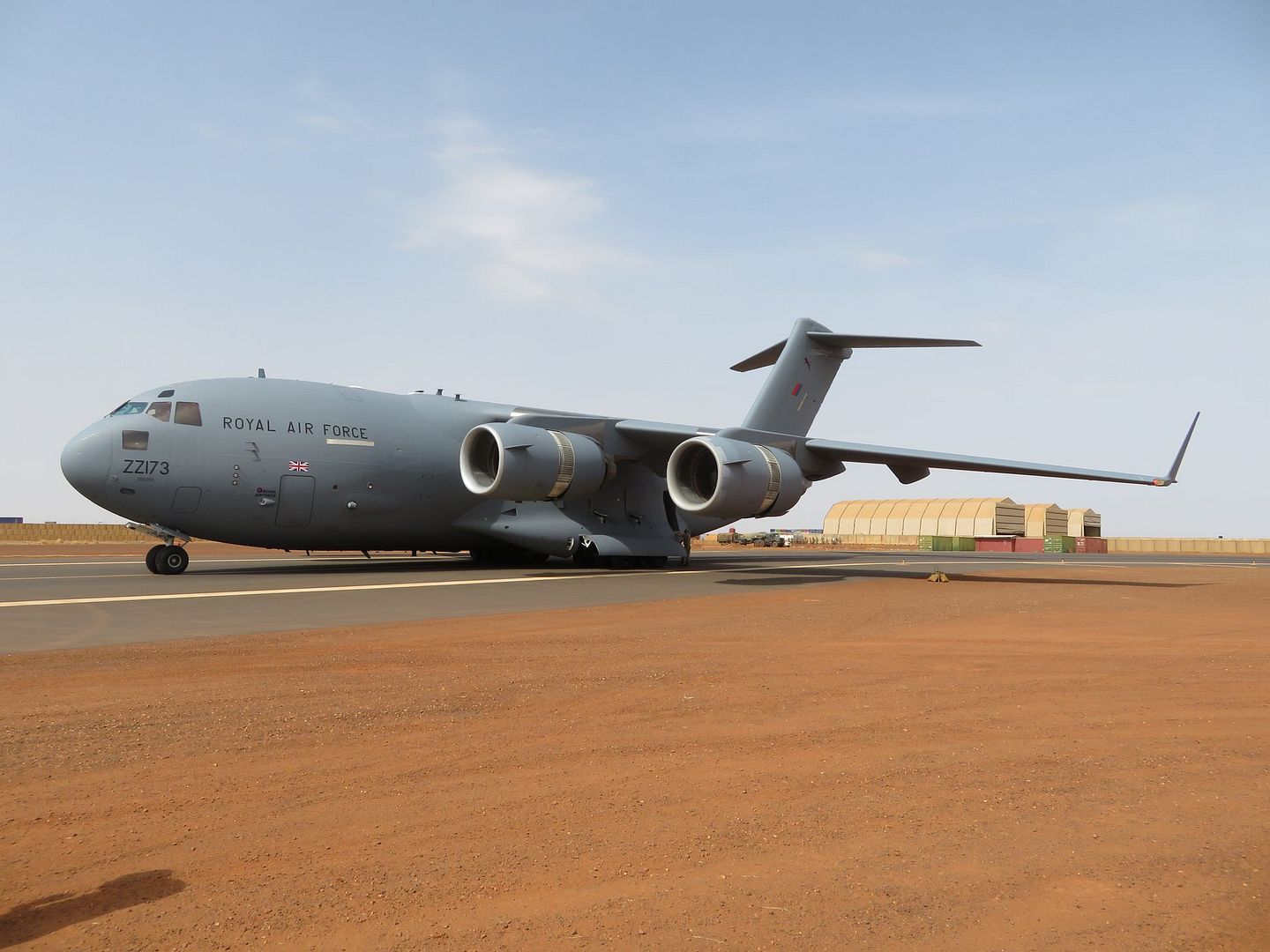
-
 Main AdminAn F-15C Eagle assigned to the 493rd Fighter Squadron launches for a sortie Oct. 11, 2018, at Royal Air Force Lakenheath, England. The aircraft is training with 5th generation aircraft as a demonstration of U.S. commitment to European regional security. (U.S. Air Force photo/Senior Airman Malcolm Mayfield)
Main AdminAn F-15C Eagle assigned to the 493rd Fighter Squadron launches for a sortie Oct. 11, 2018, at Royal Air Force Lakenheath, England. The aircraft is training with 5th generation aircraft as a demonstration of U.S. commitment to European regional security. (U.S. Air Force photo/Senior Airman Malcolm Mayfield)
An F/A-18F Super Hornet assigned to the Carrier Air Wing 1 (CVW-1), deployed from the Nimitz-class aircraft carrier USS Harry S. Truman (CVN 75) launches for a sortie Oct. 11, 2018, at Royal Air Force Lakenheath, England. The carrier is currently operating in the U.S. 6th Fleet area of operations, fostering cooperation with regional allies and partners, strengthening regional stability, and remaining vigilant, agile and dynamic. (U.S. Air Force photo/Senior Airman Malcolm Mayfield)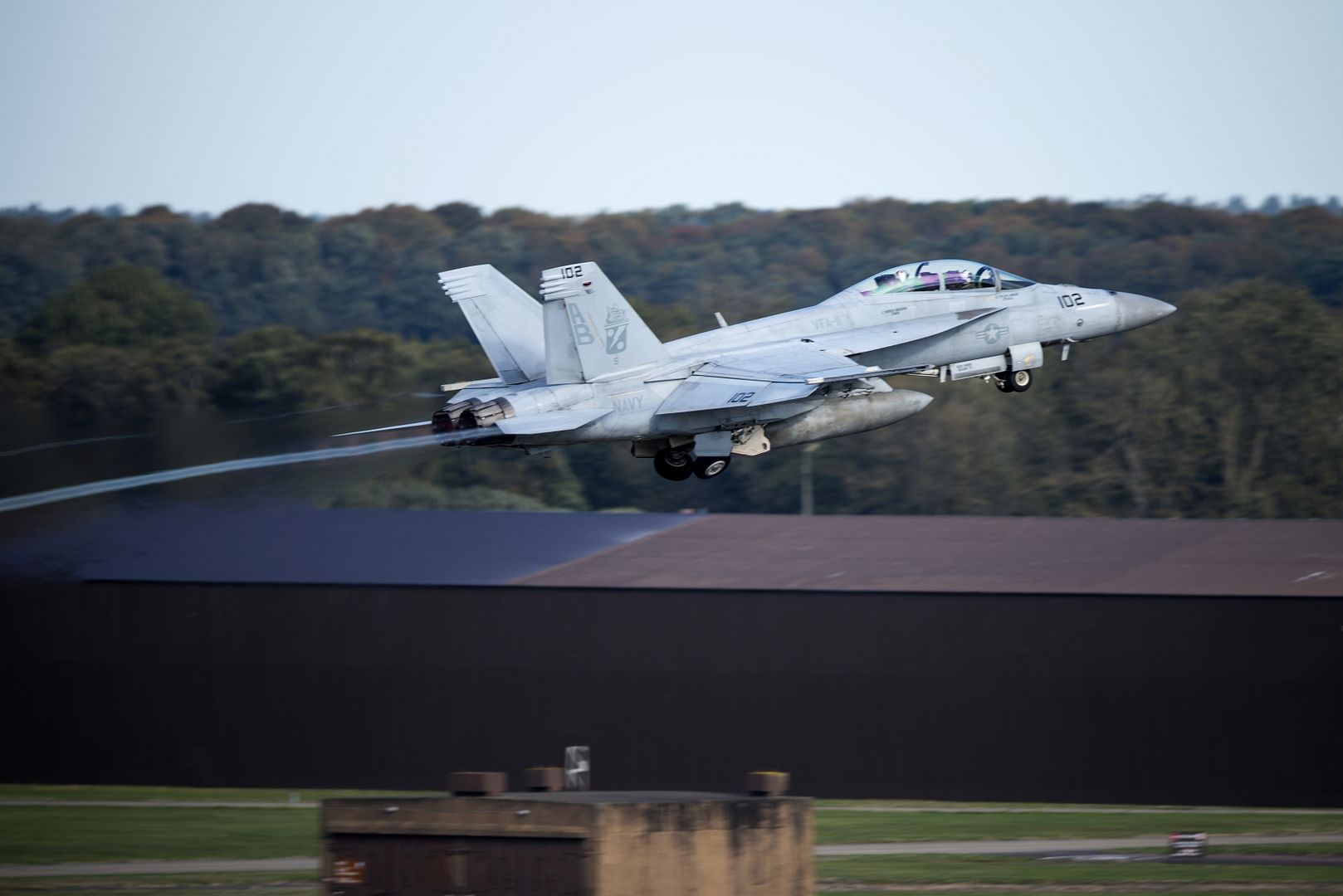
An F-15E Strike Eagle assigned to the 492rd Fighter Squadron launches for a sortie Oct. 11, 2018, at Royal Air Force Lakenheath, England. The aircraft is training with 5th generation aircraft as a demonstration of U.S. commitment to European regional security. (U.S. Air Force photo/Senior Airman Malcolm Mayfield)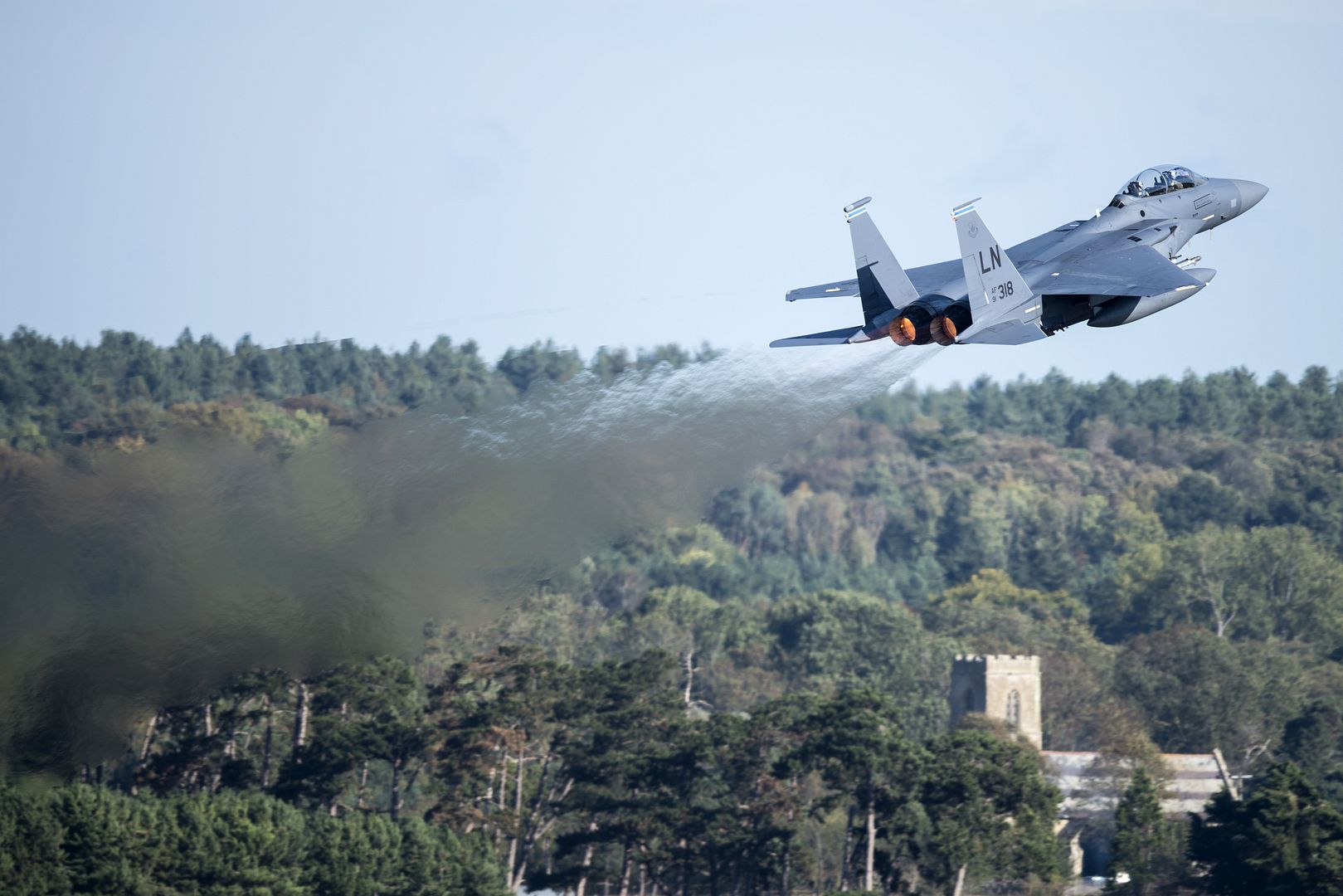
U.S. Air Force Reserve A-10 Thunderbolt aircraft takeoff while C-17 Globemaster III aircraft, not pictured, are staged at Davis-Monthan Air Force Base, Arizona, Oct. 11, 2018. The C-17s were from Travis AFB, California, and Joint Base Lewis-McCord, Washington, and were staging at Davis-Monthan to deliver search and rescue capabilities in the wake of Hurricane Michael relief efforts at the request of civil authorities. (U.S. Air Force Photo by Master Sgt. Joseph Swafford)
U.S. Air Force Special Tactics Airmen with the 23rd Special Tactics Squadron unload an all-terrain vehicle from a CV-22 Osprey tiltrotor aircraft assigned to the 8th Special Operations Squadron at Tyndall Air Force Base, Florida, Oct. 11, 2018. Special Tactics are prepared to assess, open, and control major airfields to provide support during humanitarian operations. (U.S. Air Force photo by Senior Airman Joseph Pick)
JACKSONVILLE, Fla. (Oct. 11, 2018) E-2C Hawkeye aircraft wait on the Naval Air Station Jacksonville flight line, Oct. 11, 2018, to possibly assist with coordinating relief efforts in the Florida Panhandle region in the aftermath of Hurricane Matthew. The Hawkeyes are an airborne early warning command and control platform from Carrier Airborne Early Warning Squadron (VAW) 123 and VAW-124 aboard Naval Station Norfolk. U.S. Navy and Marine Corps personnel and assets will be prepared to provide Defense Support to Civilian Authorities (DSCA), if requested through U.S. Northern Command in response to Hurricane Michael relief efforts. (U.S. Navy photo's by Reggie Jarrett/Released)

PACIFIC OCEAN (Oct. 09, 2018) An E-2C Hawkeye assigned to the "Black Eagles" of Carrier Airborne Early Warning Squadron (VAW) 113 makes an arrested landing on the flight deck of Nimitz-class aircraft carrier USS Carl Vinson (CVN 70). (U.S. Navy photo by Mass Communication Specialist Seaman Ethan J. Soto/Released)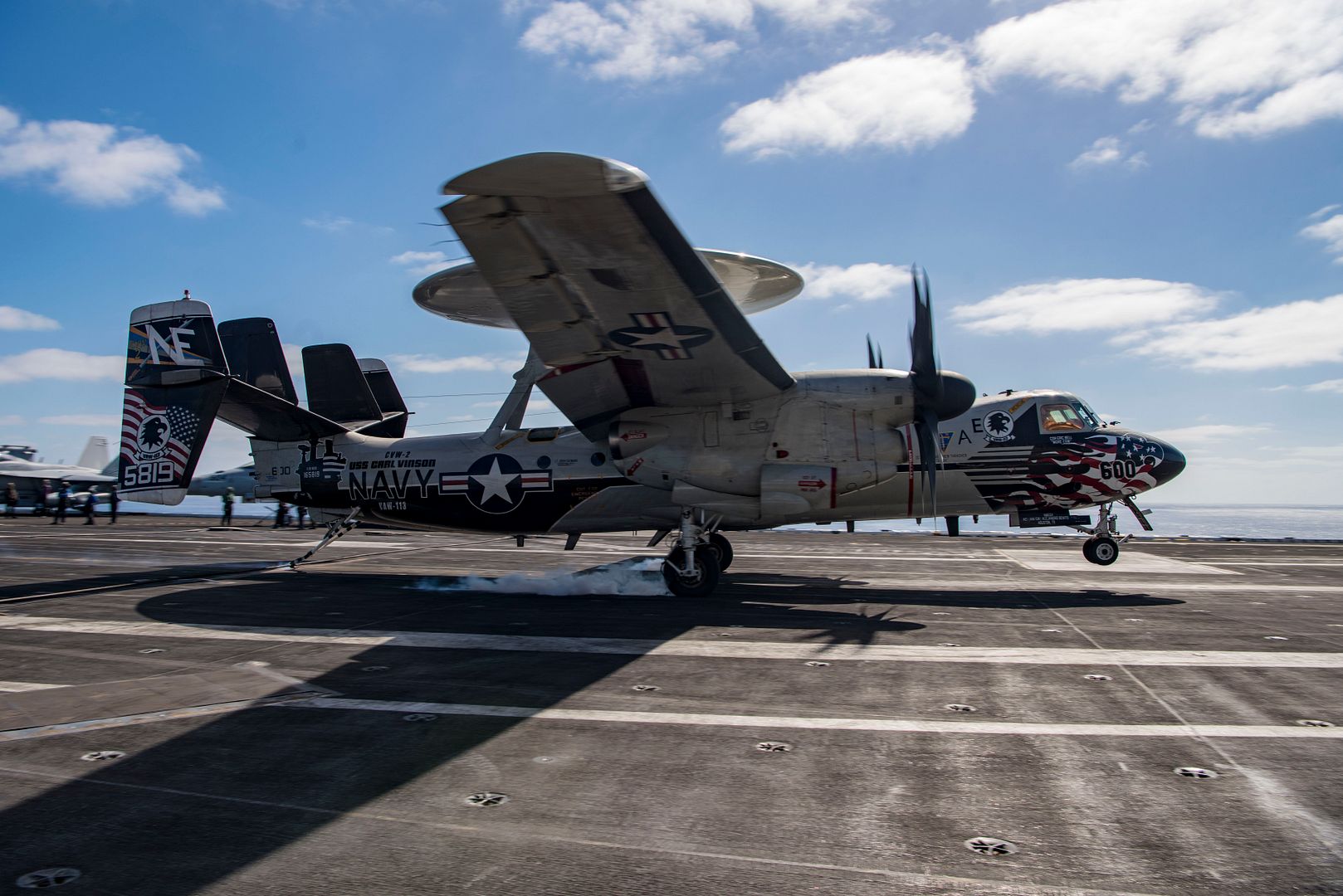
SEATTLE, Oct. 12, 2018 /PRNewswire/ -- Boeing [NYSE: BA] and SpiceJet celebrated the delivery of the carrier's first 737 MAX 8. The airline plans to use the 737 MAX to expand and standardize its fleet, while leveraging the super-efficient jet to reduce fuel costs per airplane by $1.5 million a year.
SpiceJet's first 737 MAX 8 takes-off from Boeing Field in Seattle, Washington (Craig Larson photo).
"We are excited to take delivery of our very first 737 MAX 8," said SpiceJet Chairman and Managing Director Ajay Singh. "The induction of our first MAX is a huge milestone in SpiceJet's journey. These new airplanes will enable us to open new routes, while reducing fuel and engineering costs, as well as emissions. The 737 MAX will dramatically reduce noise pollution and greenhouse gas emissions. Passengers will benefit from a large number of premium seats and, for the first time in India, broadband internet on board."
This is the first of up to 205 737 MAX airplanes SpiceJet has announced with Boeing. The new and improved single-aisle airplane will help SpiceJet lower its emissions output, which is a key initiative for the carrier as it looks to increase regional and international routes.
SpiceJet's new 737 MAX airplanes arrive at a time when India's commercial aviation market continues to grow at significant rates. According to industry data, domestic air traffic in India has grown about 20 percent in each of the past four years with an upward growth trajectory going forward.
"India is a fast growing market for commercial airplanes and services," said Ihssane Mounir, senior vice president of Commercial Sales & Marketing for The Boeing Company. "The 737 MAX for SpiceJet is the perfect airplane for this market and it will become a key ingredient for long-term success, especially as oil prices continues to put pressure on airlines. The market-leading efficiency and reliability of the MAX will pay immediate dividends for SpiceJet's commercial operations."
In preparation for their new 737 MAX, SpiceJet signed up to leverage Boeing Global Services' tailored flight simulator and maintenance training, which will help train SpiceJet's world-class pilots and mechanics in all areas of 737 MAX flight operations, resulting in maximized cost-savings. The airline also employs Onboard Performance Tool, powered by Boeing AnalytX, which allows flight crews and ground personnel to perform real-time calculations based on current weather and runway conditions, improving efficiency and maximizing payloads.
The 737 MAX 8 is part of a family of airplanes that offer about 130 to 230 seats and the ability to fly up to 3,850 nautical miles (7,130 kilometers) or nearly eight hours of flight. For SpiceJet's full fleet of up to 205 airplanes, the MAX will emit up to 750,000 fewer metric tons of CO2 and save up to 240,000 metric tons of fuel per year, which translates to more than $317 million in cost savings annually*.
In addition, the MAX 8, will have the lowest operating costs in the single-aisle market with an 8 percent per-seat advantage over the competition. The operating advantages, along with the popular Boeing Sky Interior, explains why carriers have been choosing to fly the MAX.
The 737 MAX is the fastest-selling airplane in Boeing history, accumulating more than 4,700 orders from 104 customers worldwide.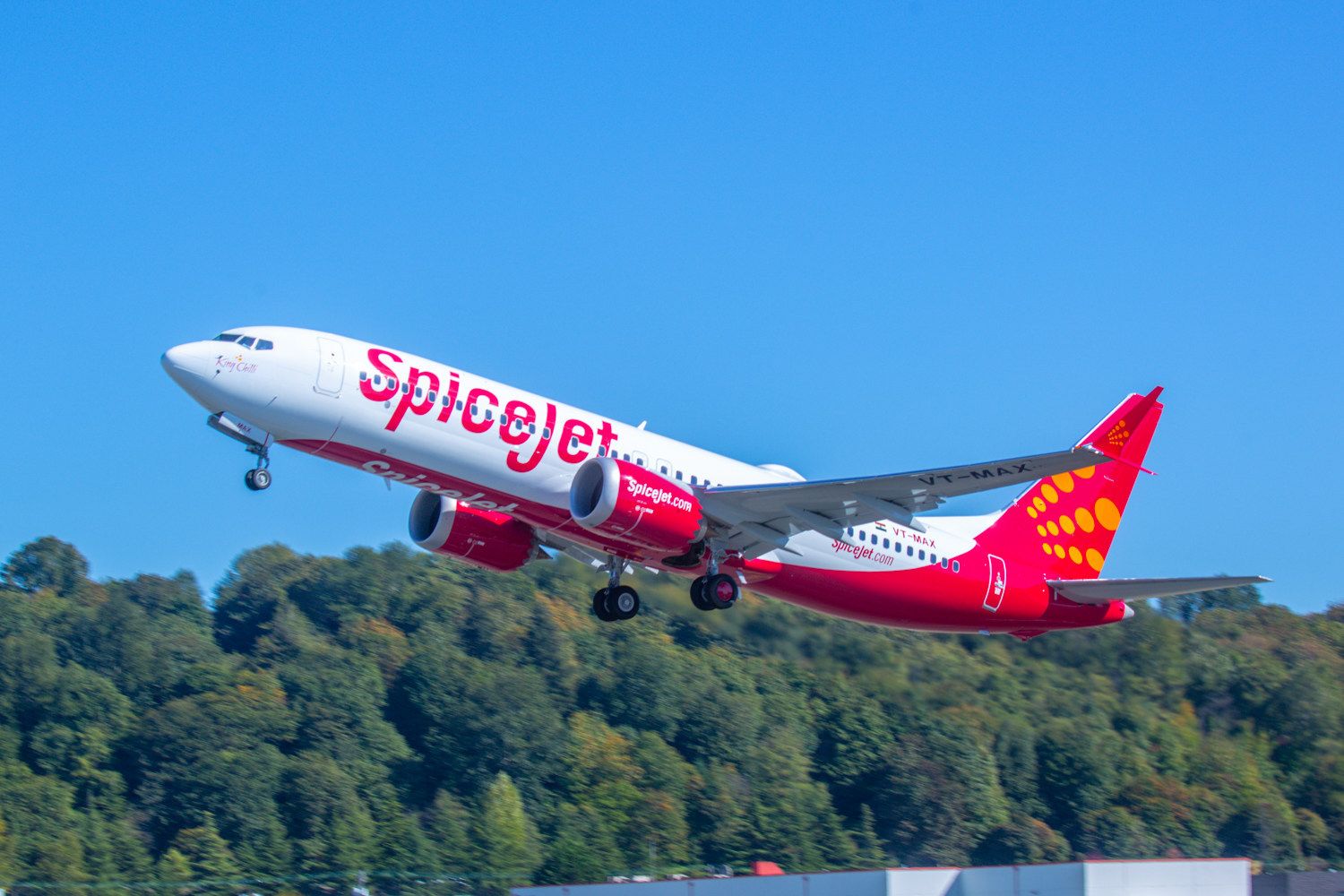
Singapore Airlines has ushered in a new generation of long-haul travel with its first A350-900 Ultra Long Range (ULR), which is now being operated on the world?s longest commercial route ? Singapore-New York ? covering a distance of nearly 9,000 nautical miles.
The A350-900ULR?s extended range is up to 9,700 nautical miles (18,000 km.), incorporating a modified fuel system that increases the aircraft?s fuel carrying capacity by 24,000 litres without the need for additional fuel tanks.
Singapore Airlines has ordered seven A350-900ULRs, which also will be deployed on non-stop routes from Singapore to Los Angeles and San Francisco. These aircraft will join the carrier?s growing fleet of A350 XWBs, which are used primarily on long-haul flights.
With a maximum take-off weight (MTOW) of 280 tonnes, the A350-900ULR is capable of flying over 20 hours non-stop, combining the highest levels of passenger and crew comfort (including an additional rest area for cockpit and cabin crews) with unbeatable economics for such distances.
As with the other models in the A350 XWB Family, A350-900ULR has a wide cabin with more personal space and the quietest interior noise levels of any twin-aisle jetliner. In addition, the cabin altitude is optimised at the equivalent of 1,800 metres above sea level (25 percent less than in aluminium-fuselage aircraft). This, combined with the latest draft-free air conditioning system, leads to a less dry cabin environment and reduces passenger fatigue.
The A350 XWB also features an advanced temperature management system that allows settings to be controlled more precisely by zones in the cabin and crew areas. And a state-of-the-art ambient LED lighting system capable of producing over 16 million colour combinations enables realistic simulations of different times of the day, such as sunrise or sunset, helping passengers to acclimatise to different time zones.
Airbus? Ultra Long Range A350 XWB builds on the success of its A350 XWB ? the newest and most modern widebody aircraft family, incorporating the latest aerodynamic design, carbon fibre fuselage and wings, plus fuel-efficient Rolls-Royce engines. Together, these latest technologies translate into unrivalled levels of operational efficiency, with a 25 per cent reduction in fuel consumption and emissions, and significantly lower maintenance costs.
The A350 XWB features the Airspace by Airbus cabin, which brings enhanced comfort and well-being on long flights. The aircraft has the quietest cabin of any twin-aisle widebody and features the latest environmental control and mood lighting systems, as well as the latest in-flight entertainment and Wi-Fi systems.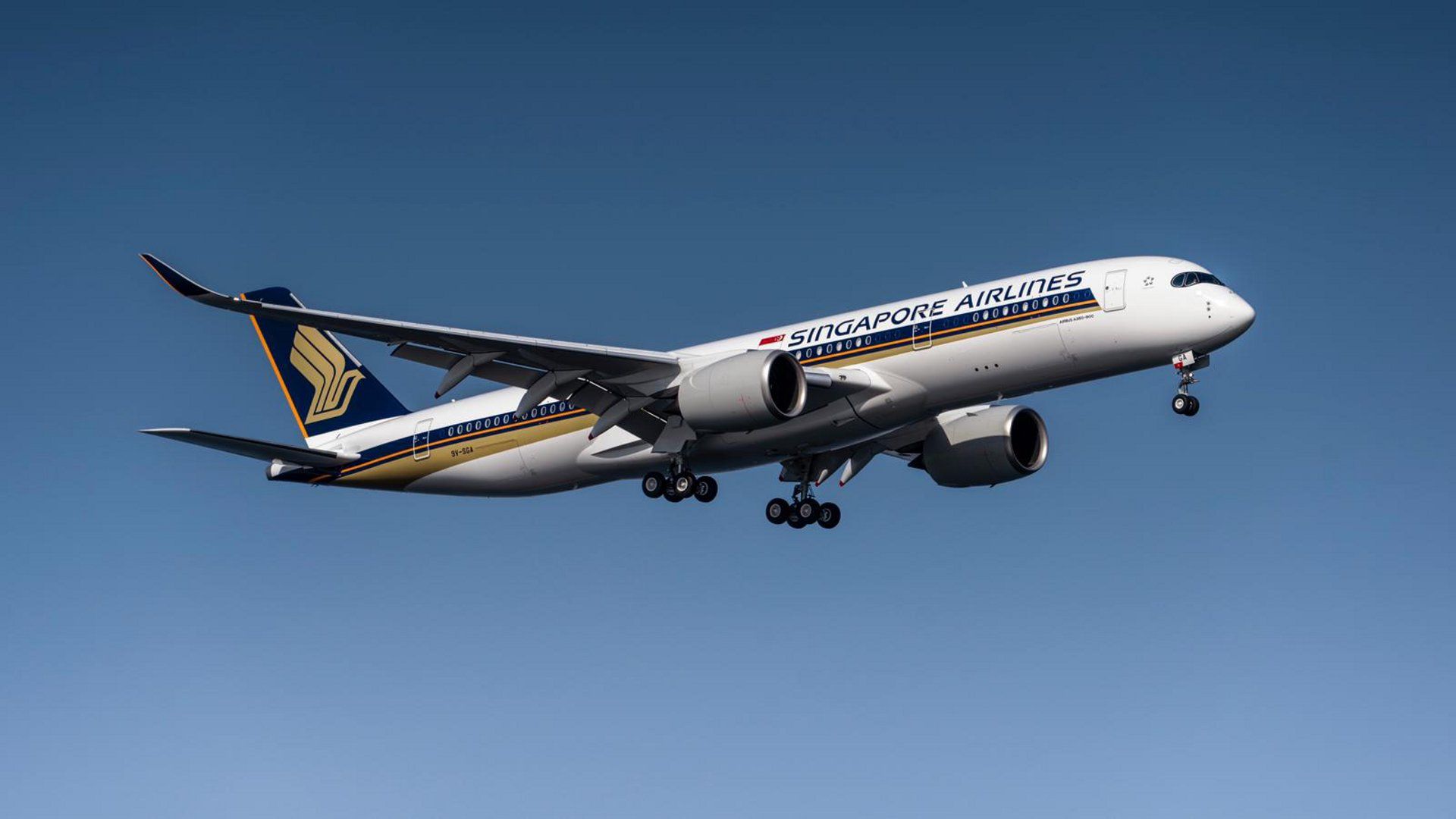
France 12-10-2018
A few days after her arrival in the air force, the A330 mrtt "Phoenix" made her first flight from the Base A?rienne 125 Istres-Page today .
Post a reply
- Go to Previous topic
- Go to Next topic
- Go to Welcome
- Go to Introduce Yourself
- Go to General Discussion
- Go to Screenshots, Images and Videos
- Go to Off topic
- Go to Works in Progress
- Go to Skinning Tips / Tutorials
- Go to Skin Requests
- Go to IJAAF Library
- Go to Luftwaffe Library
- Go to RAF Library
- Go to USAAF / USN Library
- Go to Misc Library
- Go to The Ops Room
- Go to Made in Germany
- Go to Campaigns and Missions
- Go to Works in Progress
- Go to Juri's Air-Raid Shelter
- Go to Campaigns and Missions
- Go to Works in Progress
- Go to Skinpacks
- Go to External Projects Discussion
- Go to Books & Resources
